Artists
Artists 61 to 90 of 91:
Picasso, Pablo
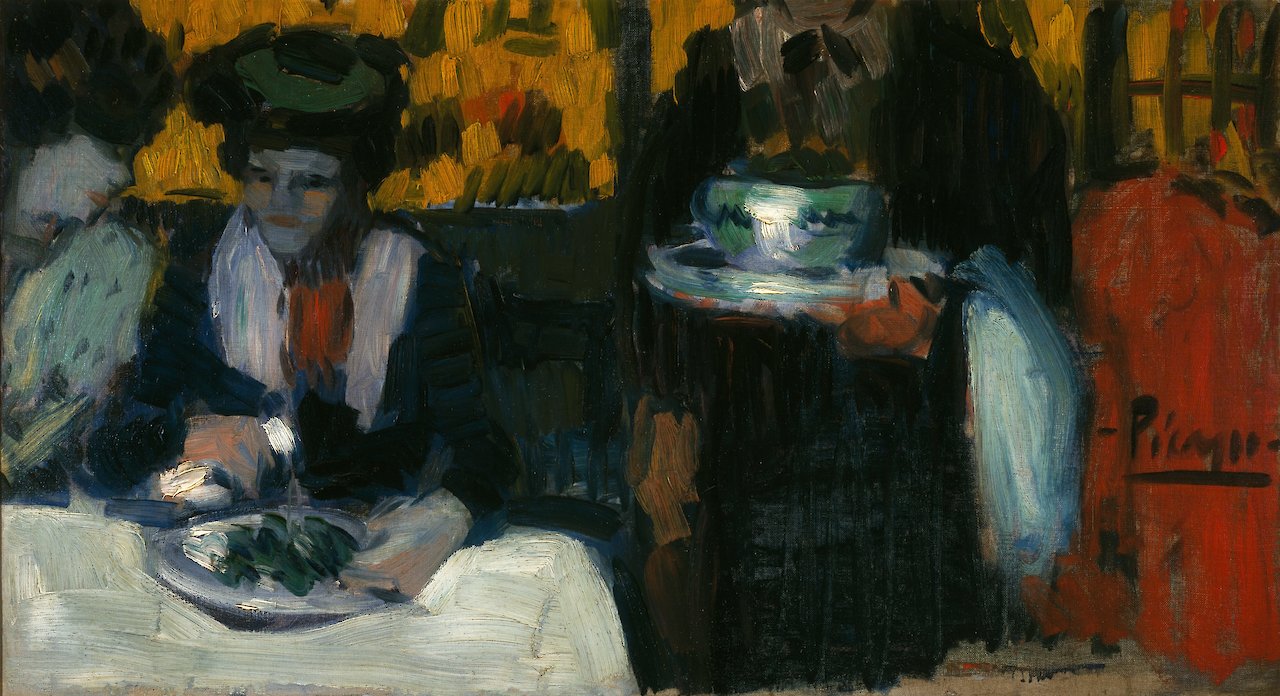
At the Café
by Pablo Picasso, 1901
- Medium
- Oil on canvas
- Dimensions
- 18 ½ x 32 ½ in
- Credits
- The Kreeger Museum, Washington, DC. © Succession Picasso/ARS, New York.
- Location
- Kreeger Museum
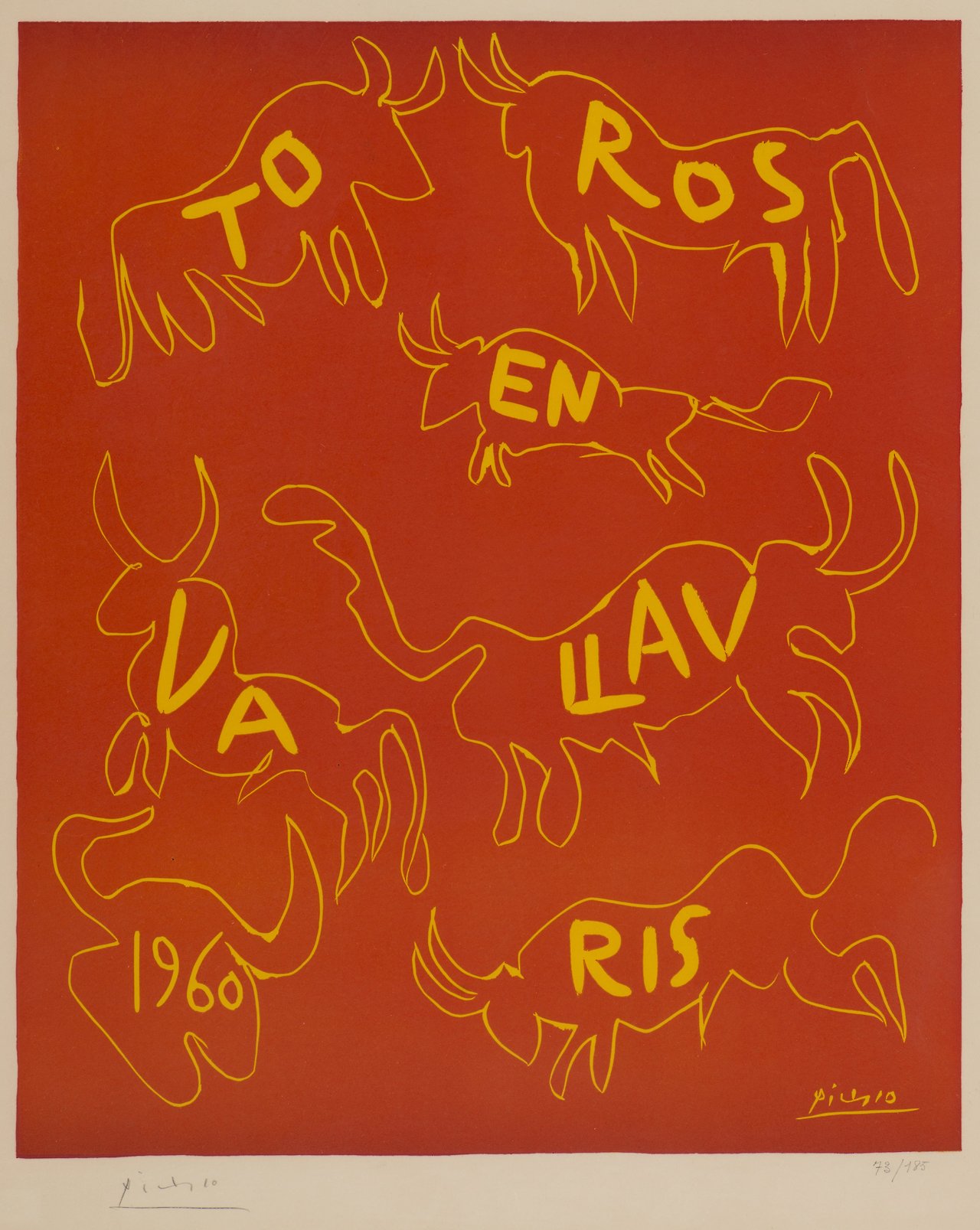
Bulls in Vallauris
by Pablo Picasso, 1960
- Medium
- Linoleum cut (73/185)
- Dimensions
- Object: 29 5/8 in x 24 1/2 in x 1 1/8 in (75.2475 x 62.23 x 2.8575 cm)
- Location
- NSU Art Museum Fort Lauderdale
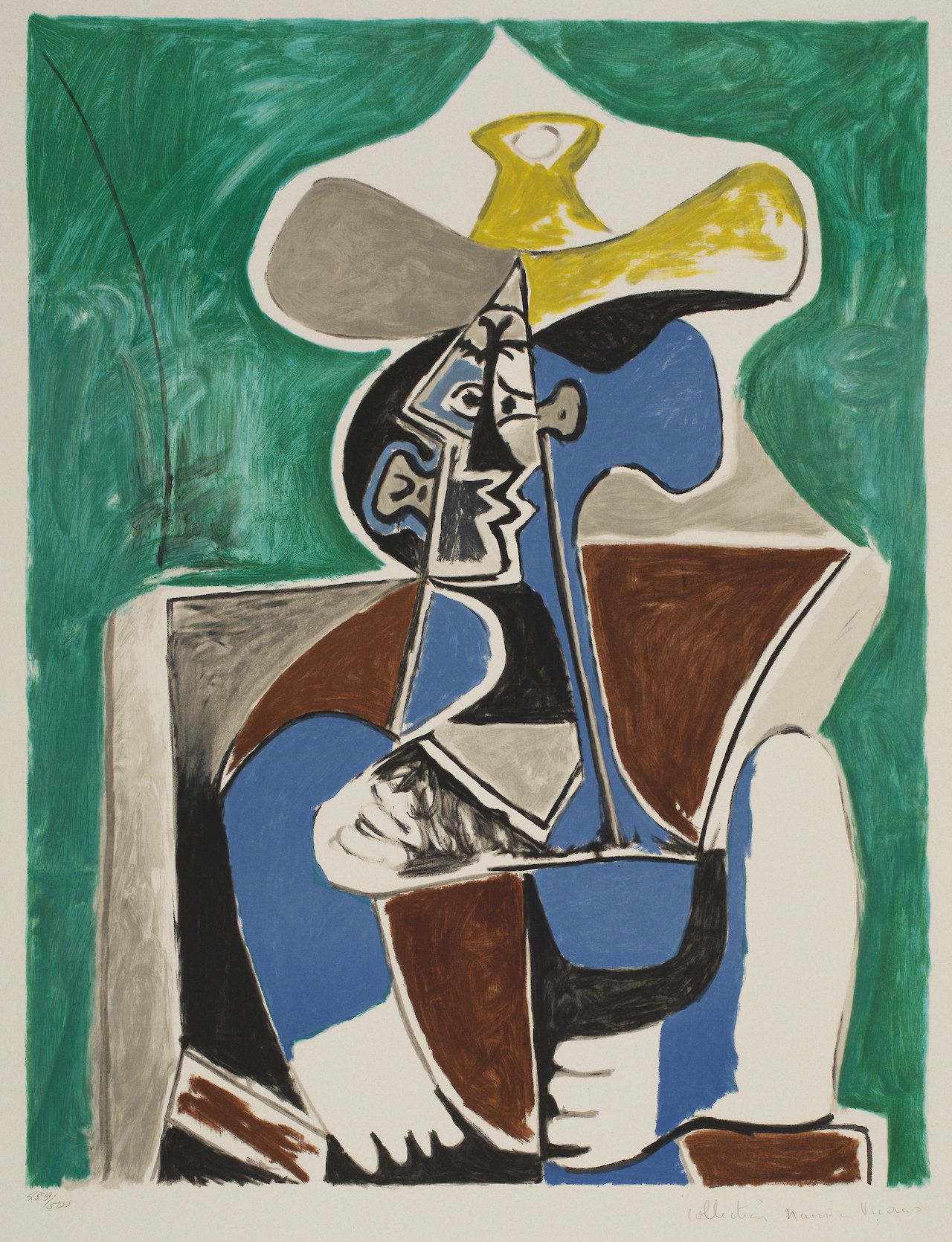
Buste au chapeau jaune et gris sur fond vert
by Pablo Picasso, 1981
- Medium
- Lithograph in colors on paper (459/500)
- Dimensions
- Image: 22 1/2 in x 127 1/2 in (57.15 x 323.85 cm); Sheet: 29 3/8 in x 22 in (74.6125 x 55.88 cm)
- Location
- NSU Art Museum Fort Lauderdale
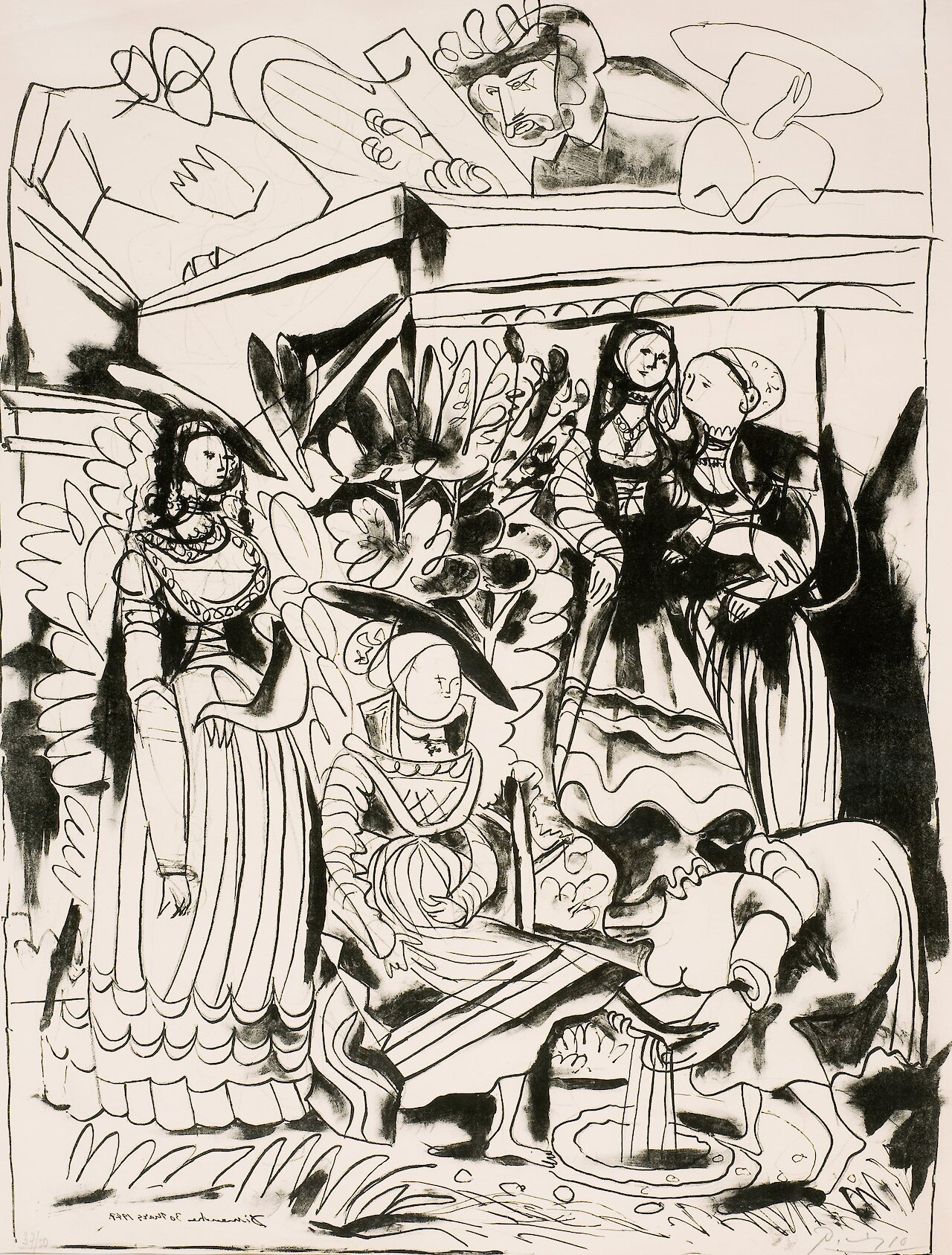
David and Bathsheba
by Pablo Picasso, 1947
- Medium
- Lithograph
- Dimensions
- 26 x 19-1/2 inches
- Credits
- Widmer Fund Purchase. © Jordan Schnitzer Museum of Art – University of Oregon
- Notes
Edition IV/X
- Location
- Jordan Schnitzer Museum of Art
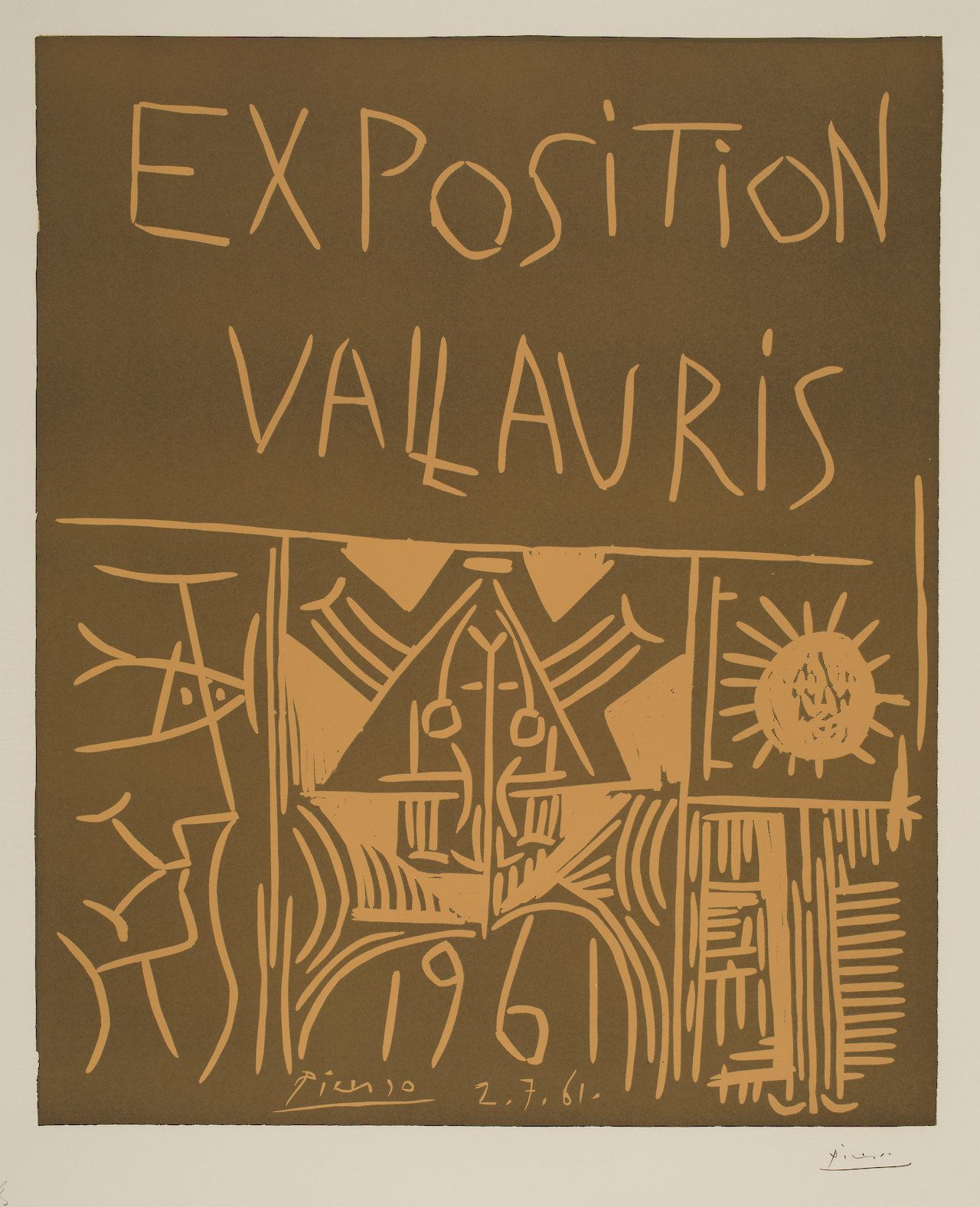
Exposition Vallauris 1961
by Pablo Picasso, 1961
- Medium
- Linoleum cut
- Dimensions
- Object: 29 1/2 x 24 1/2 in (74.93 x 62.23 cm)
- Location
- NSU Art Museum Fort Lauderdale
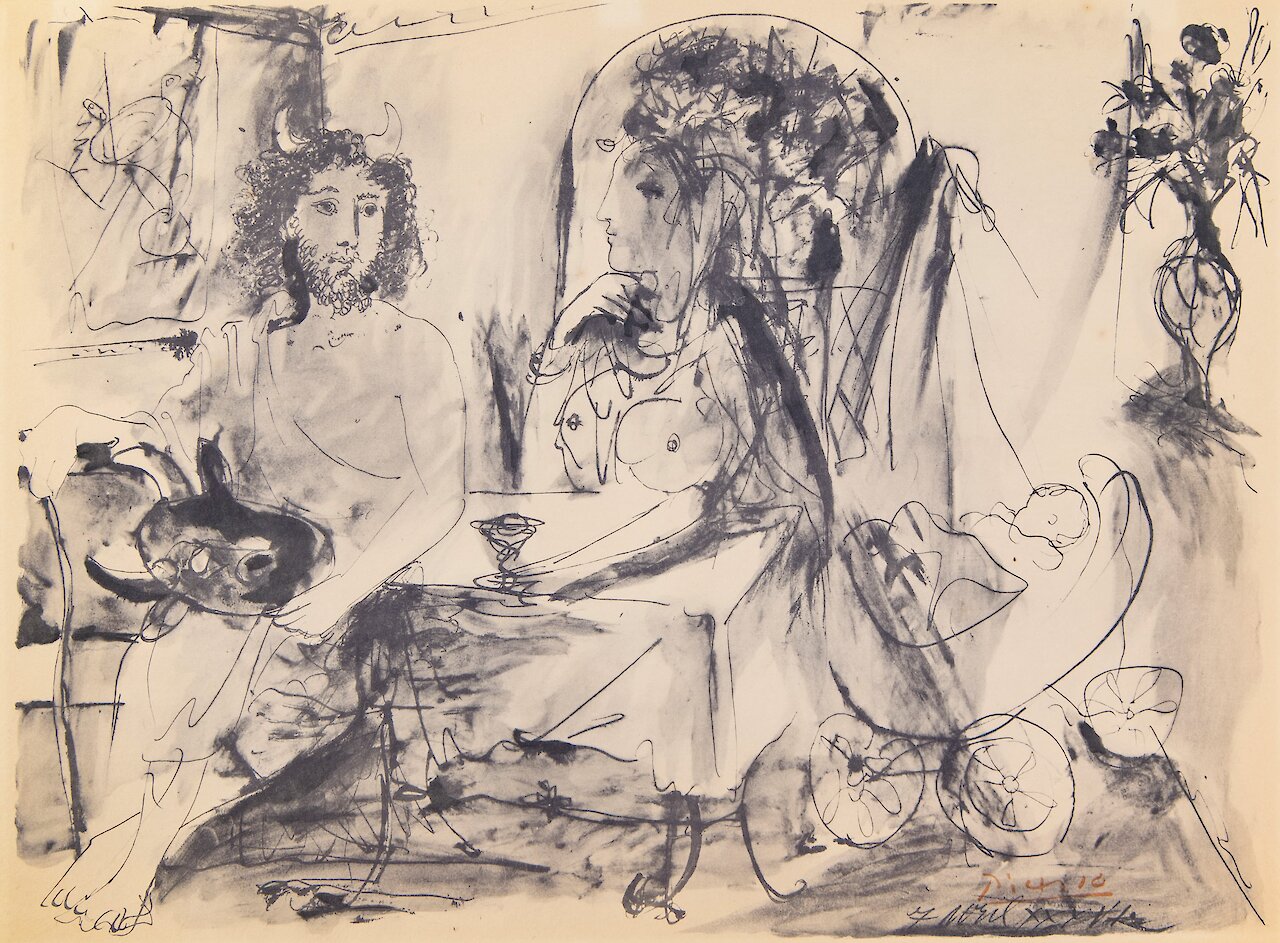
Faune et Femme Nue
by Pablo Picasso, 1967
- Medium
- Lithograph on paper
- Dimensions
- 21 x 27 inches
- Credits
- Gift of Eiko Politz. © Jordan Schnitzer Museum of Art – University of Oregon
- Notes
From the portfolio La Flûte Double
- Location
- Jordan Schnitzer Museum of Art
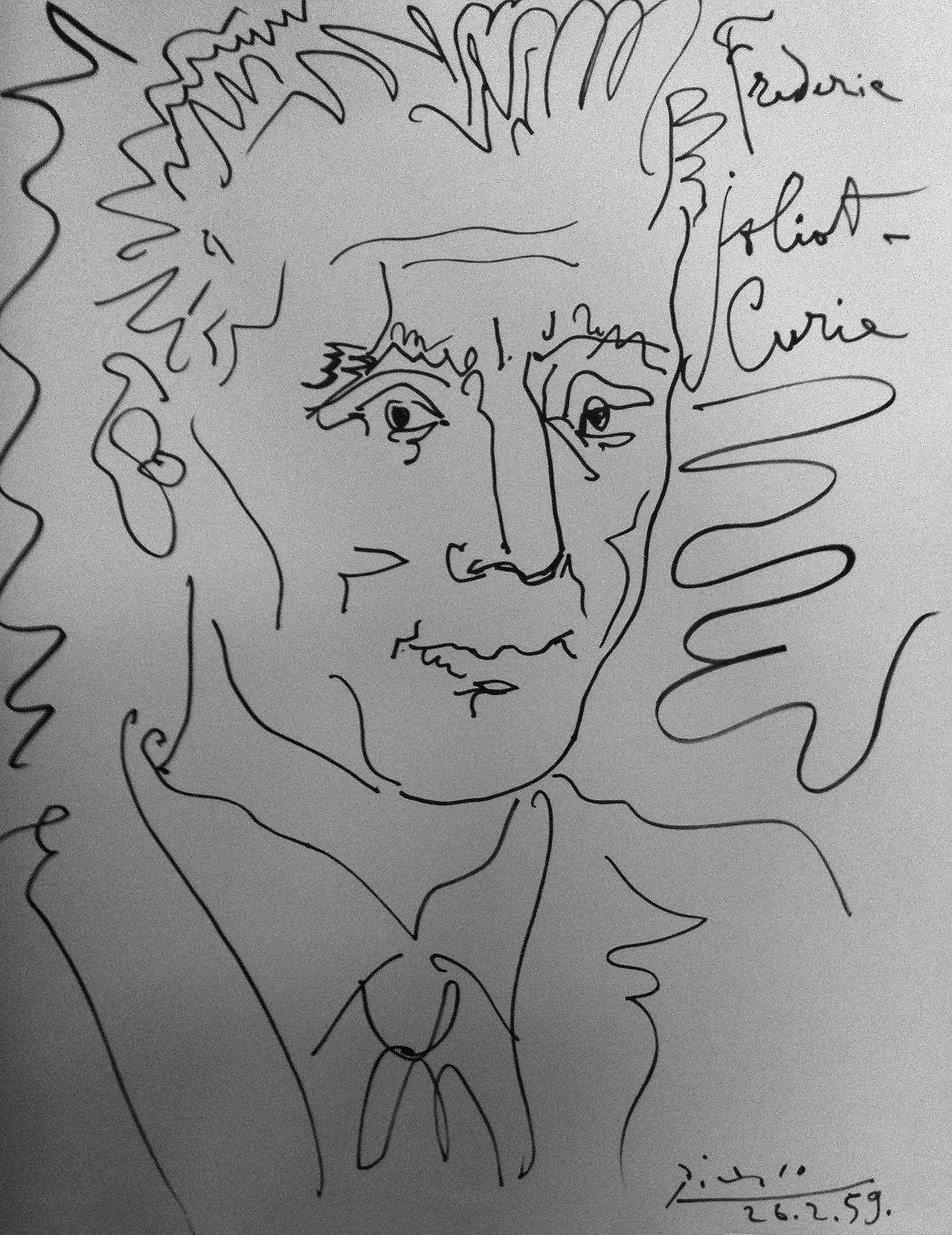
Frederic Joliot Curie, Feb. 26, 1959
by Pablo Picasso, 1959
- Medium
- Lithograph
- Location
- John and Mable Ringling Museum of Art
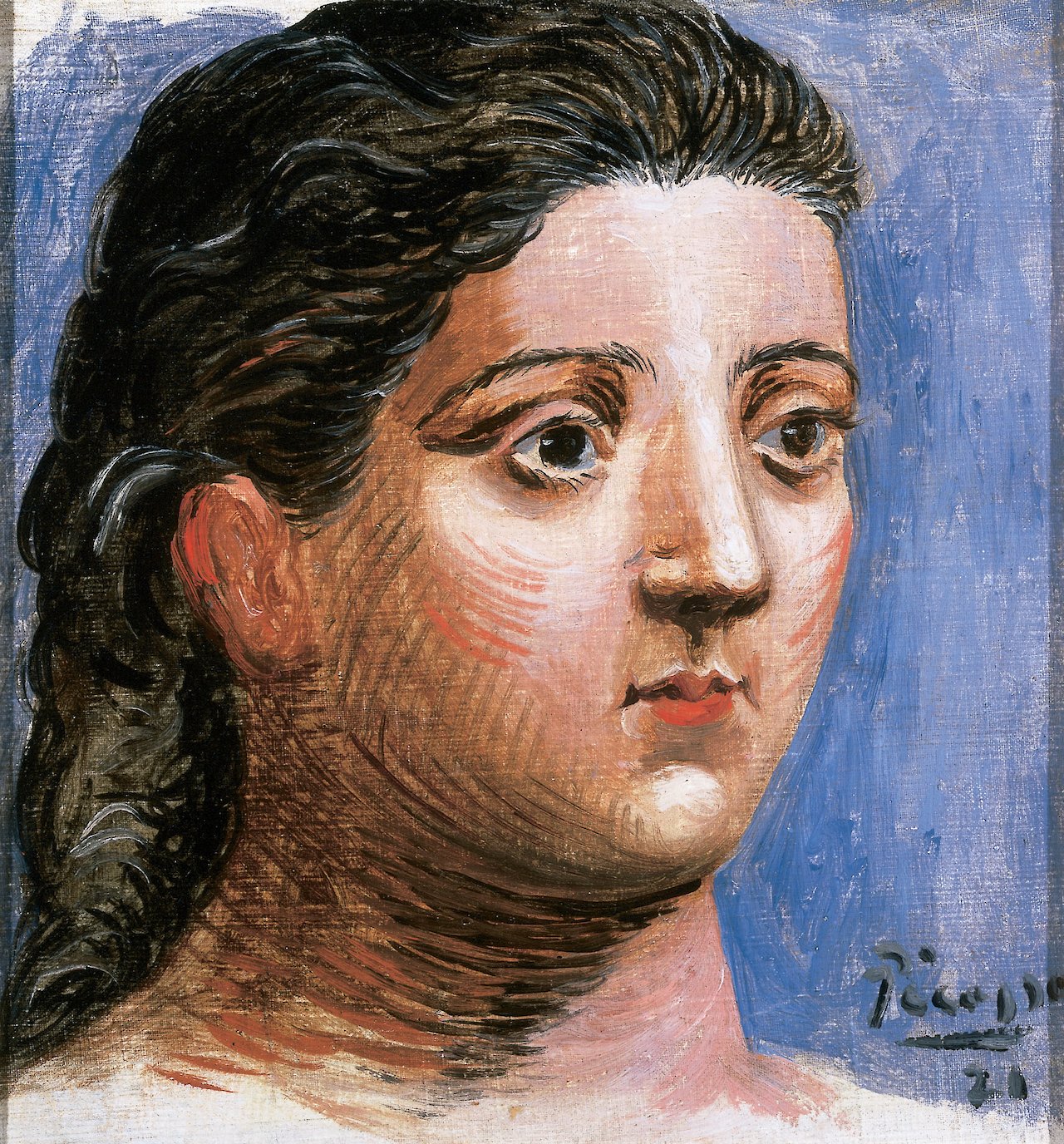
Head of a Woman
by Pablo Picasso, 1921
- Medium
- Oil on canvas
- Dimensions
- 9 ¼ x 8 1/8 in
- Credits
- The Kreeger Museum, Washington, DC. © Succession Picasso/ARS, New York.
- Location
- Kreeger Museum
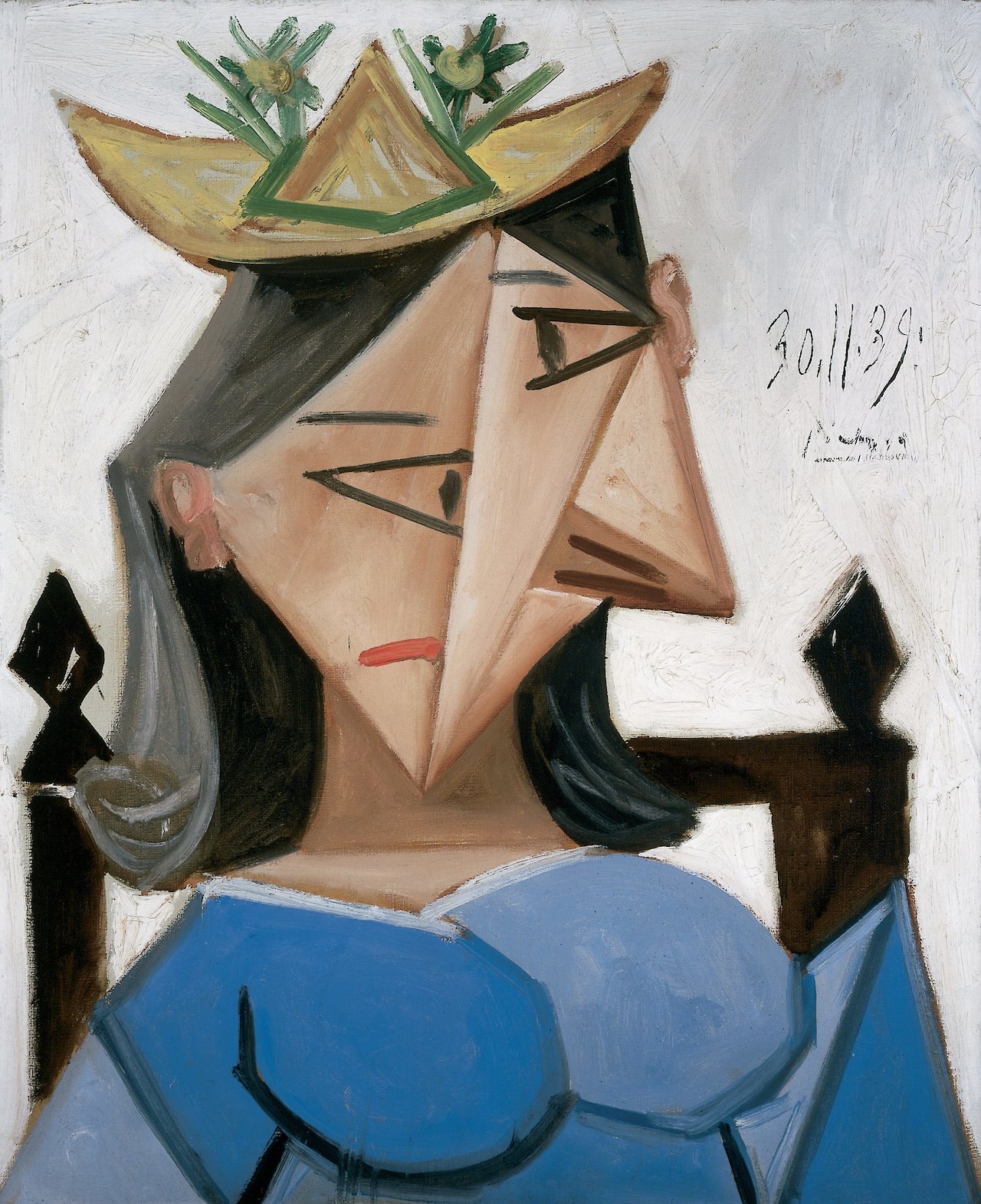
Head of a Woman with a Hat
by Pablo Picasso, 1939
- Medium
- Oil on canvas
- Dimensions
- 24 x 19 ¾ in
- Credits
- The Kreeger Museum, Washington, DC. © Succession Picasso/ARS, New York.
- Location
- Kreeger Museum
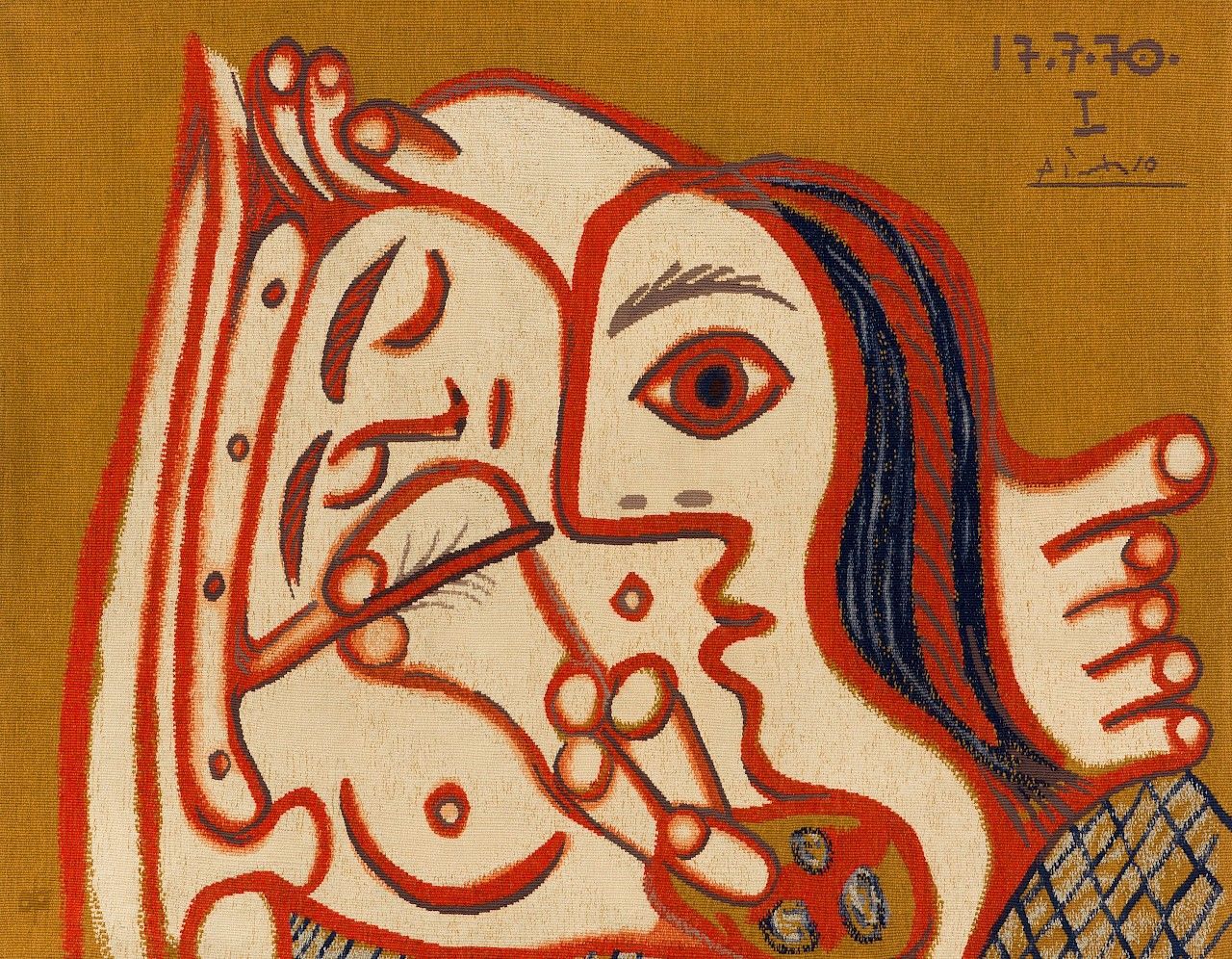
Painter and his Model
by Pablo Picasso, 1970
- Medium
- Wool & linen
- Dimensions
- 72 1/2 x 93 3/4 in (184.15 x 238.13 cm)
- Location
- Bechtler Museum of Modern Art
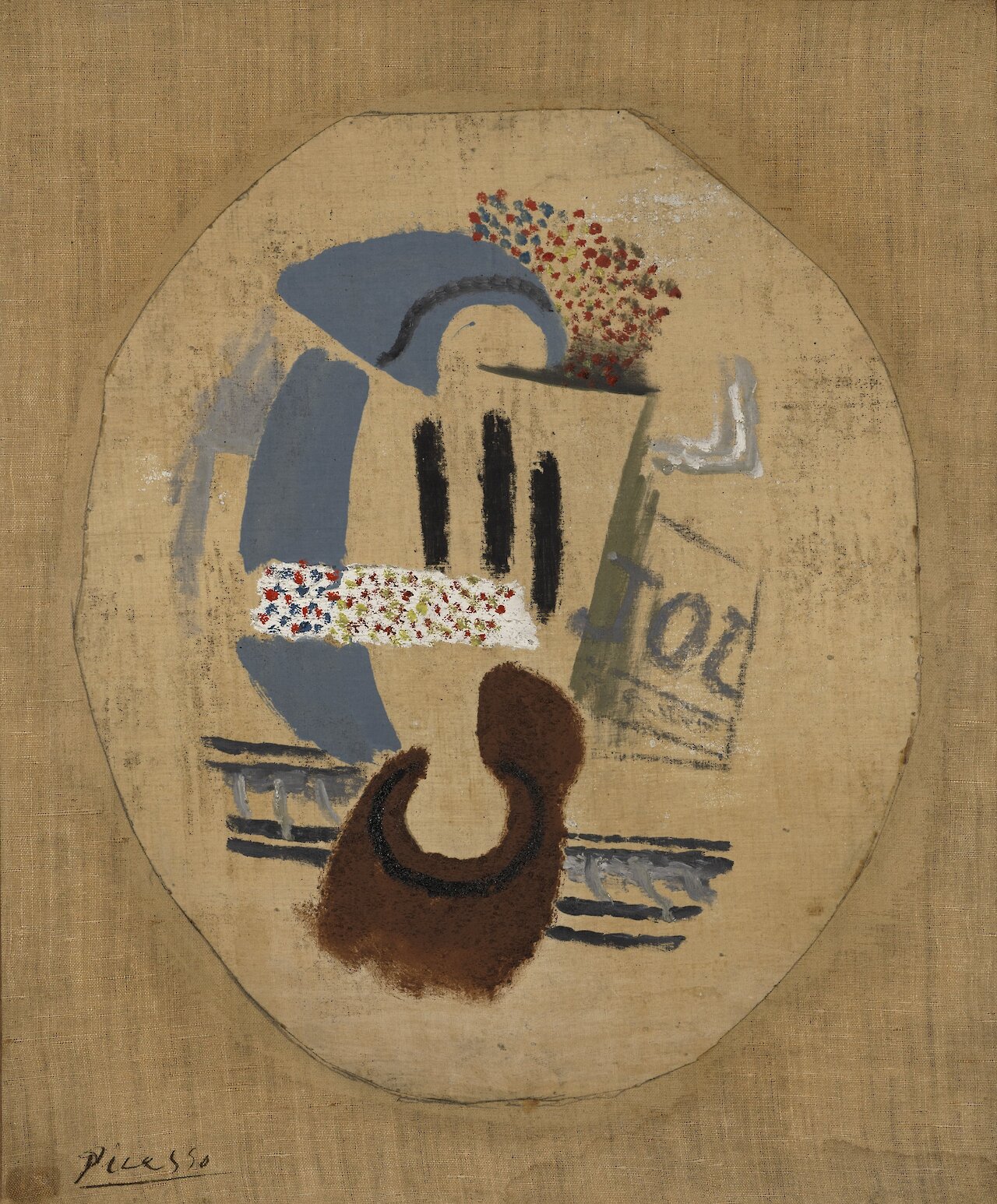
Still Life (Wineglass and Newspaper)
by Pablo Picasso, 1913–1914
- Medium
- Oil and sand on canvas
- Dimensions
- Unframed: 20 1/2 x 19 7/8 in (52.07 x 50.48 cm)
- Credits
- © Virginia Museum of Fine Arts. Photo by Travis Fullerton
- Location
- Virginia Museum of Fine Arts
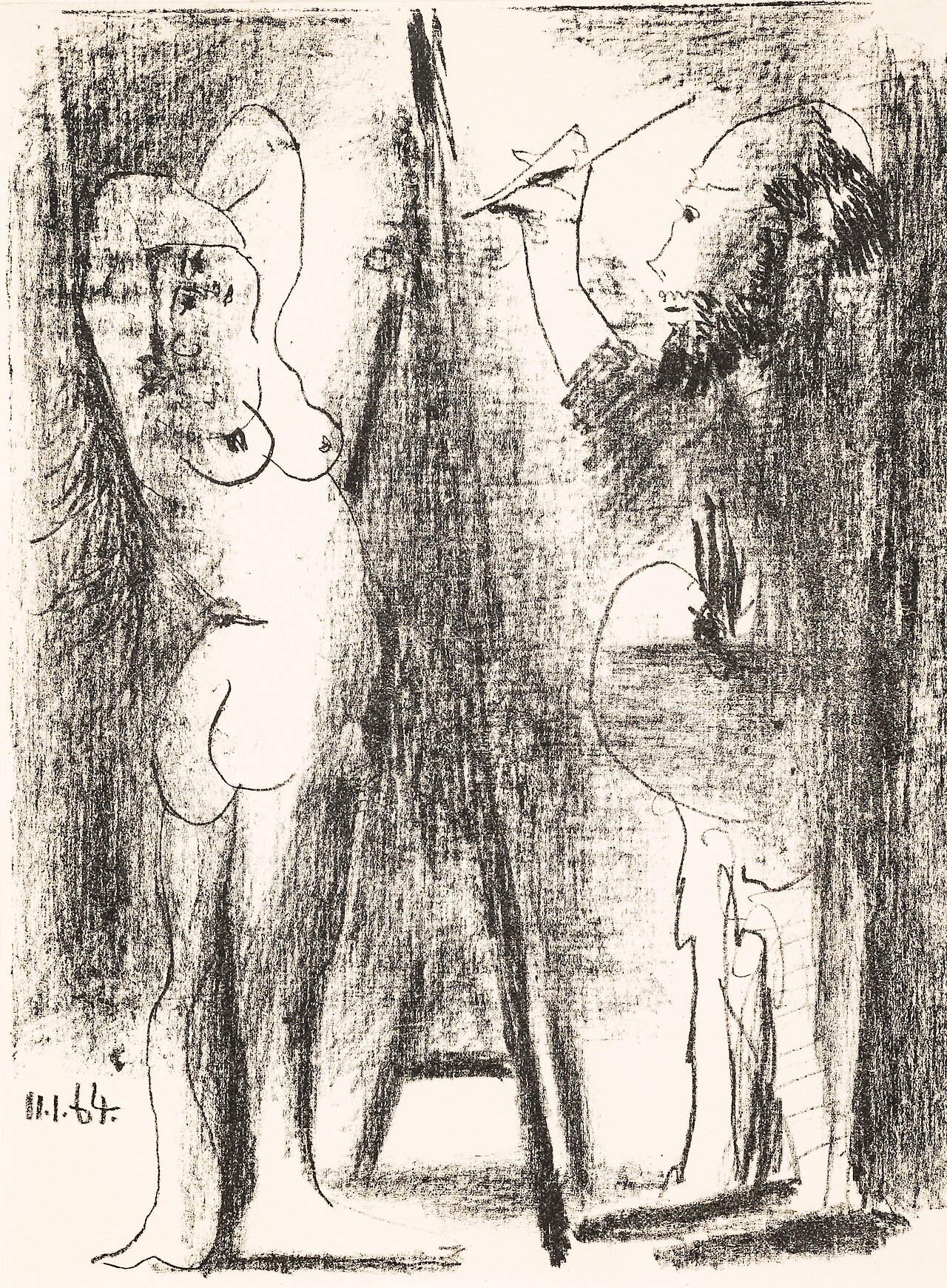
The Artist and his Model II
by Pablo Picasso, 1964
- Medium
- Lithograph on paper
- Dimensions
- Image: 7-3/8 x 10-1/8 in.; sheet: 11 x 14-1/8 in.
- Credits
- Gift of Keith Achepohl. © Jordan Schnitzer Museum of Art — University of Oregon.
- Location
- Jordan Schnitzer Museum of Art
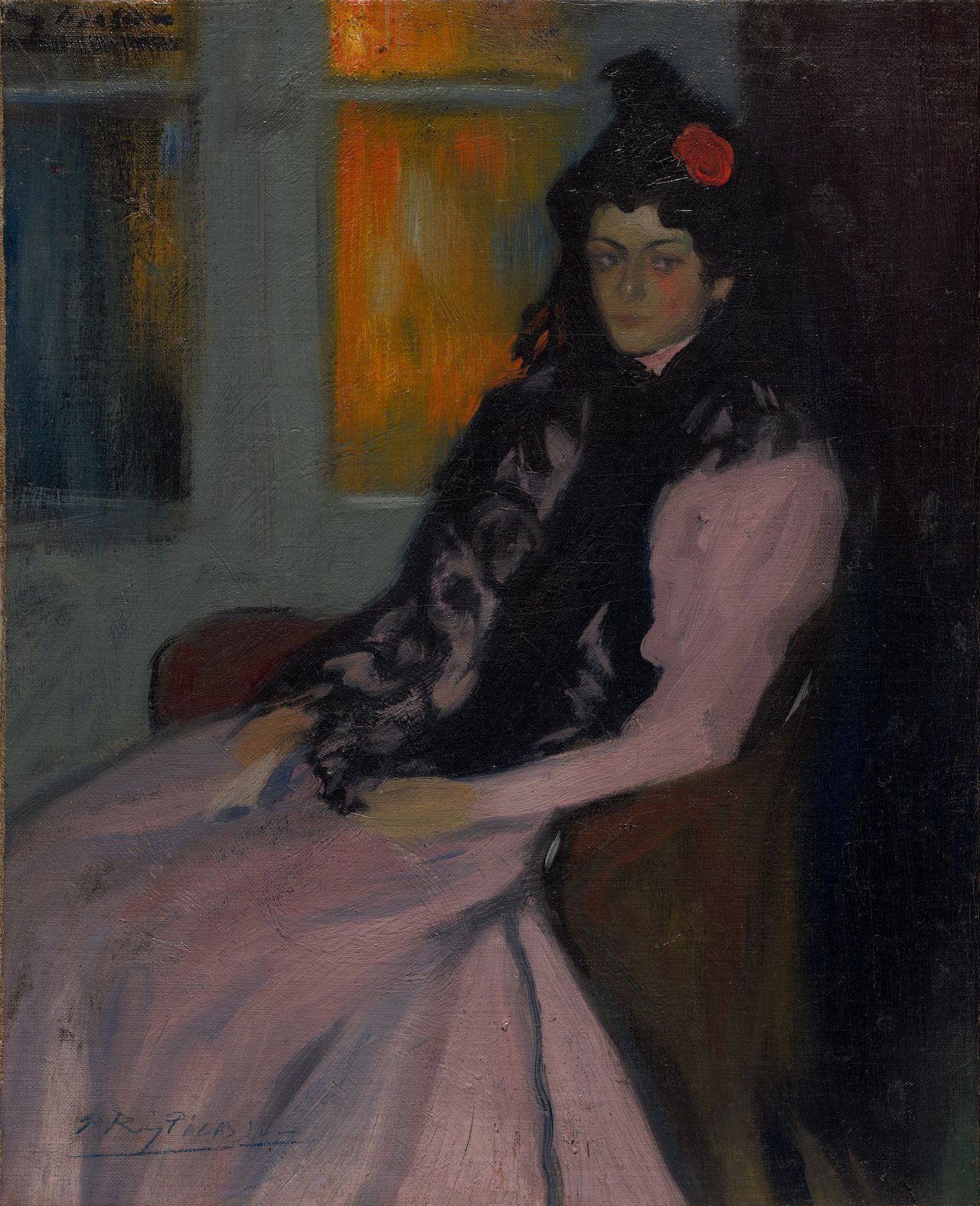
The Artist's Sister Lola
by Pablo Picasso, circa 1899–1900
- Medium
- Oil on canvas
- Dimensions
- Framed: 62.5 x 54 x 8 cm (24 5/8 x 21 1/4 x 3 1/8 in.); Unframed: 46.7 x 37.5 cm (18 3/8 x 14 3/4 in.)
- Location
- Cleveland Museum of Art
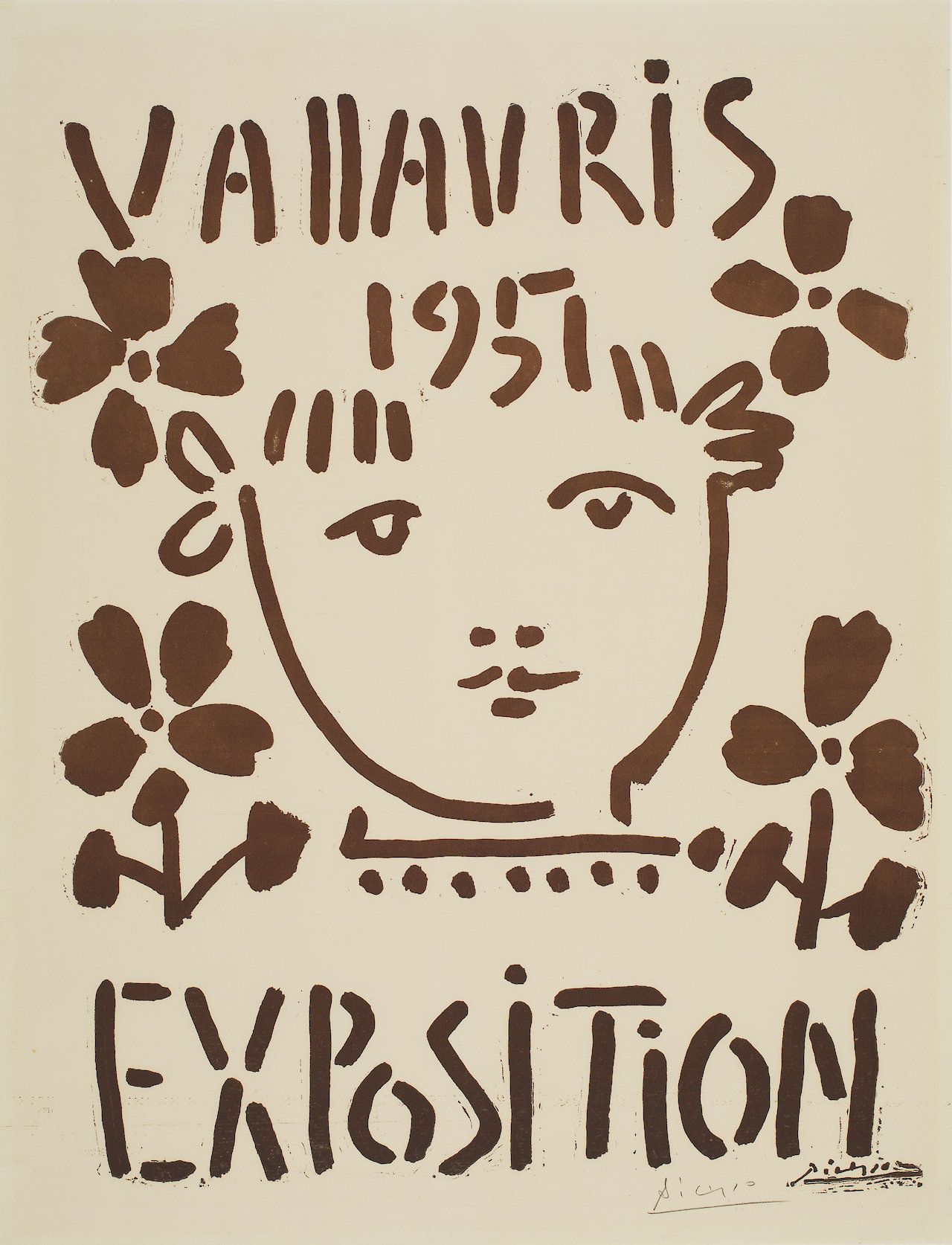
Vallauris Exposition 1951
by Pablo Picasso, 1951
- Medium
- Linoleum cut
- Dimensions
- Object: 25 5/8 in x 19 3/4 in (65.0875 x 50.165 cm)
- Location
- NSU Art Museum Fort Lauderdale
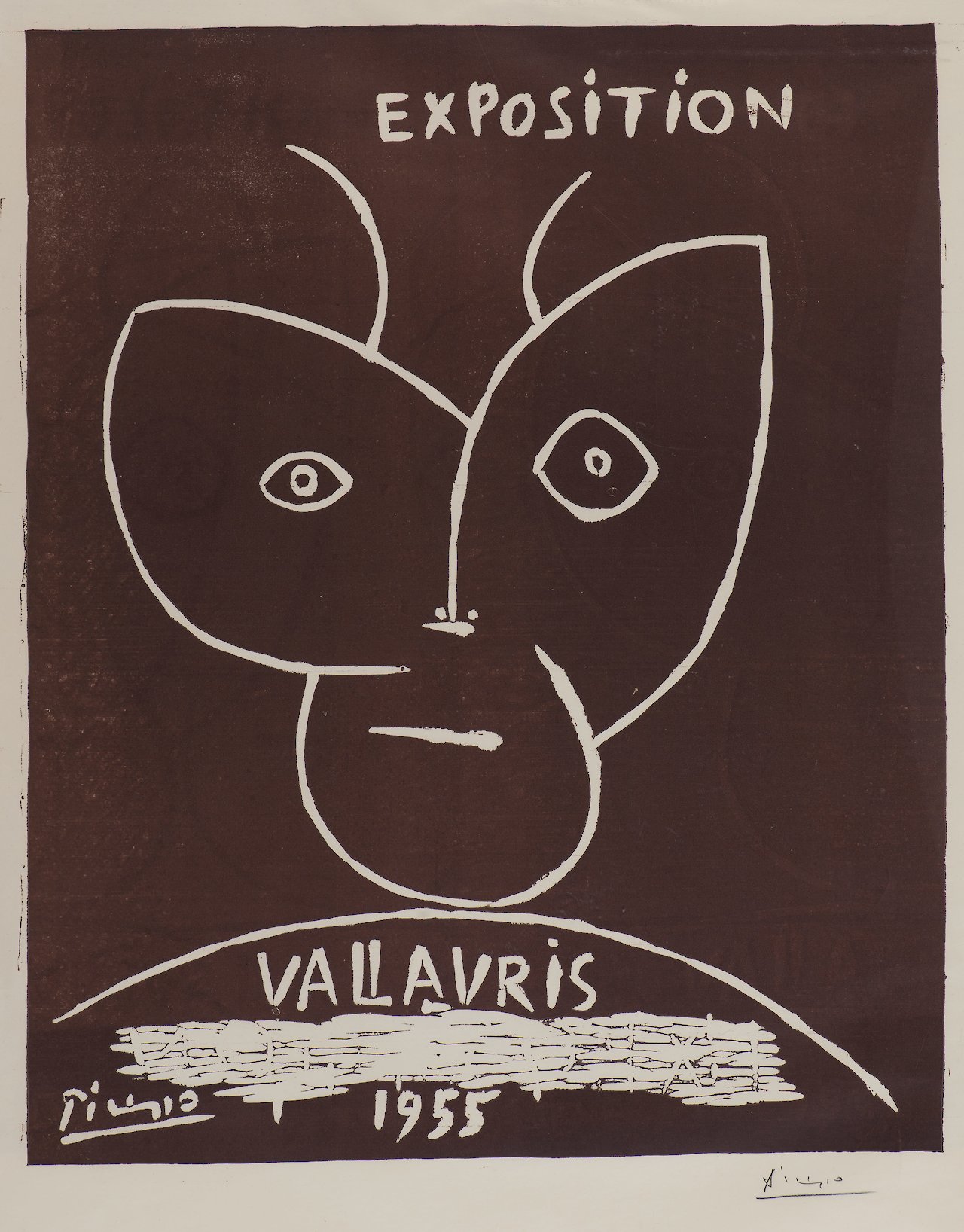
Vallauris Exposition 1955
by Pablo Picasso, 1955
- Medium
- Linoleum cut
- Dimensions
- Frame: 38 1/4 in x 30 1/8 in (97.155 x 76.5175 cm); Mat Window: 28 in x 22 in (71.12 x 55.88 cm); Matted: 37 1/8 in x 29 in (94.2975 x 73.66 cm); Object: 31 in x 23 3/8 in (78.74 x 59.3725 cm); Sight: 27 in x 21 in (68.58 x 53.34 cm)
- Location
- NSU Art Museum Fort Lauderdale
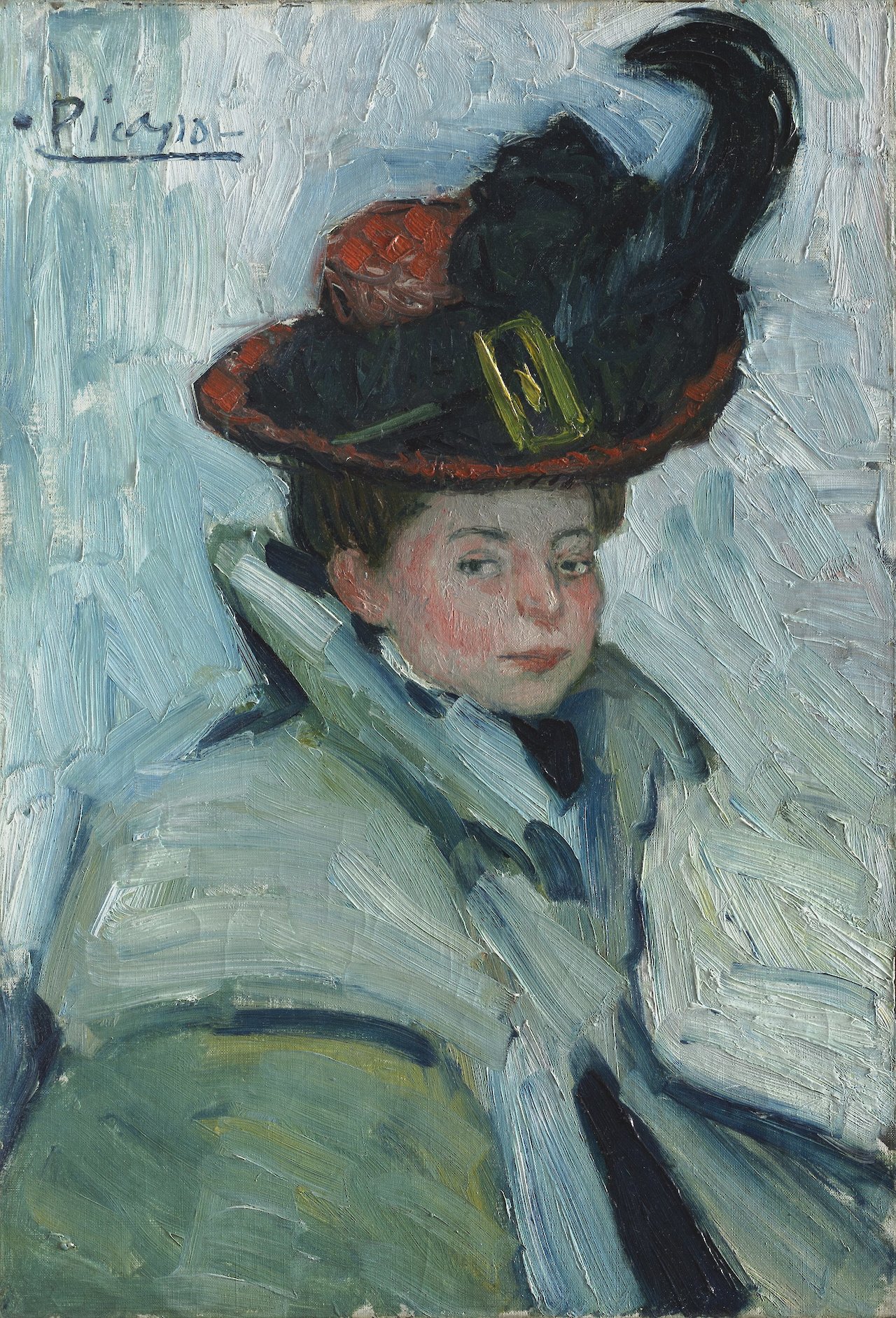
Woman with a Cape
by Pablo Picasso, 1901
- Medium
- Oil on canvas
- Dimensions
- Framed: 92.4 x 69.9 x 7.9 cm (36 3/8 x 27 1/2 x 3 1/8 in.); Unframed: 73 x 50.2 cm (28 3/4 x 19 3/4 in.)
- Location
- Cleveland Museum of Art
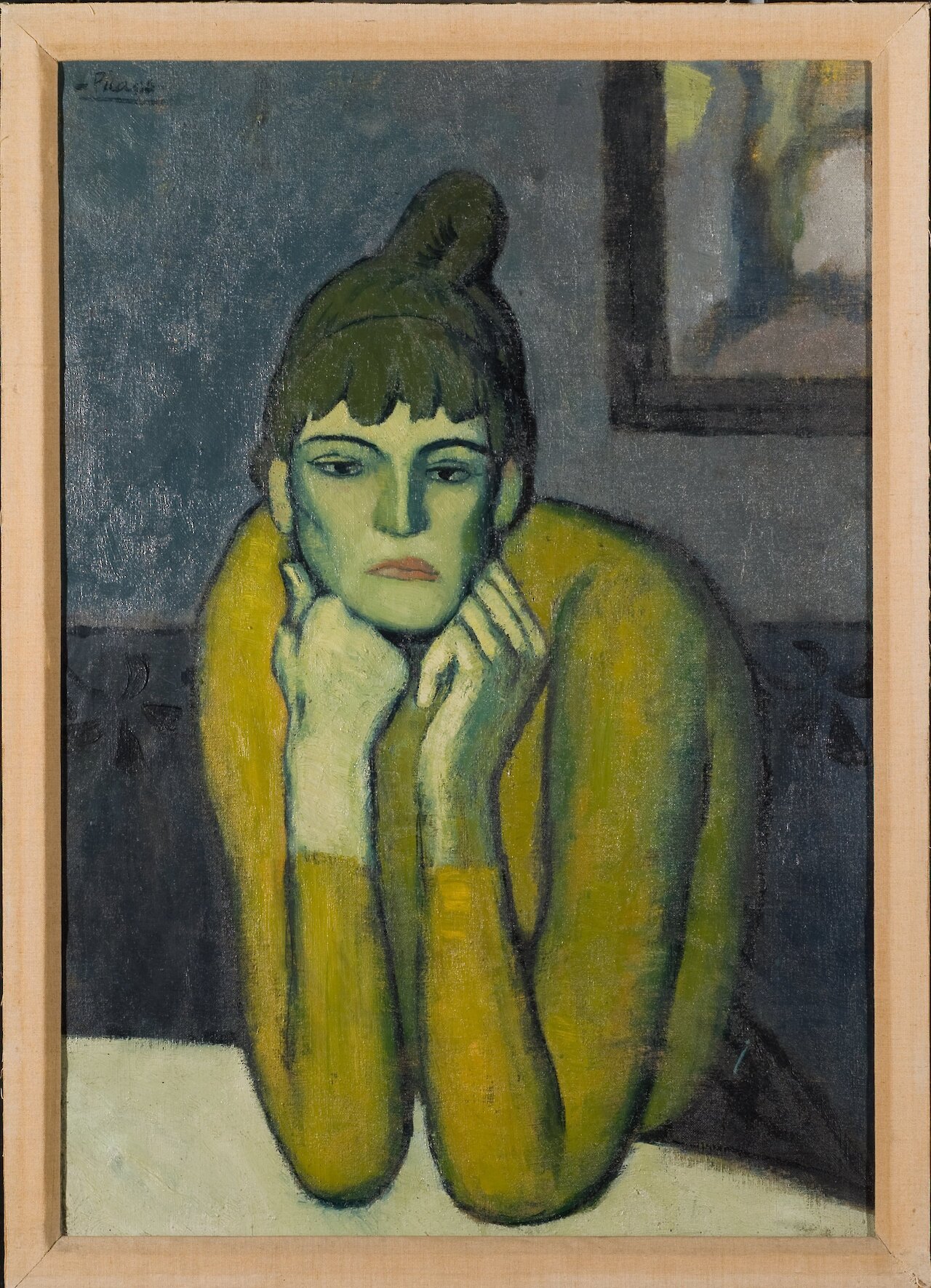
Woman with a Chignon
by Pablo Picasso, 1901
- Medium
- Oil on canvas
- Dimensions
- Sight: 68.6 x 47.6 cm (27 x 18 3/4 in); framed: 95.3 x 74 x 7.6 cm (37 1/2 x 29 1/8 x 3 in)
- Credits
- Harvard Art Museums/Fogg Museum, Bequest from the Collection of Maurice Wertheim, Class of 1906
- Location
- Harvard Art Museums
Plensa, Jaume
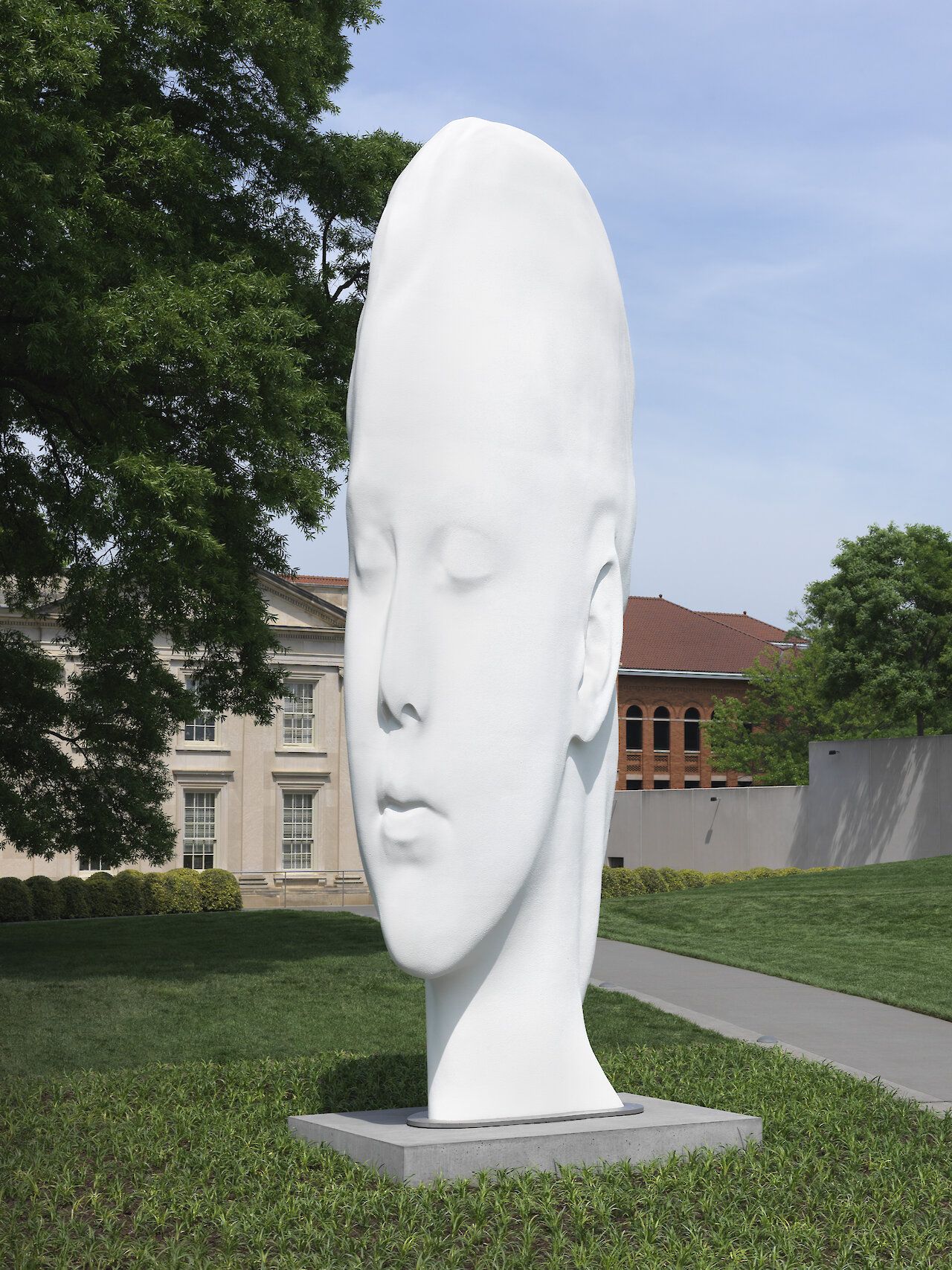
Chloe
by Jaume Plensa, 2016
- Medium
- Polyester resin, marble dust and stainless steel
- Dimensions
- Overall: 24 x 9.2 x 3.5 feet (7320 x 2800 x 1000 mm)
- Credits
- © Virginia Museum of Fine Arts. Photo by Travis Fullerton
- Location
- Virginia Museum of Fine Arts
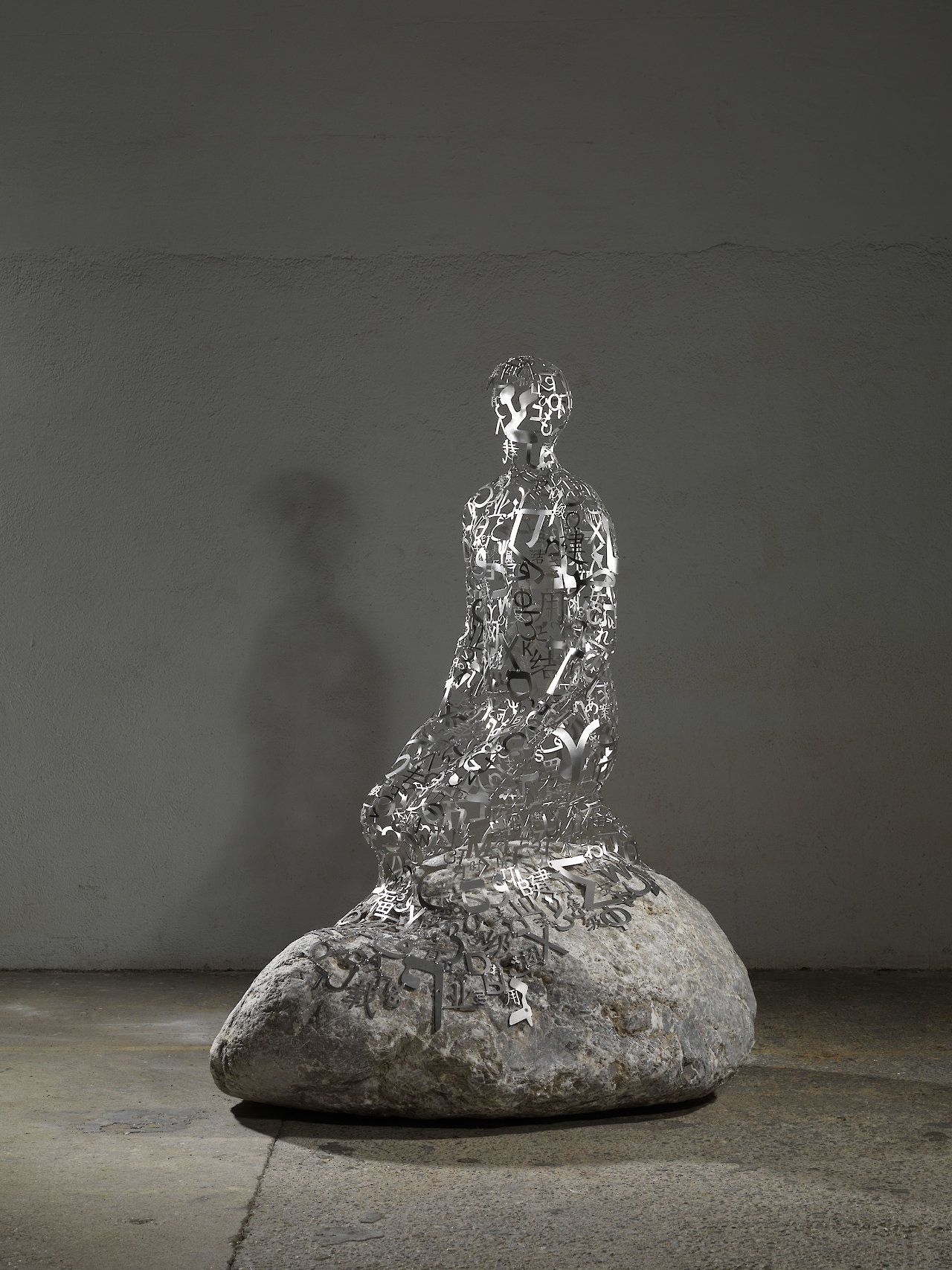
The Hermit XI
by Jaume Plensa, 2012
- Medium
- Stainless steel and stone
- Dimensions
- 68 29/32 in. x 53 35/64 in. x 37 1/64 in
- Credits
- The Alfond Collection of Contemporary Art at Rollins College, Gift of Barbara ‘68 and Theodore ‘68 Alfond. Image courtesy of Galerie Lelong, New York
- Location
- Rollins Museum of Art
Puig, J. E.
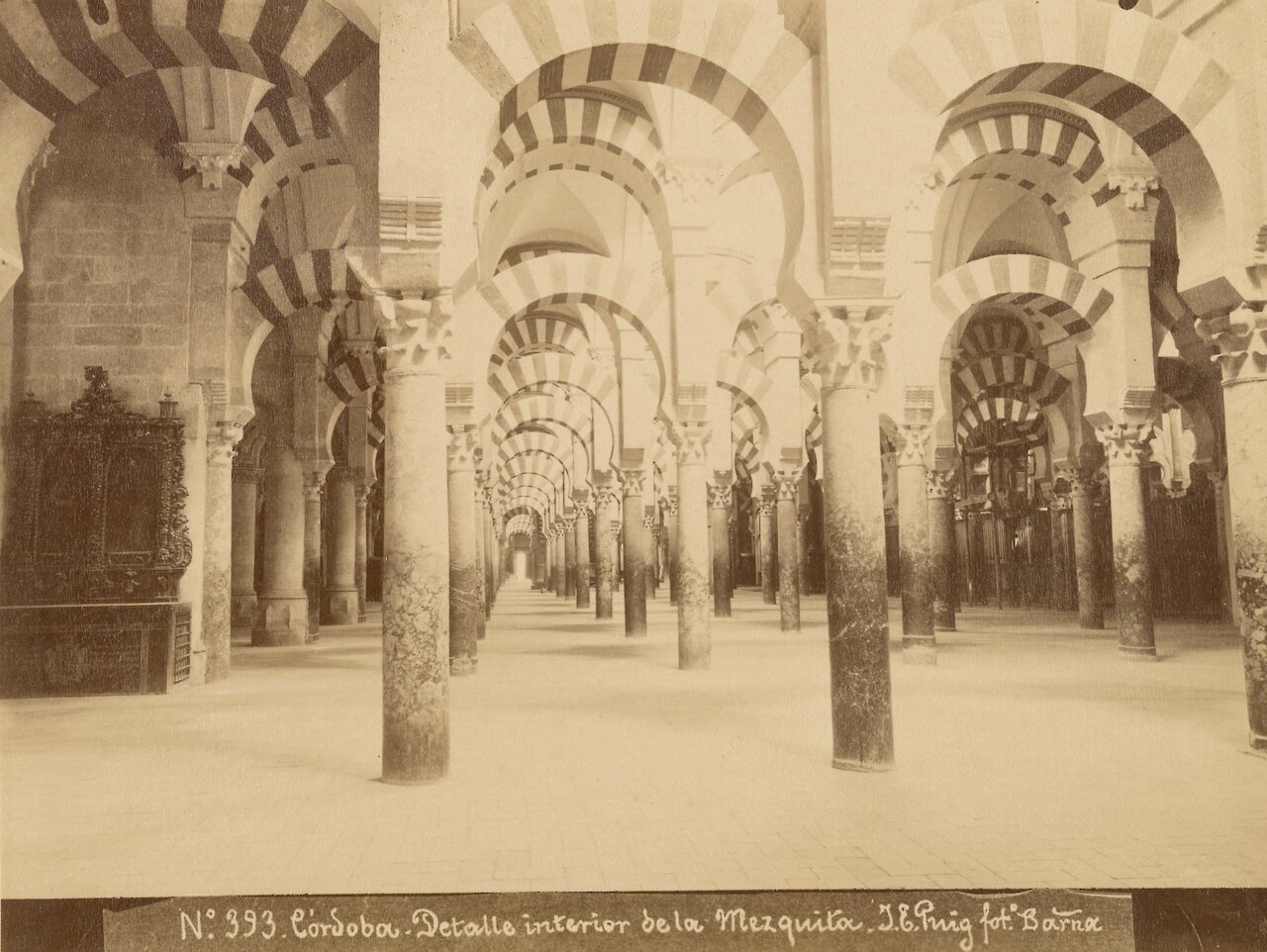
Cordoba, Detalle interior de la Mezquita
by J. E. Puig, circa 1875
- Medium
- Albumen silver print
- Dimensions
- Image: 16.5 × 22.1 cm (6 1/2 × 8 11/16 in); mount: 25.8 × 30.4 cm (10 3/16 × 11 15/16 in)
- Notes
Interior hall of the Mosque of Cordoba with multiple rows of columns and arches. The arches have a striped pattern.
- Location
- J. Paul Getty Museum
Quintanilla Martínez, Isabel
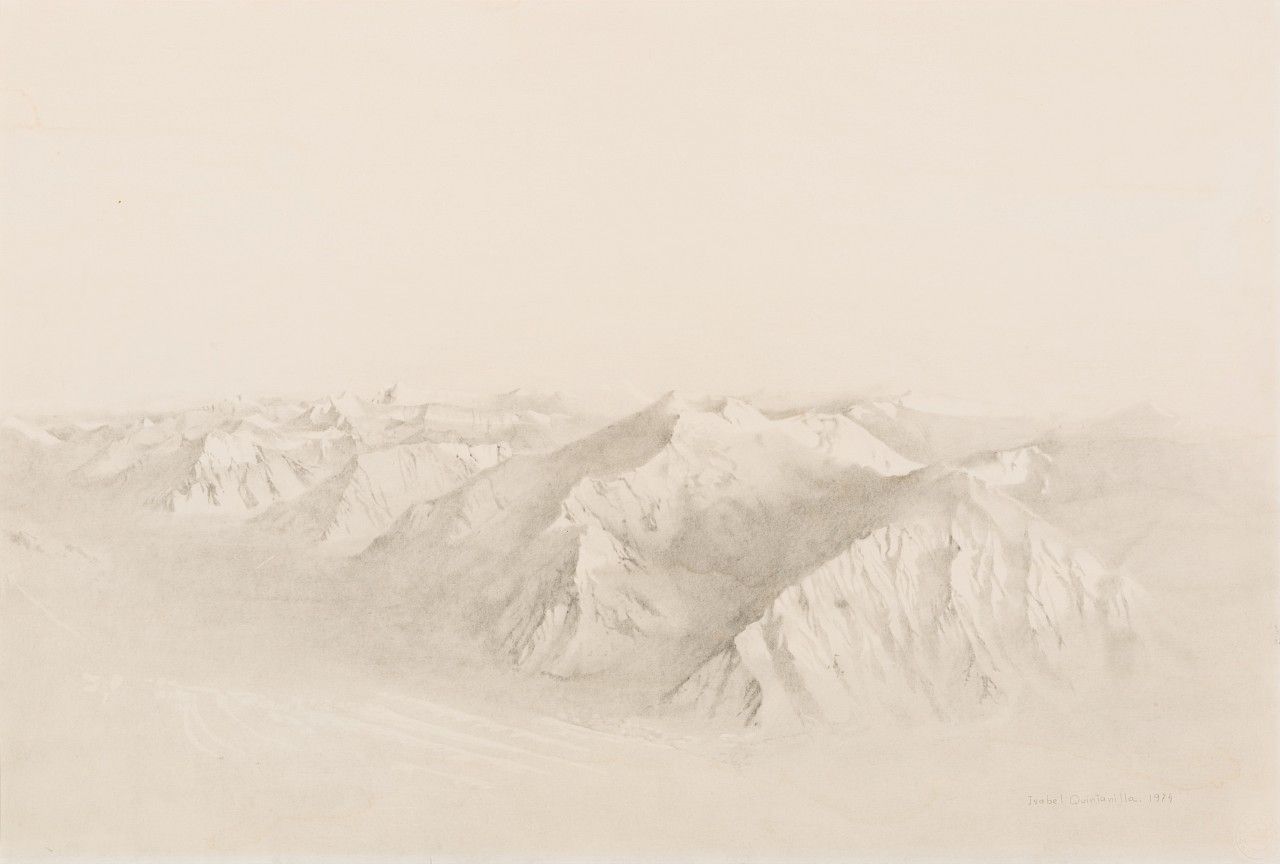
Untitled Drawing of the Alps
by Isabel Quintanilla Martínez, 1974
- Medium
- Graphite on paper
- Dimensions
- 25 x 30 1/2 x 3/4 in. (63.5 x 77.47 x 1.91 cm)
- Location
- Bechtler Museum of Modern Art
Restrepo, Wills I.
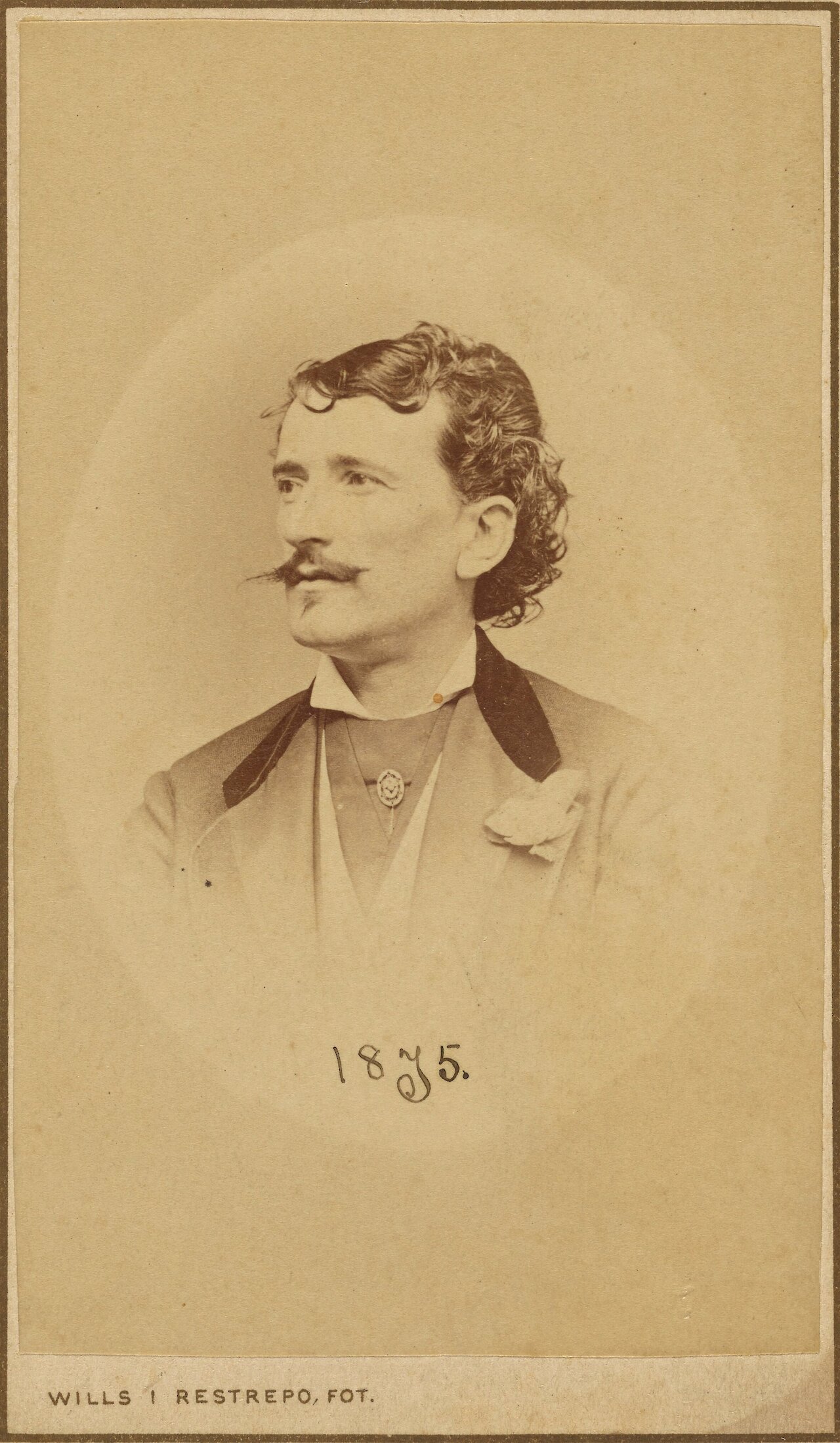
Rexach, Juan
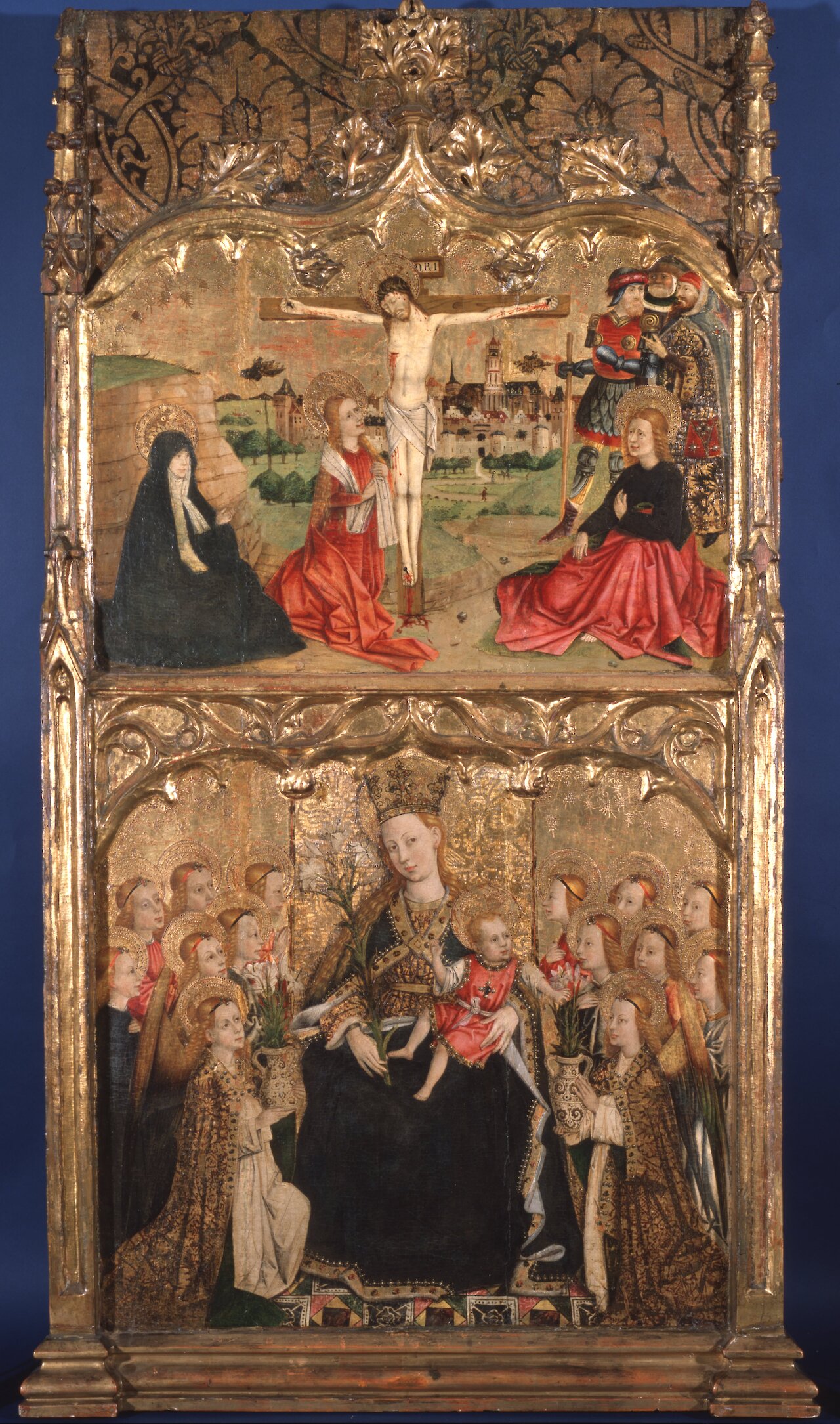
The Crucifixion and Madonna and Child Enthroned with Angels
by Juan Rexach, circa 1465–1470
- Medium
- Tempera and gold leaf on panel
- Dimensions
- 68-1/2 x 38-1/2 in (174.0 x 97.8 cm)
- Credits
- The Norton Simon Foundation
- Location
- Norton Simon Museum
Ribalta, Francisco
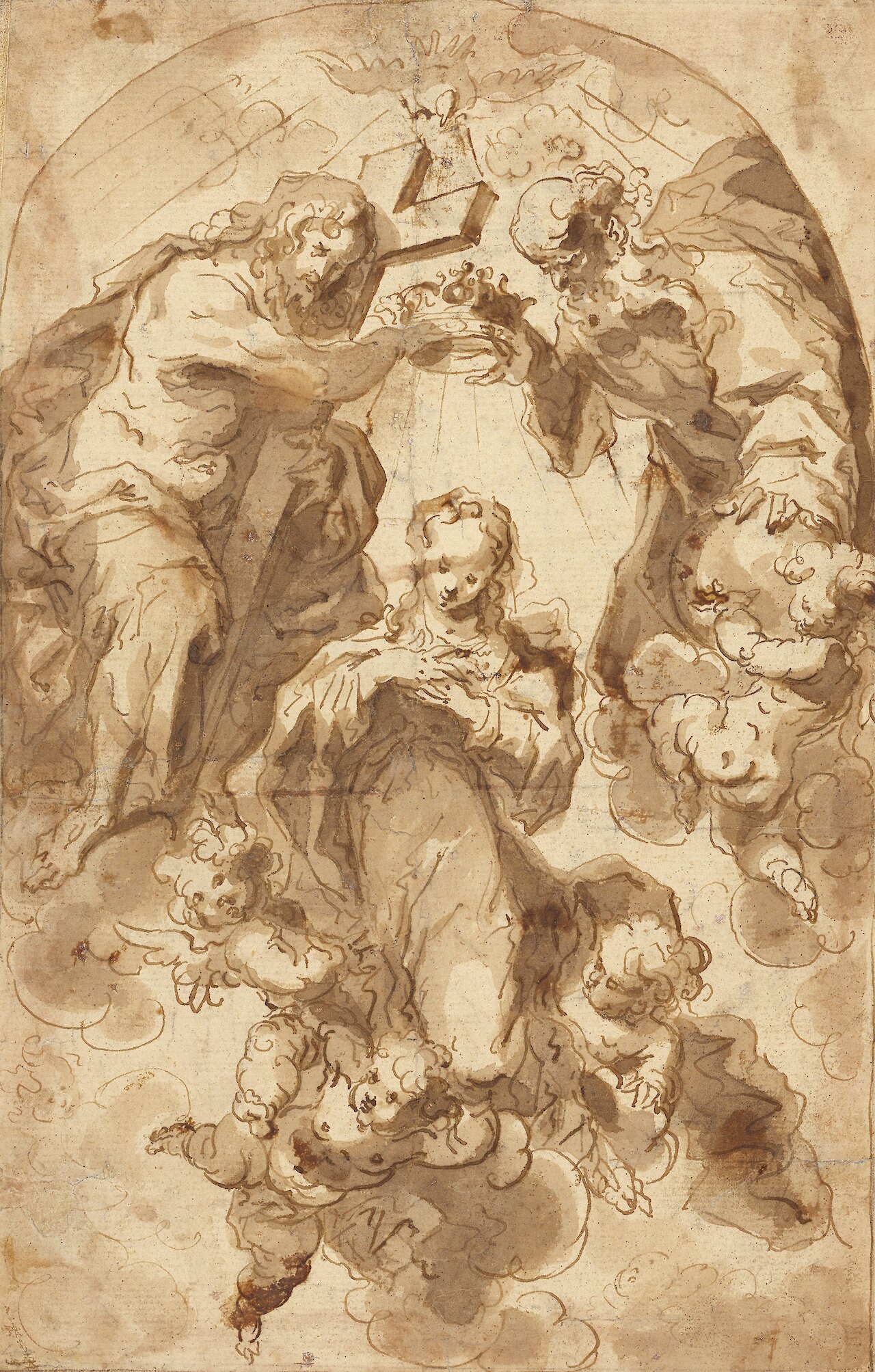
The Coronation of the Virgin
by Francisco Ribalta, circa 1600–1628
- Medium
- Pen and brown ink and brown wash
- Dimensions
- 28.7 × 18.7 cm (11 5/16 × 7 3/8 in)
- Notes
Tumbling angels support the Virgin Mary as she graciously accepts the crown as Queen of Heaven. During the mid-1660s, the Coronation of the Virgin was a very popular subject in Catholic circles, especially in Spain. Francisco Ribalta treated the theme with remarkable dynamism and originality. He applied wash to strengthen the vigorous pen work and to unite the composition. The arched upper section suggests that he made the drawing in preparation for an altar painting.
- Location
- J. Paul Getty Museum
Ribera, Jusepe de
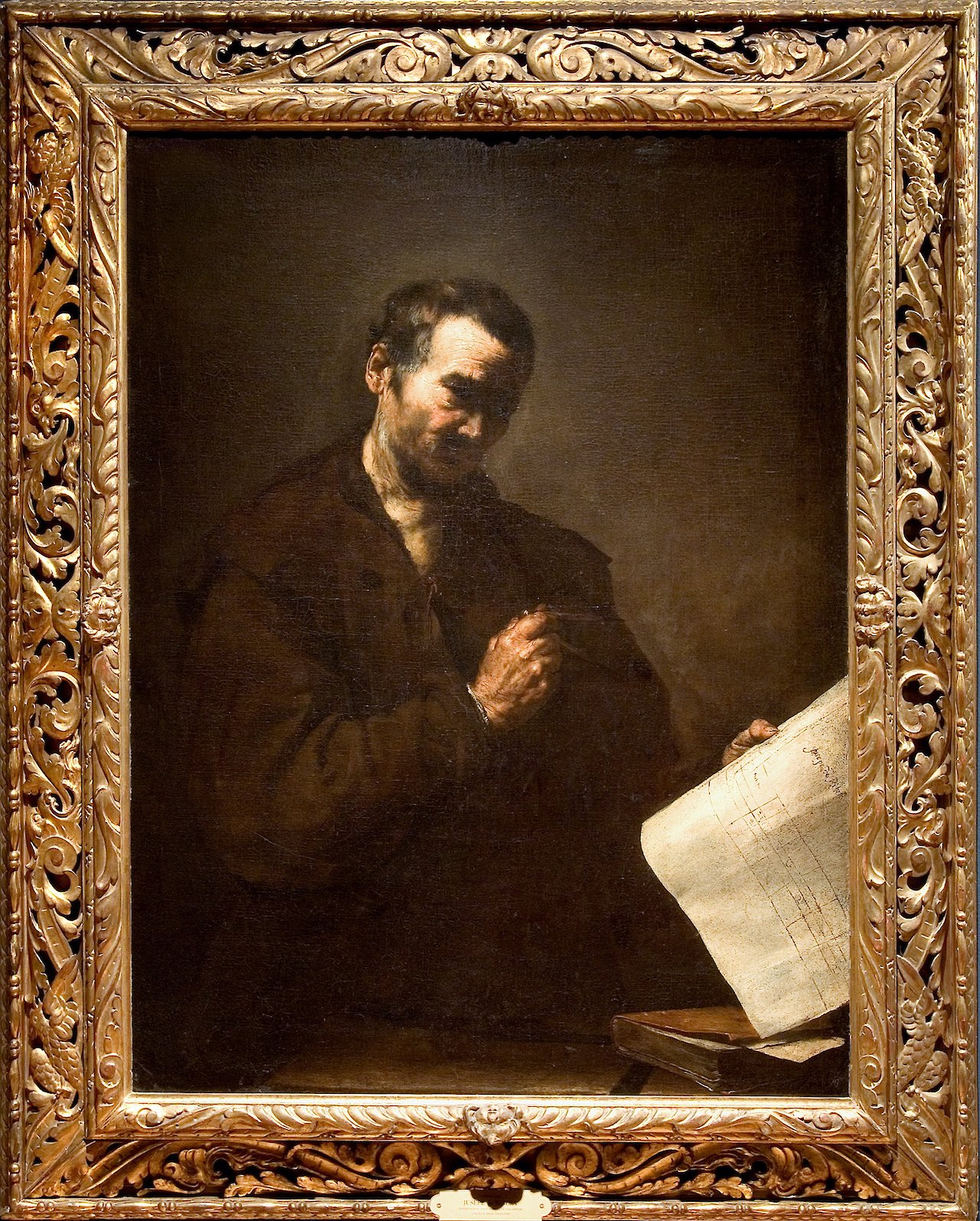
A Greek Sage
by Jusepe de Ribera, circa 1630
- Medium
- Oil on canvas
- Dimensions
- 50.8 x 36.5 in
- Credits
- University of Arizona Museum of Art, Tucson, Arizona, Gift of Samuel H. Kress Foundation, 1961.013.010
- Location
- University of Arizona Museum of Art
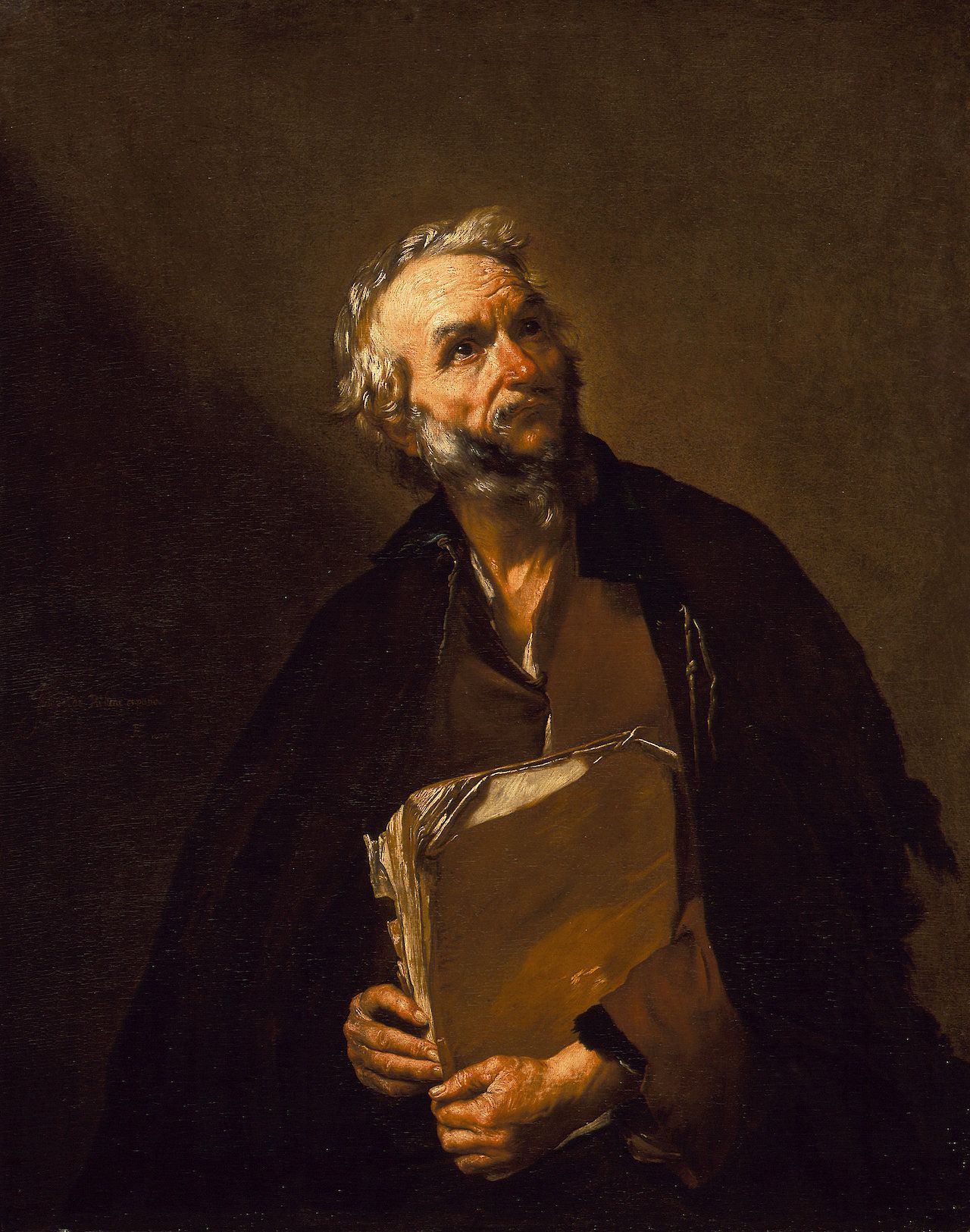
A Philosopher
by Jusepe de Ribera, 1637
- Medium
- Oil on canvas
- Dimensions
- Frame: 61 × 51 × 5 in (154.94 × 129.54 × 12.7 cm)
- Location
- LACMA
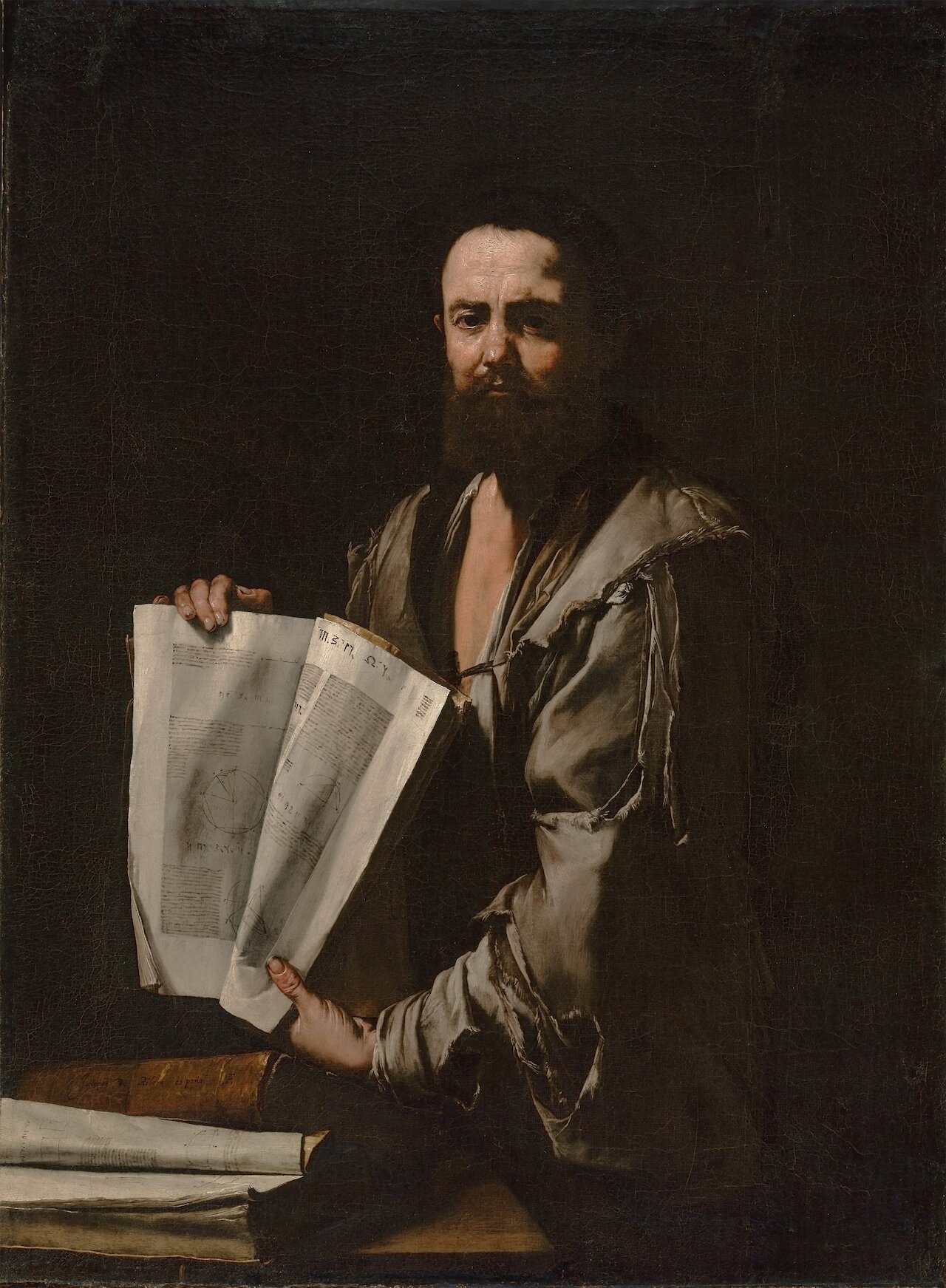
Euclid
by Jusepe de Ribera, circa 1630–1635
- Medium
- Oil on canvas
- Dimensions
- Unframed: 125.1 × 92.4 cm (49 1/4 × 36 3/8 in); framed: 158.1 × 124.5 × 7.3 cm (62 1/4 × 49 × 2 7/8 in)
- Notes
Emerging from deep shadows behind a table, a solemn individual stands displaying a well-worn book with various geometric figures, pseudo-Greek characters, and an imaginary script. Jusepe de Ribera paid considerable attention to the man's facial details, from the unkempt beard to the distinctive creases of his high forehead and the irregular folds of the lids above his dark, penetrating eyes. He depicted the wise man with tattered clothes and blackened, grimy fingers to emphasize the subject's devotion to intellectual, rather than material, pursuits.
The presence of mathematical diagrams in the illegible book reveal the figure's identity as Euclid, a prominent mathematician from antiquity, best known for his treatise on geometry, the Elements. Portraits of wise men were very popular in the 1600s, when there was a revived interest in ancient Greek and Roman philosophy. Rather than portraying the subject as a refined and noble figure, Ribera depicted him as an indiv
- Location
- J. Paul Getty Museum
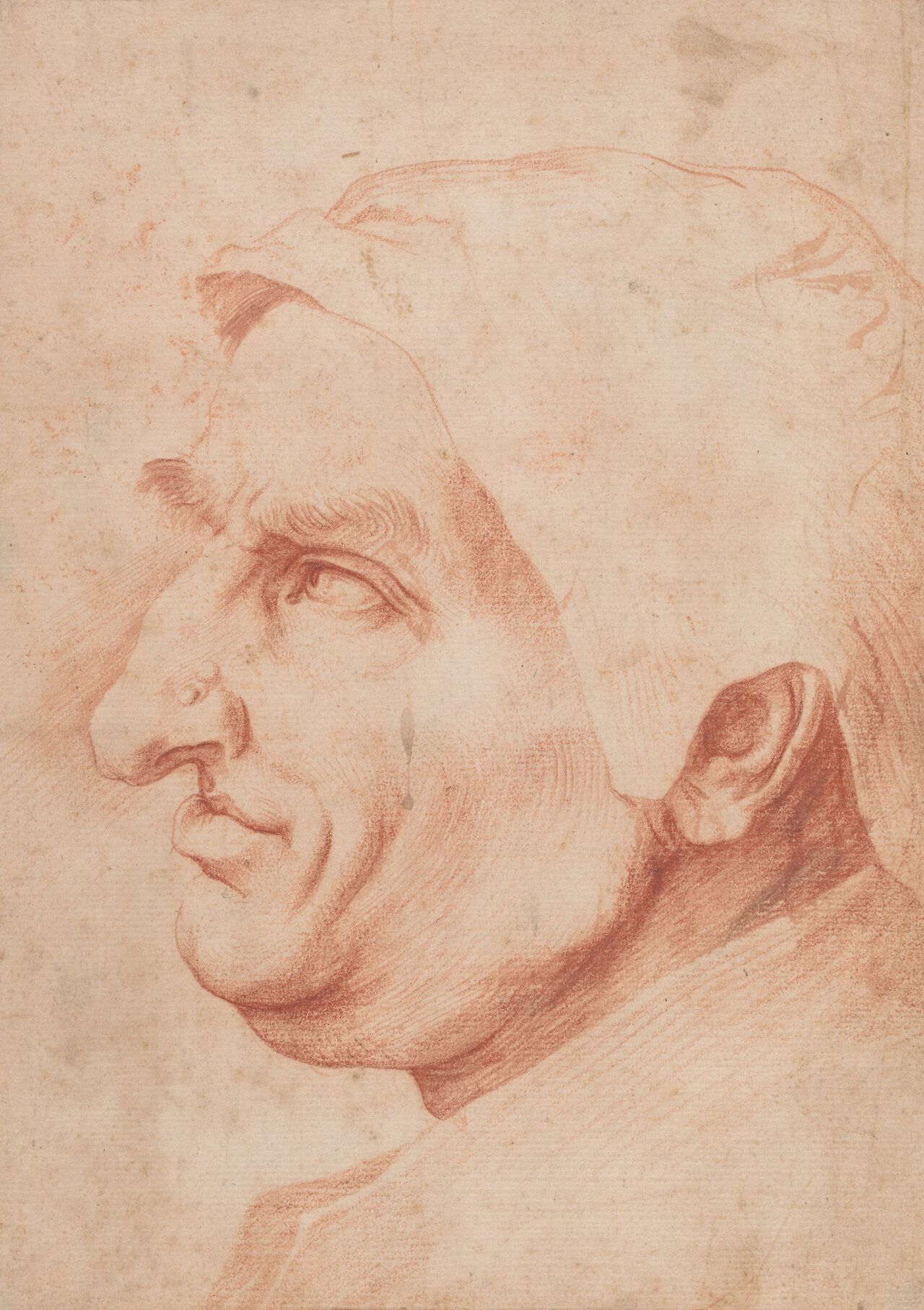
Head of a Man
by Jusepe de Ribera, circa 1620
- Medium
- Red chalk on laid paper
- Dimensions
- 30.5 x 24.5 cm (12 x 9 5/8 in)
- Credits
- Ailsa Mellon Bruce Fund.
- Location
- National Gallery of Art
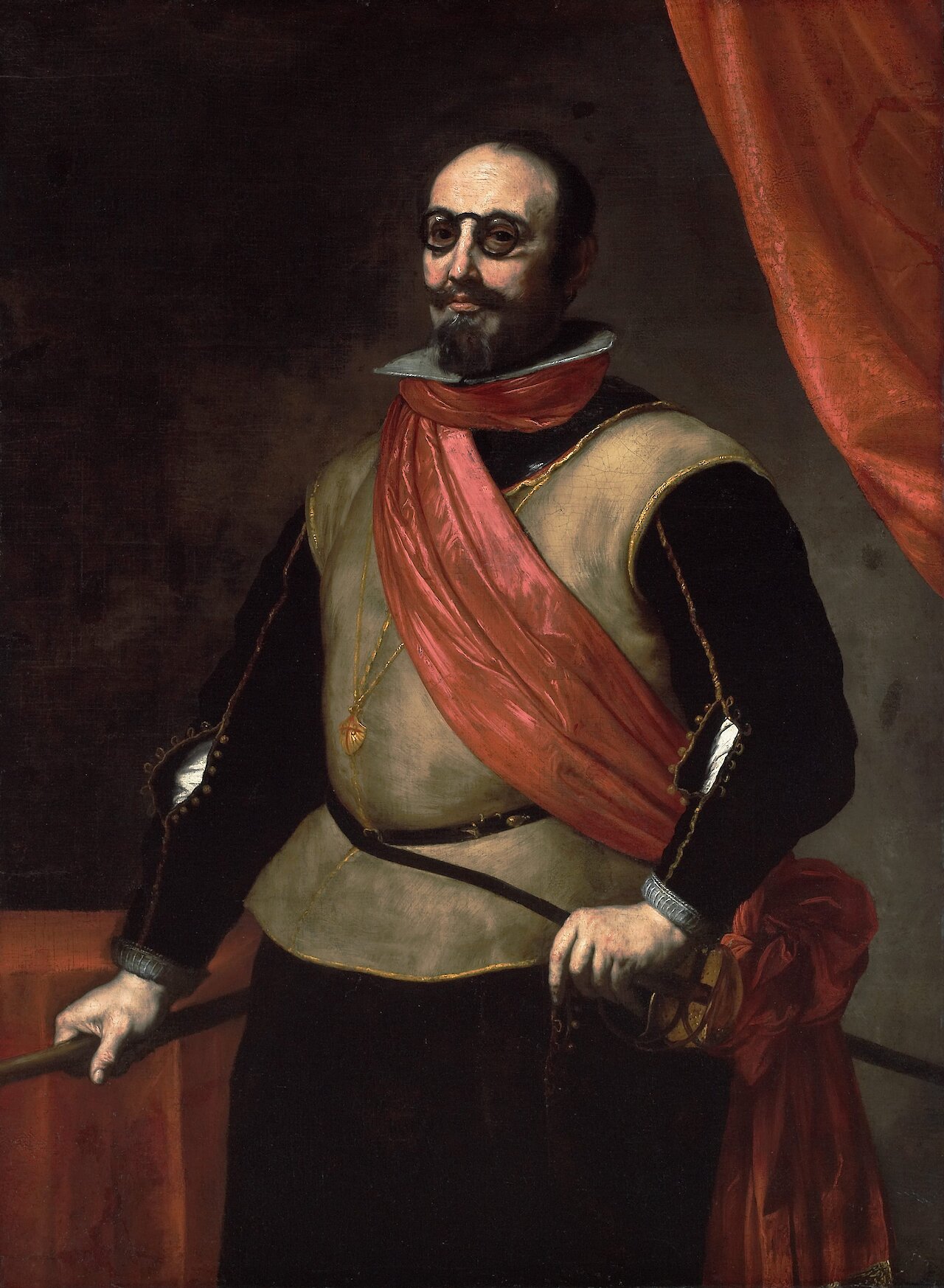
Portrait of a Knight of Santiago
by Jusepe de Ribera, circa 1635
- Medium
- Oil on canvas
- Dimensions
- 57 1/2 x 42 in (146.1 x 106.7 cm)
- Credits
- Meadows Museum, SMU, Dallas. Algur H. Meadows Collection, MM.77.02. Photography by Michael Bodycomb.
- Location
- Meadows Museum
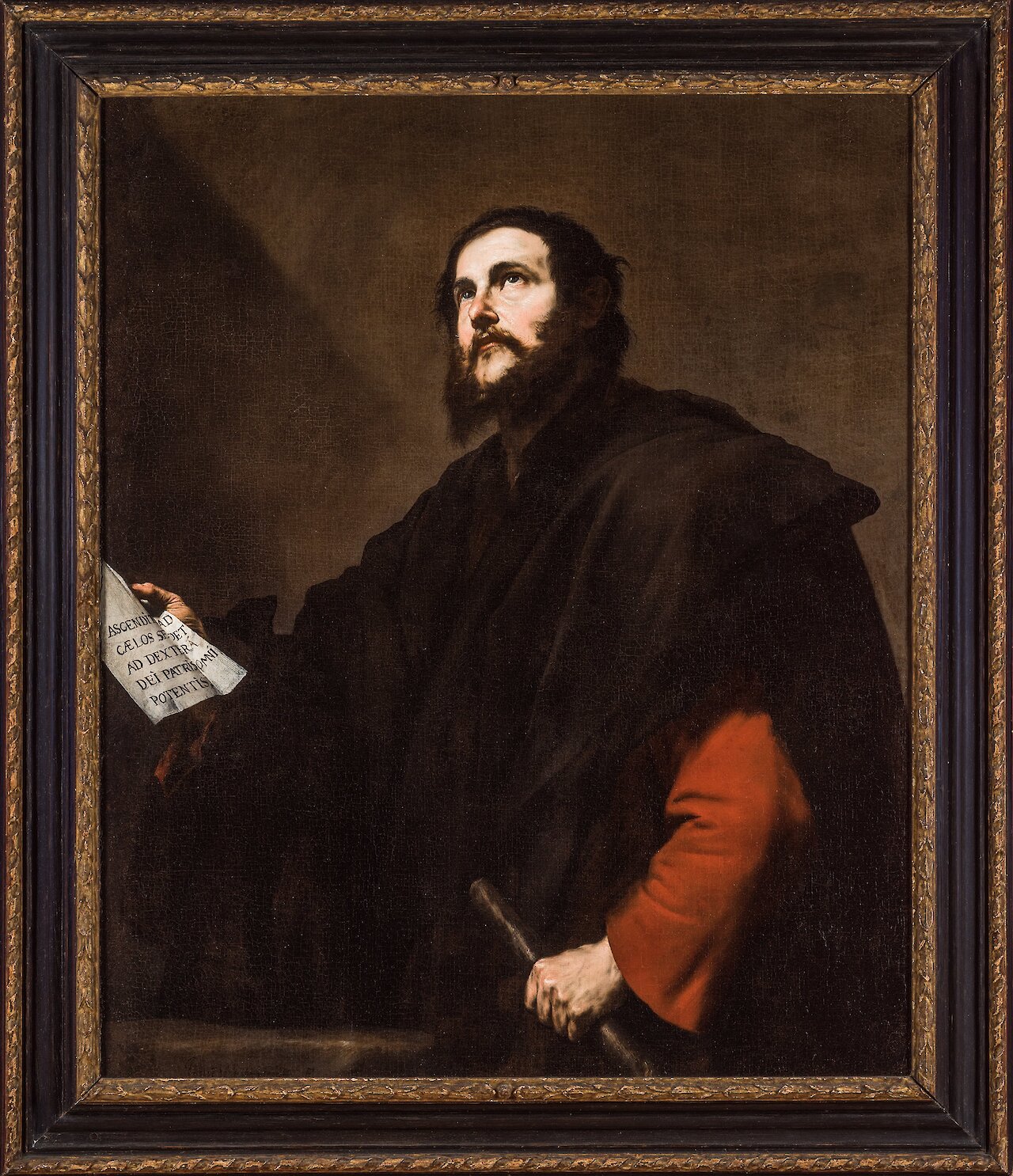
Saint Bartholomew
by Jusepe de Ribera, circa 1632
- Medium
- Oil
- Dimensions
- 47 x 38 1/2 in (119 x 98 cm)
- Location
- San Diego Museum of Art
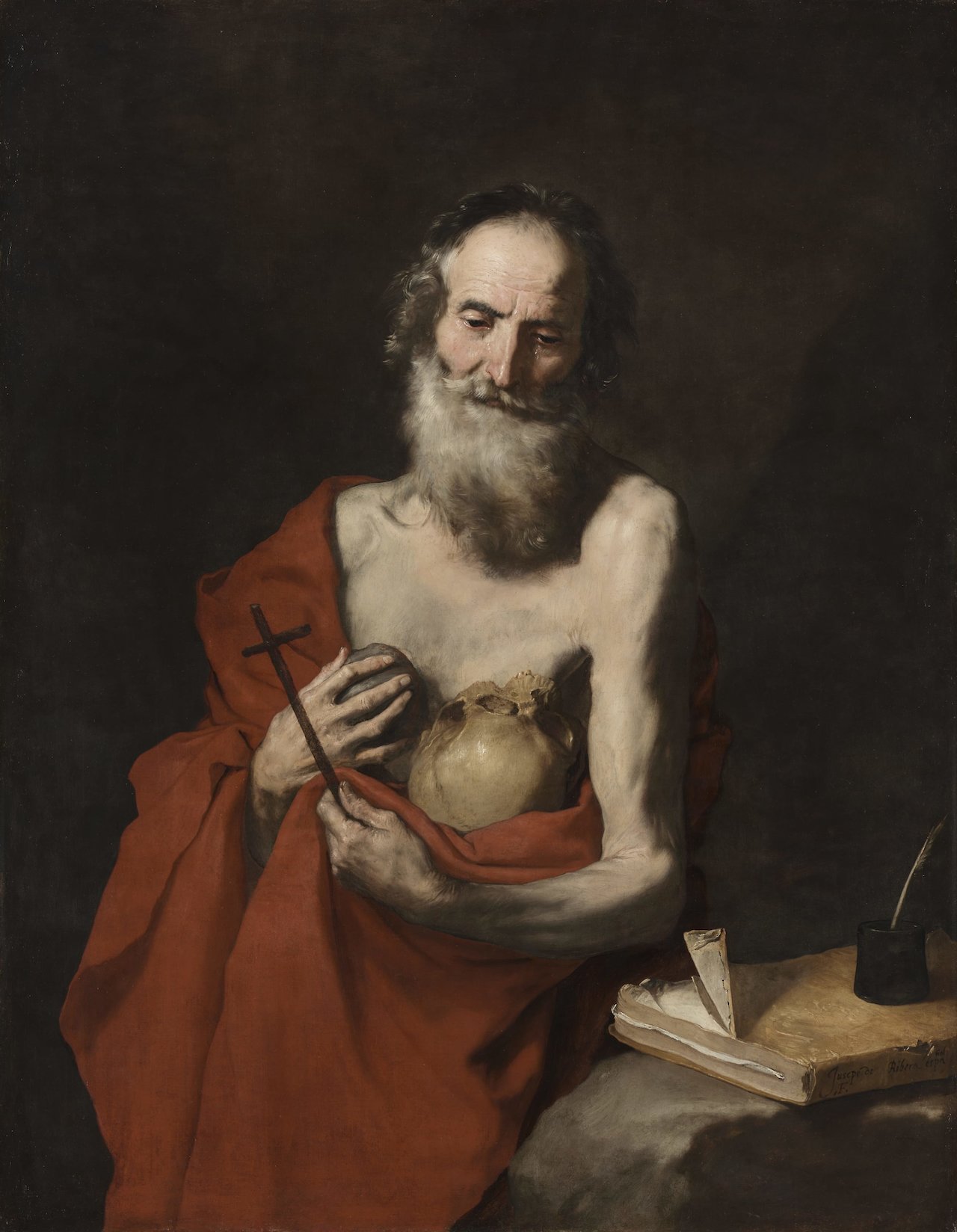
Saint Jerome
by Jusepe de Ribera, circa 1638–1640
- Medium
- Oil on canvas
- Dimensions
- Framed: 150 x 121.5 x 9 cm (59 1/16 x 47 13/16 x 3 9/16 in.); Unframed: 129 x 100.3 cm (50 13/16 x 39 1/2 in.)
- Location
- Cleveland Museum of Art
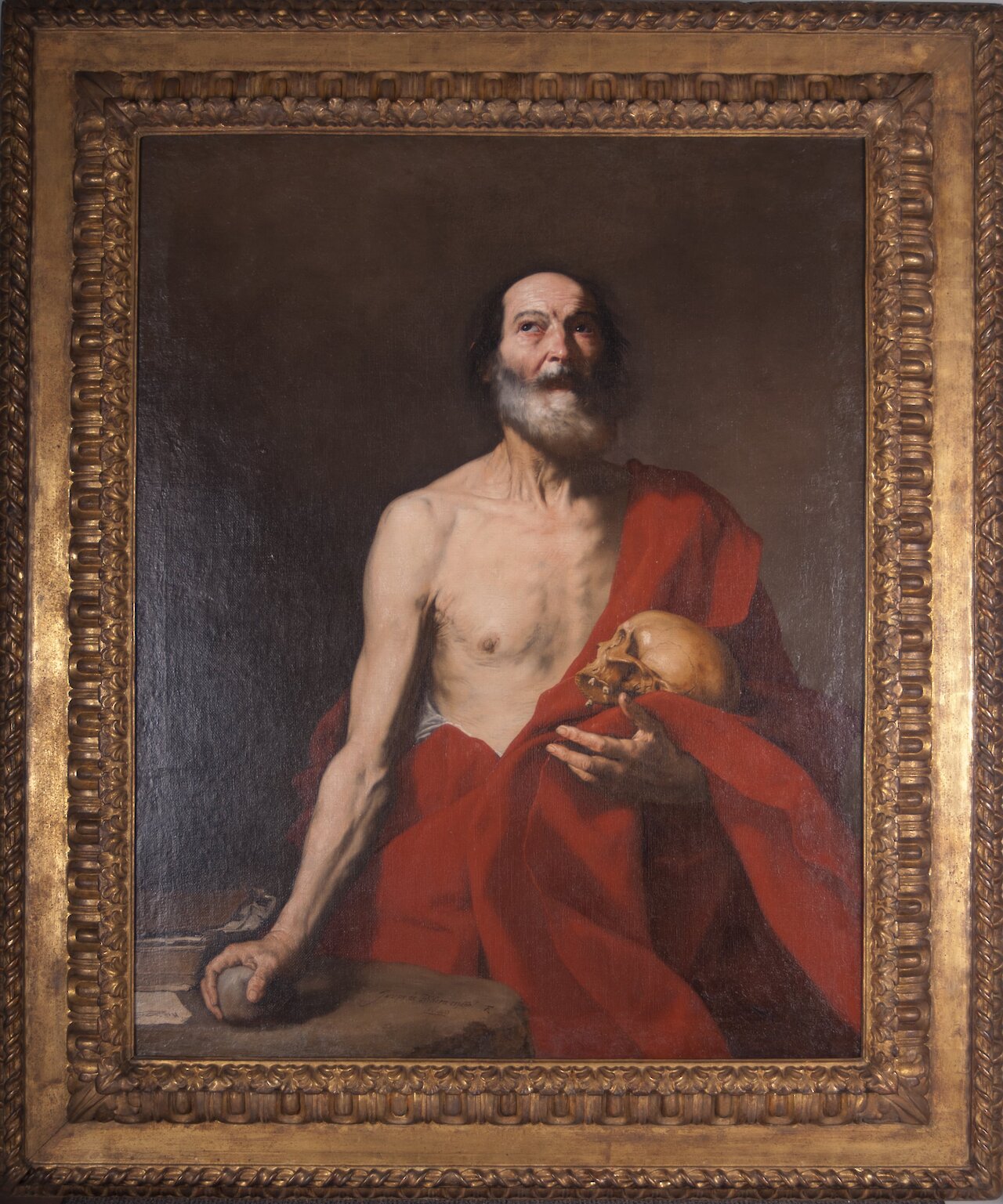
Saint Jerome
by Jusepe de Ribera, 1640
- Medium
- Oil on canvas
- Dimensions
- 128 x 101.3 cm (50 3/8 x 39 7/8 in); framed: 165 x 139.5 x 8.2 cm (64 15/16 x 54 15/16 x 3 1/4 in)
- Credits
- Harvard Art Museums/Fogg Museum, Gift of Arthur Sachs
- Location
- Harvard Art Museums
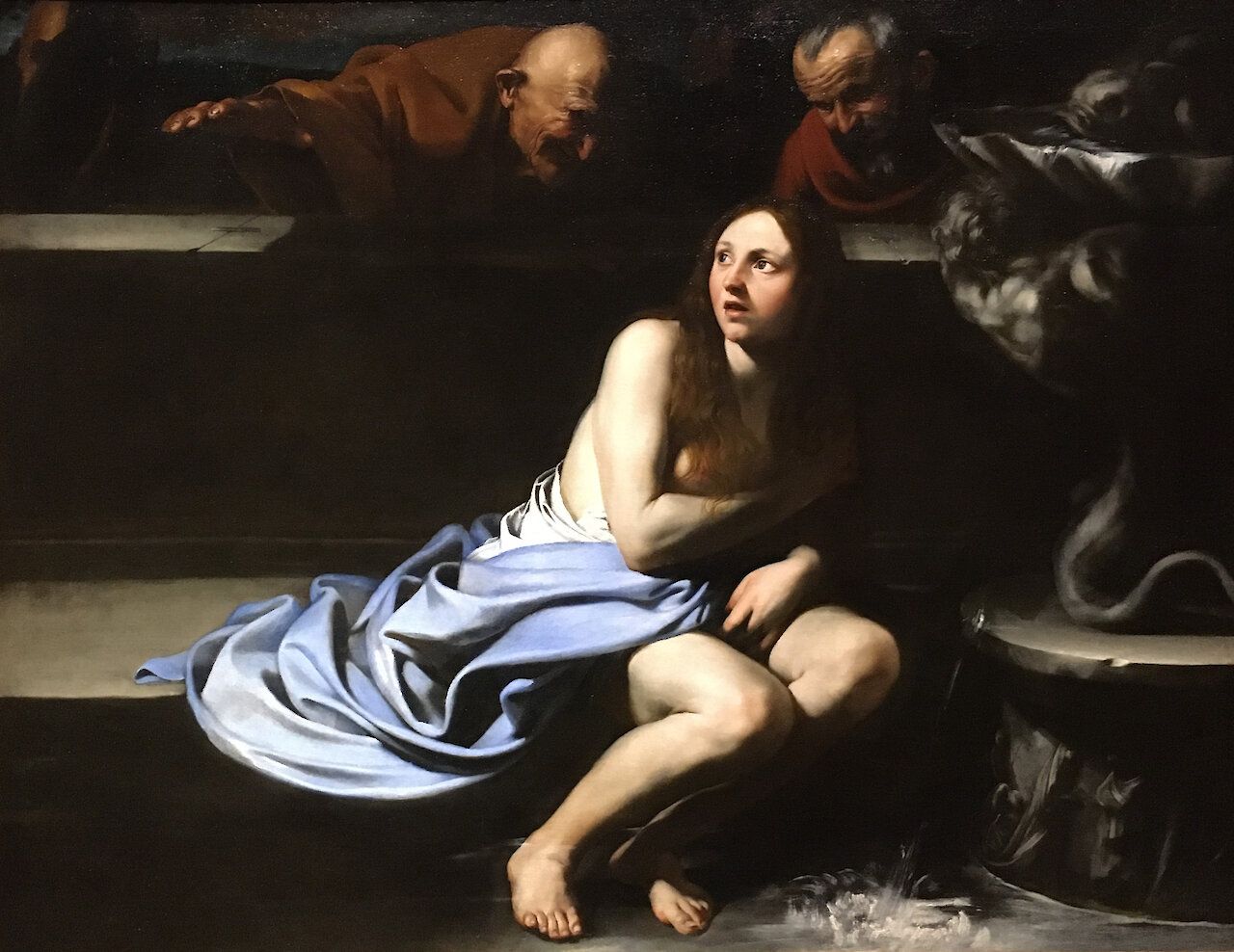
Susanna and the Elders
by Jusepe de Ribera, circa 1615
- Medium
- Oil
- Dimensions
- 70 9/32 x 54 1/8 in (179 x 138 cm)
- Location
- San Diego Museum of Art
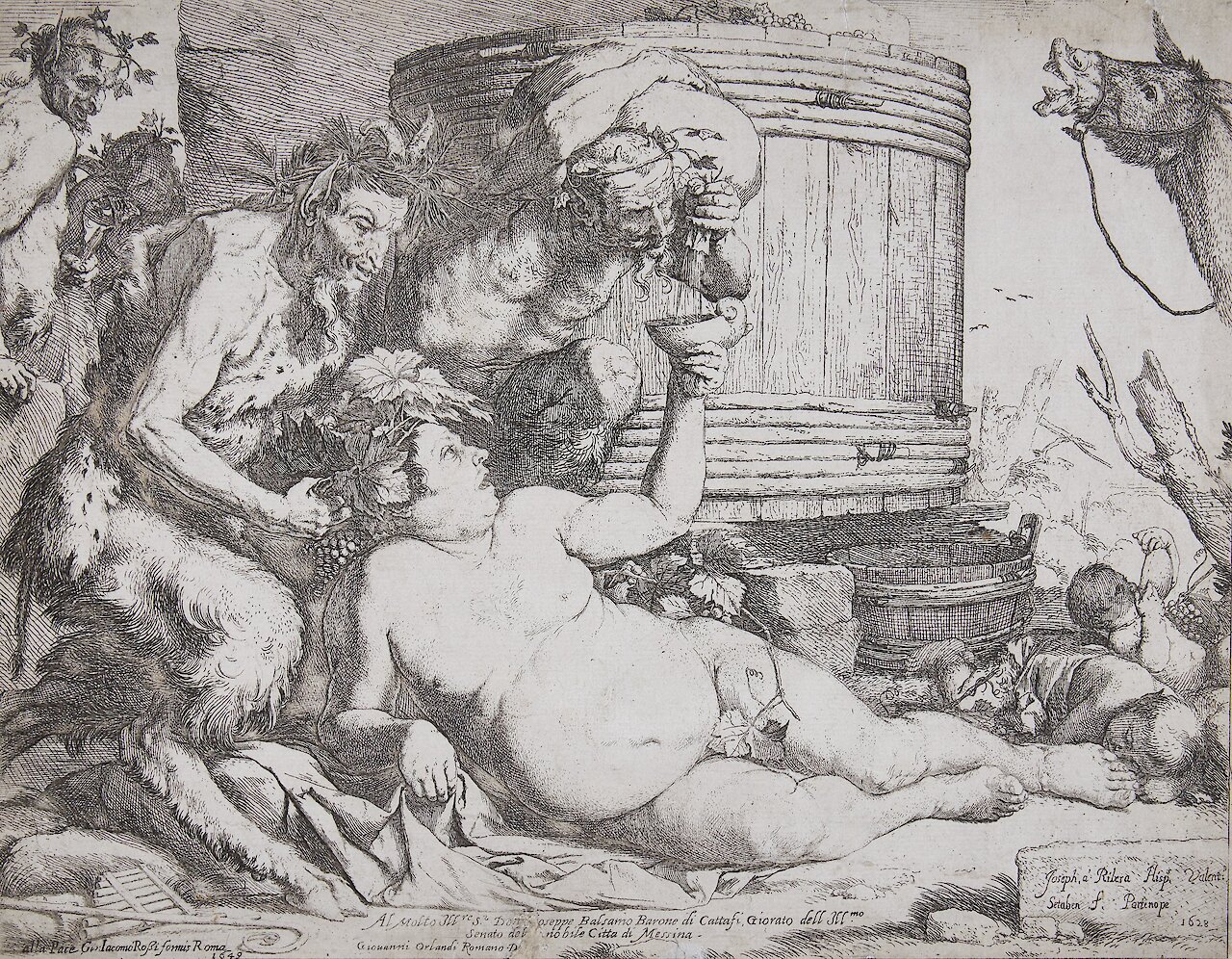
The Drunken Silenius
by Jusepe de Ribera, circa 1626
- Medium
- Etching on paper
- Dimensions
- Sheet: 10-5/8 x 14 in.
- Credits
- Gift of David Hilton in honor of Professor James Harper. © Jordan Schnitzer Museum of Art — University of Oregon
- Location
- Jordan Schnitzer Museum of Art
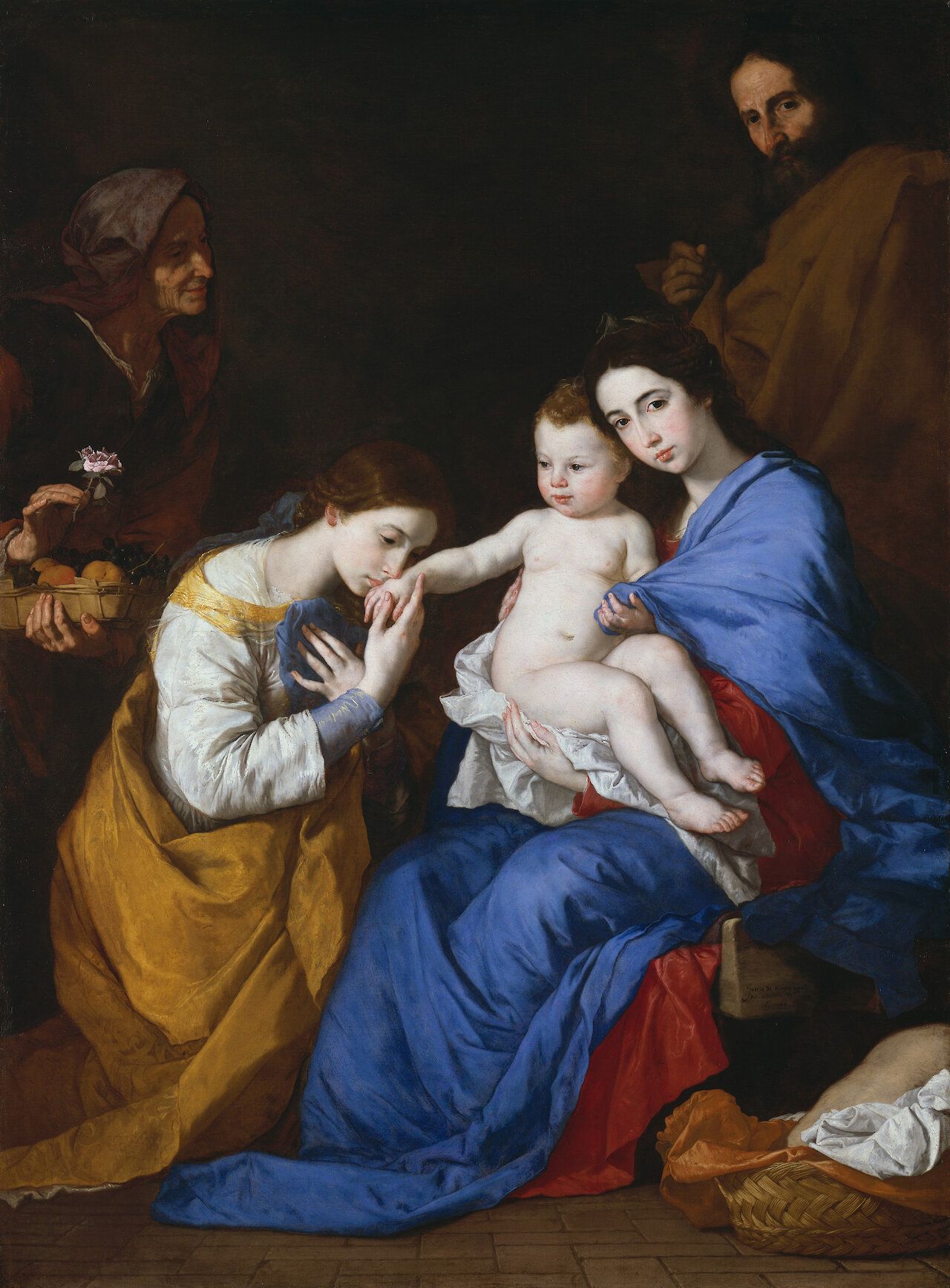
The Holy Family with Saints Anne and Catherine of Alexandria
by Jusepe de Ribera, 1648
- Medium
- Oil on canvas
- Dimensions
- 82 1/2 x 60 3/4 in (209.6 x 154.3 cm)
- Credits
- Samuel D. Lee Fund, 1934.
- Location
- The Metropolitan Museum of Art (The Met)
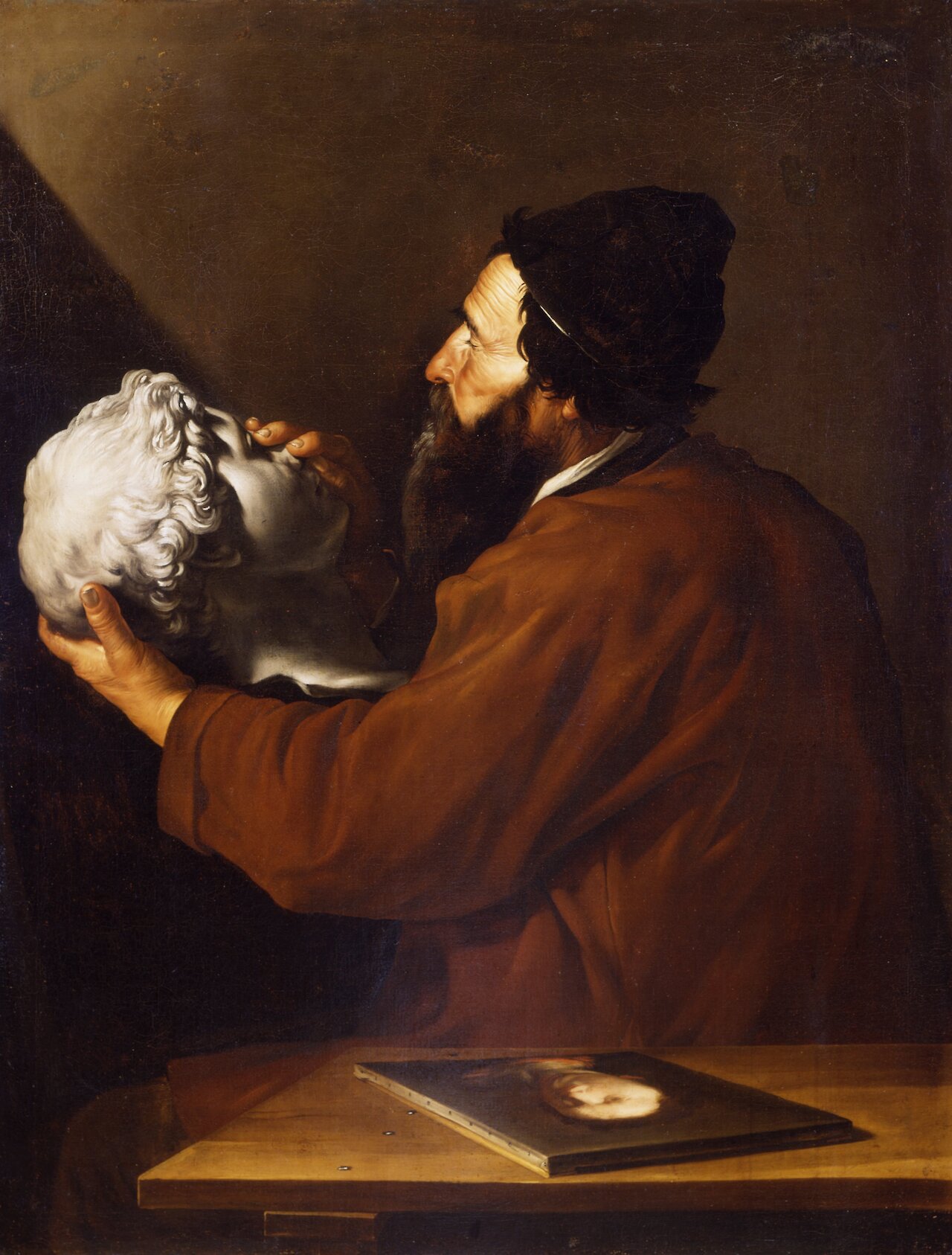
The Sense of Touch
by Jusepe de Ribera, circa 1615–1616
- Medium
- Oil on canvas
- Dimensions
- 45-5/8 x 34-3/4 in (115.9 x 88.3 cm)
- Credits
- The Norton Simon Foundation
- Location
- Norton Simon Museum
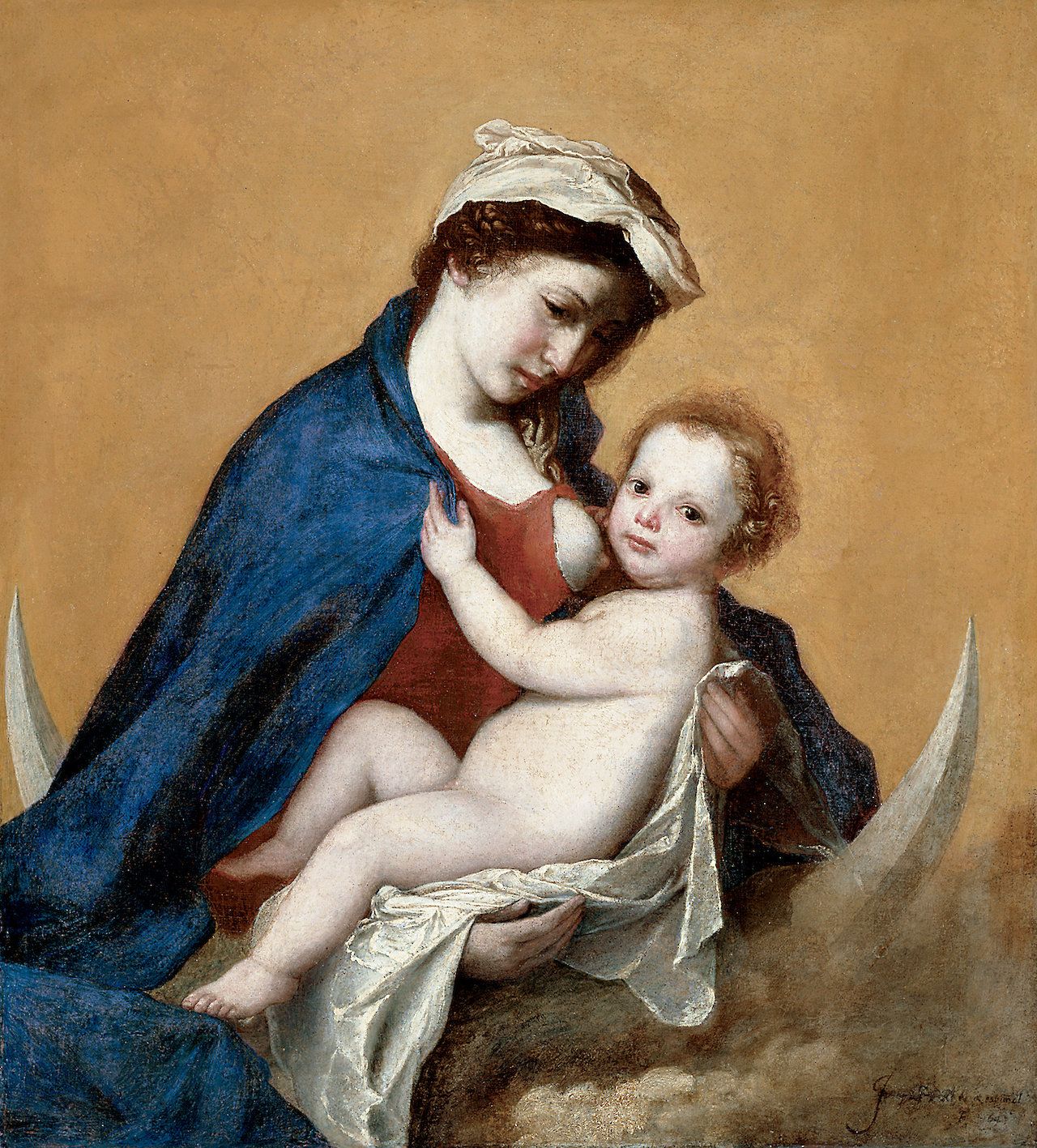
Virgin and Child
by Jusepe de Ribera, 1643
- Medium
- Oil on canvas
- Location
- John and Mable Ringling Museum of Art
Rico y Ortega, Martín
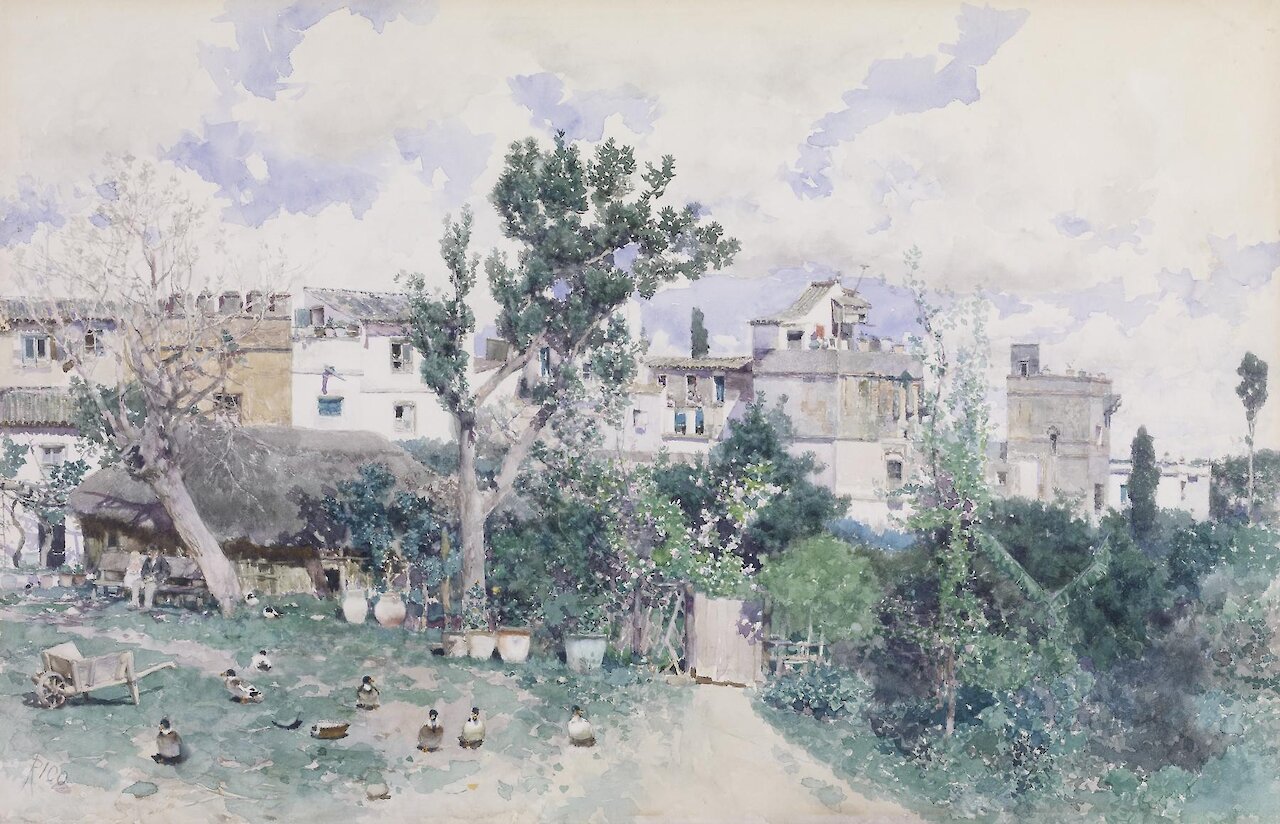
La Huerta, Seville
by Martín Rico y Ortega, circa 1870–1880
- Medium
- Watercolor on paper
- Dimensions
- 12 5/8 × 19 5/16 in (32 × 49 cm); Framed: 22 × 27 × 1 1/4 in (55.88 × 68.58 × 3.18 cm)
- Credits
- Acquired by Henry Walters, 1898
- Location
- Walters Art Museum
Rizi, Francisco
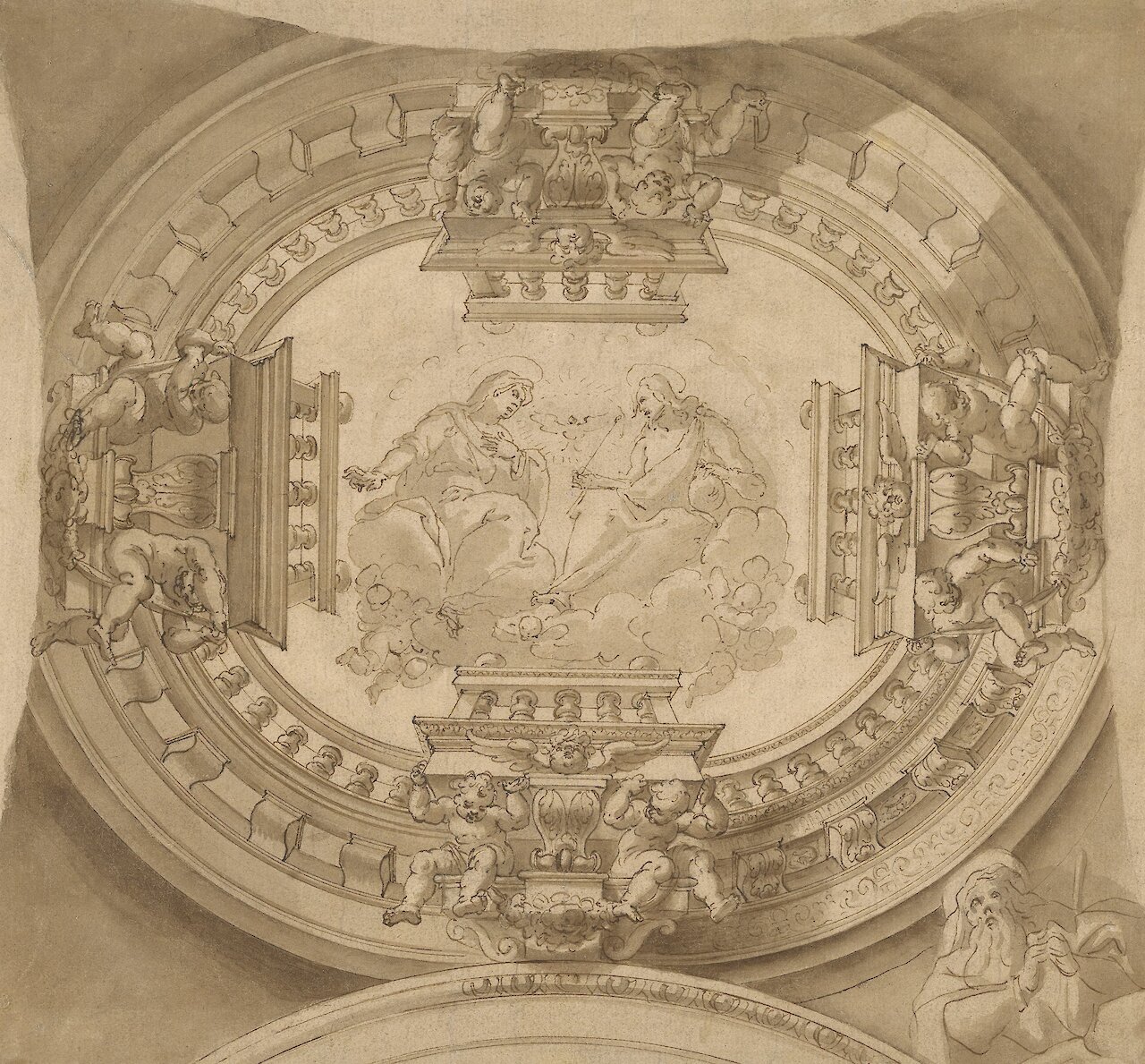
Study for a Ceiling with the Virgin and Christ in Glory
by Francisco Rizi, circa 1678
- Medium
- Pen and brown ink and brown wash with some graphite
- Dimensions
- 26.7 × 28.9 cm (10 1/2 × 11 3/8 in)
- Notes
Francisco Rizi made this complete decorative and architectural design for a cupola, a small dome of a church. The central compartment depicts the Virgin Mary and Christ seated amid clouds and framed on four sides by pairs of putti supporting balustrades. In the lower right corner, Rizi drew a prophet. Rizi was Madrid's major practitioner of illusionistic architectural painting, or quadratura, which Italian artists had introduced earlier in the 1600s. The building for which this design was intended is not known.
- Location
- J. Paul Getty Museum
Roldán (La Roldana), Luisa
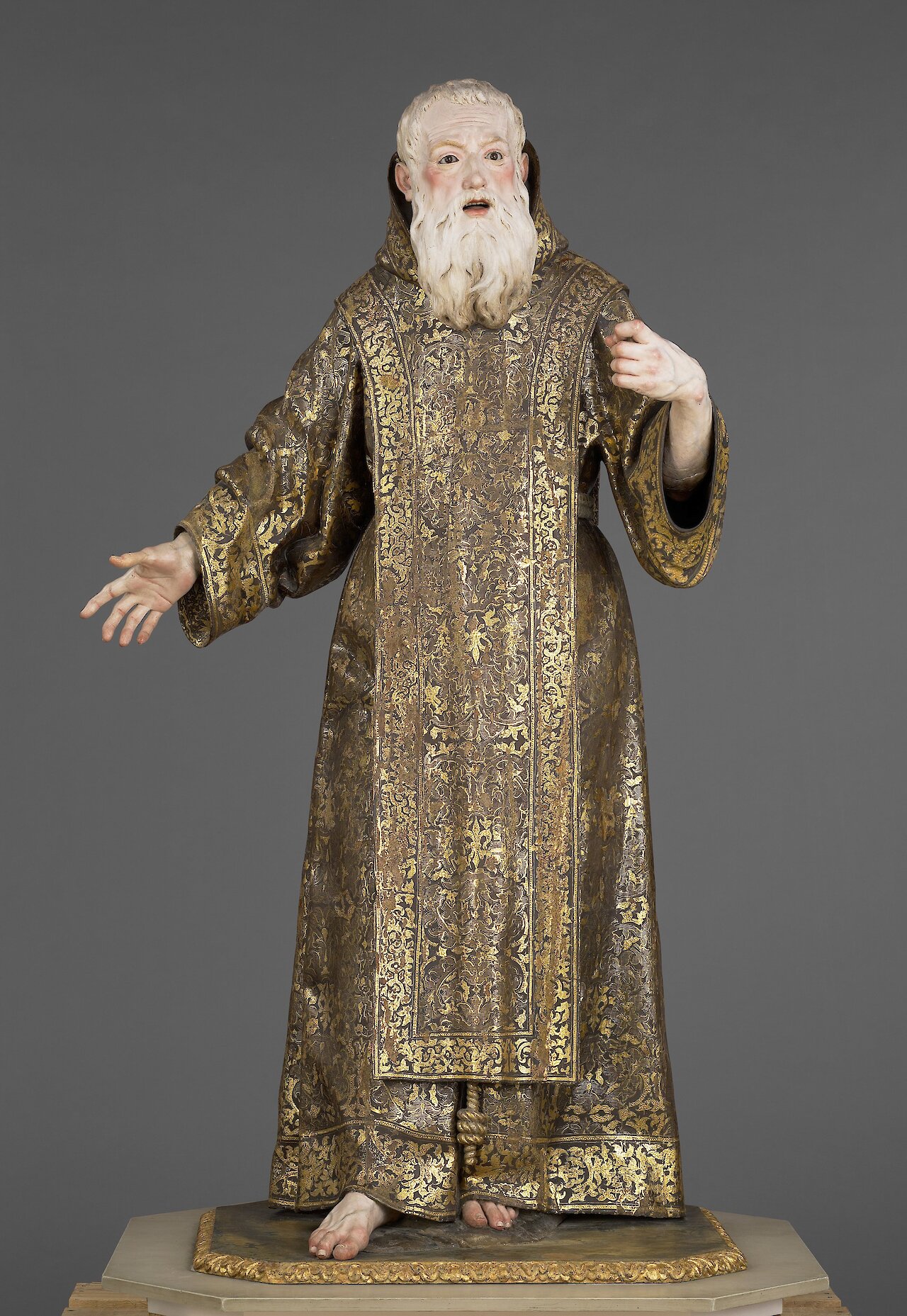
Saint Ginés de la Jara
by Luisa Roldán (La Roldana), circa 1692
- Medium
- Polychromed wood (pine and cedar) with glass eyes
- Dimensions
- Object: H: 175.9 × W: 92 × D: 74 cm (5 ft 9 1/4 in × 3 ft. 3/16 in. × 2 ft 5 1/8 in)
- Notes
In a richly brocaded robe, with rosy cheeks, shining eyes, and outstretched arms, Saint Ginés de la Jara appeals to the faithful standing before him. His gestures and open mouth suggest that he is preaching. According to legend, after Saint Ginés was decapitated in southern France, he picked up his head and tossed it into the Rhône River. Carried by the sea to the coast of southeastern Spain, it was retrieved and conserved as a relic. Life-sized, devotional cult objects often included glass eyes and were often made out of wood that could be painted in order to achieve lifelike results. Reinforcing the emotional experience of the faithful, such heightened realism typified Spanish Baroque art at a time when the Catholic Church sought to make Christianity more accessible to believers.
Luisa Roldán, also called La Roldana, carved the work. The figure was polychromed by her brother-in-law, Tomás de los Arcos, who used the Spanish technique of estofado to replicate the brocaded ecclesiastical garments. In this process, the area of the figure's garment was first covered in gold leaf and painted over with brown paint, and then incised with a stylus to reveal the gold underneath.
- Location
- J. Paul Getty Museum
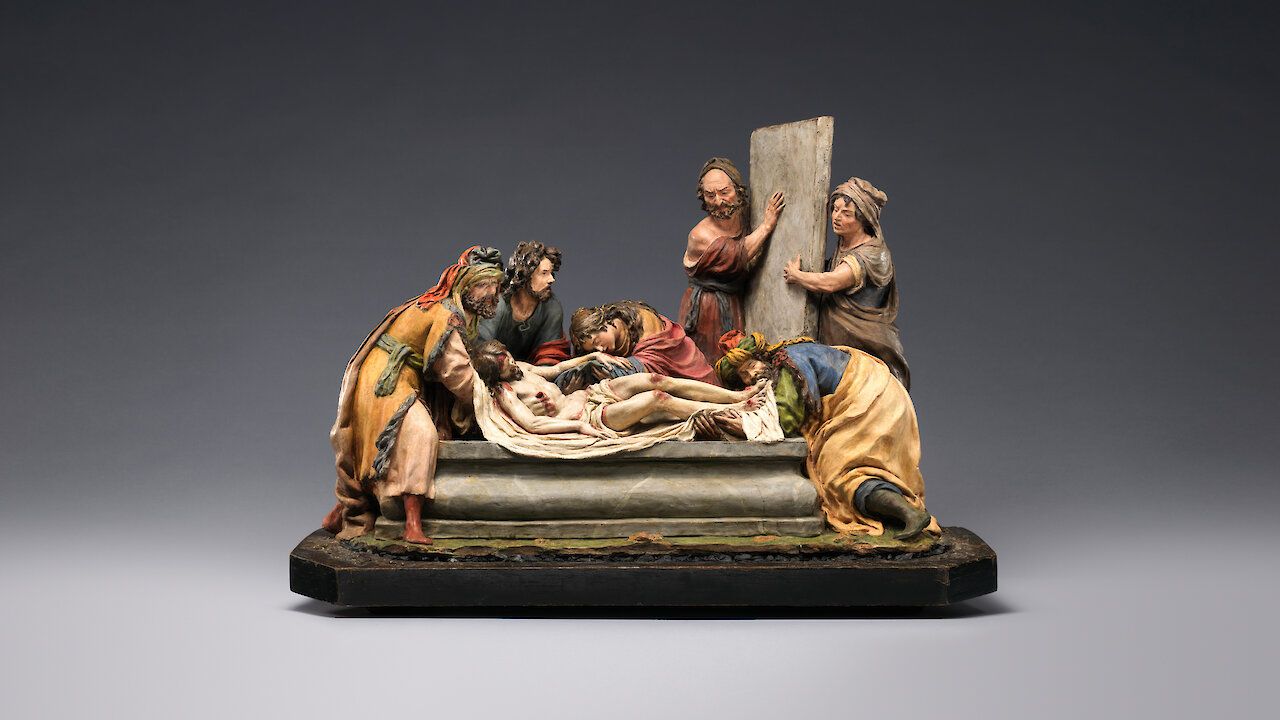
The Entombment of Christ
by Luisa Roldán (La Roldana), circa 1700–1701
- Medium
- Polychrome terracotta
- Dimensions
- Overall: 19 1/2 × 26 × 17 in (49.5 × 66 × 43.2 cm)
- Credits
- Purchase, several members of The Chairman’s Council Gifts, Walter and Leonore Annenberg Acquisitions Endowment Fund, private donors; The Bernard and Audrey Aronson Charitable Trust Gift, in memory of her beloved husband, Bernard Aronson; Anonymous Gift and Louis V. Bell Fund, 2016.
- Location
- The Metropolitan Museum of Art (The Met)
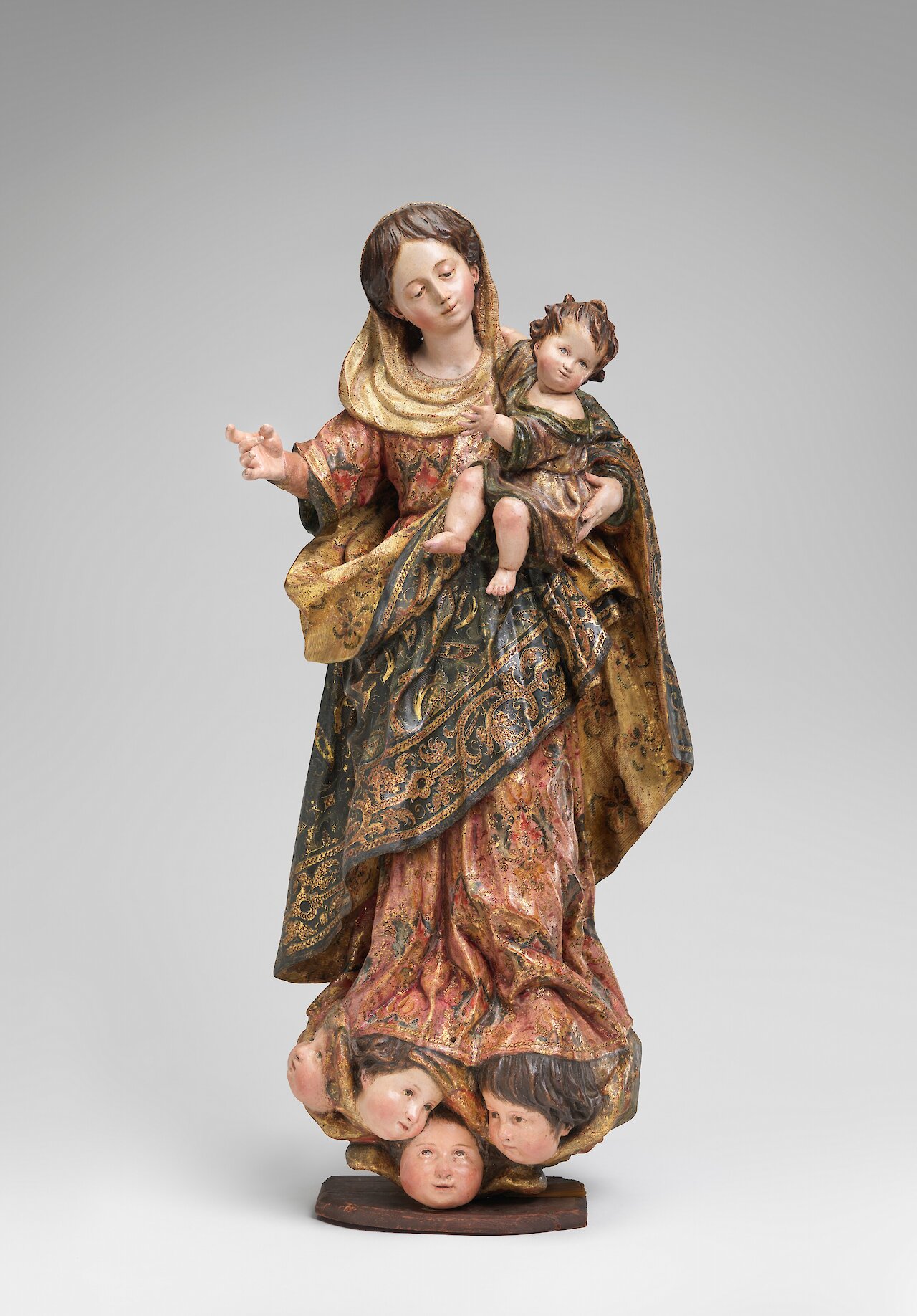
Virgin and Child
by Luisa Roldán (La Roldana), circa 1680–1686
- Medium
- Painted wood
- Dimensions
- 56.52 × 24.45 × 16.99 cm (22 1/4 × 9 5/8 × 6 11/16 in)
- Credits
- Pepita Milmore Memorial Fund, Patrons’ Permanent Fund and William and Buffy Cafritz Family Sculpture Fund.
- Location
- National Gallery of Art
Ruiz Gijón, Francisco Antonio
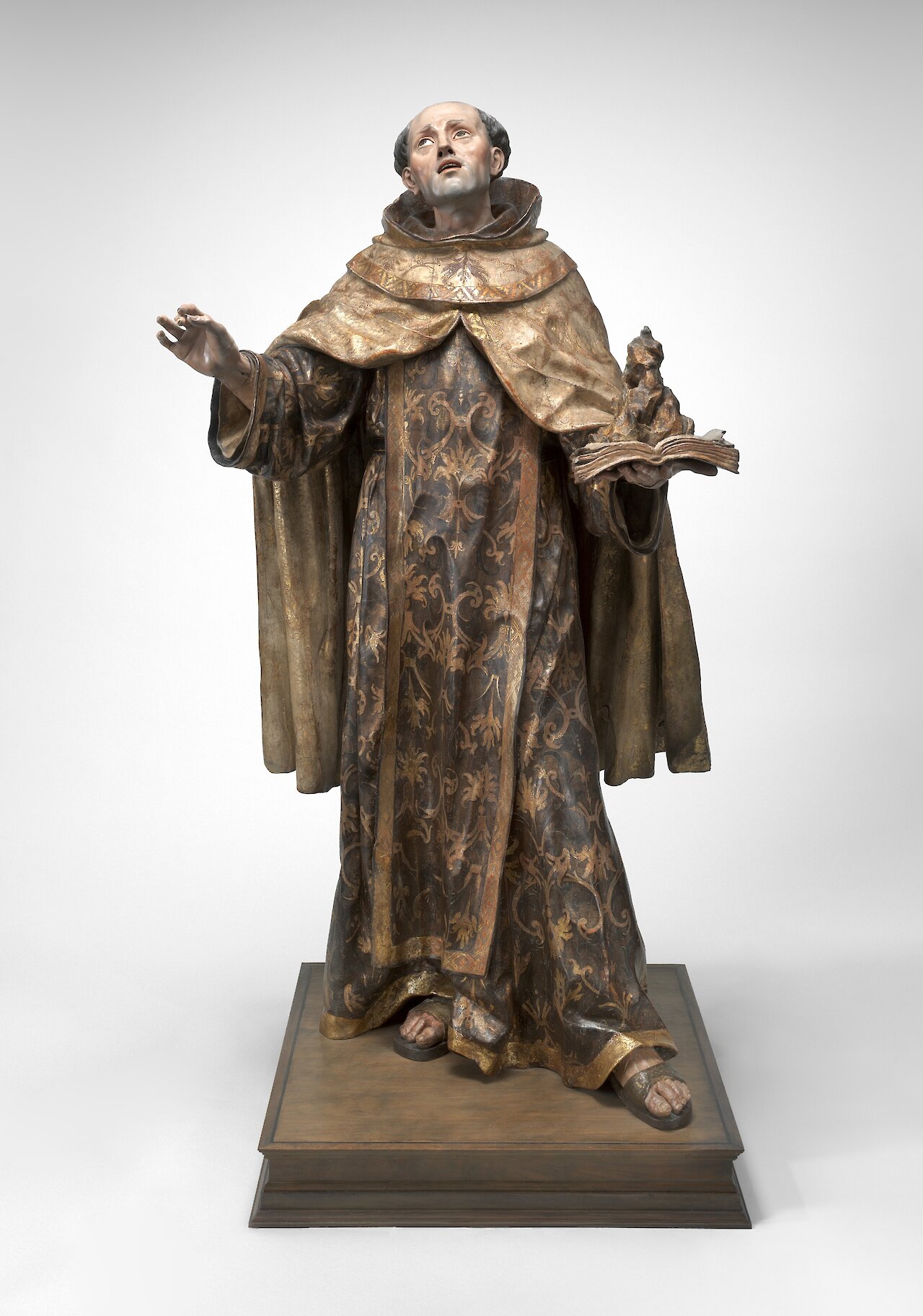
Saint John of the Cross (San Juan de la Cruz)
by Francisco Antonio Ruiz Gijón, 1675
- Medium
- Polychromed and gilded wood with sgraffitto decoration
- Dimensions
- 167.96 x 93.35 x 74.3 cm (66 1/8 x 36 3/4 x 29 1/4 in)
- Credits
- Patrons’ Permanent Fund.
- Location
- National Gallery of Art
Rusiñol, Santiago
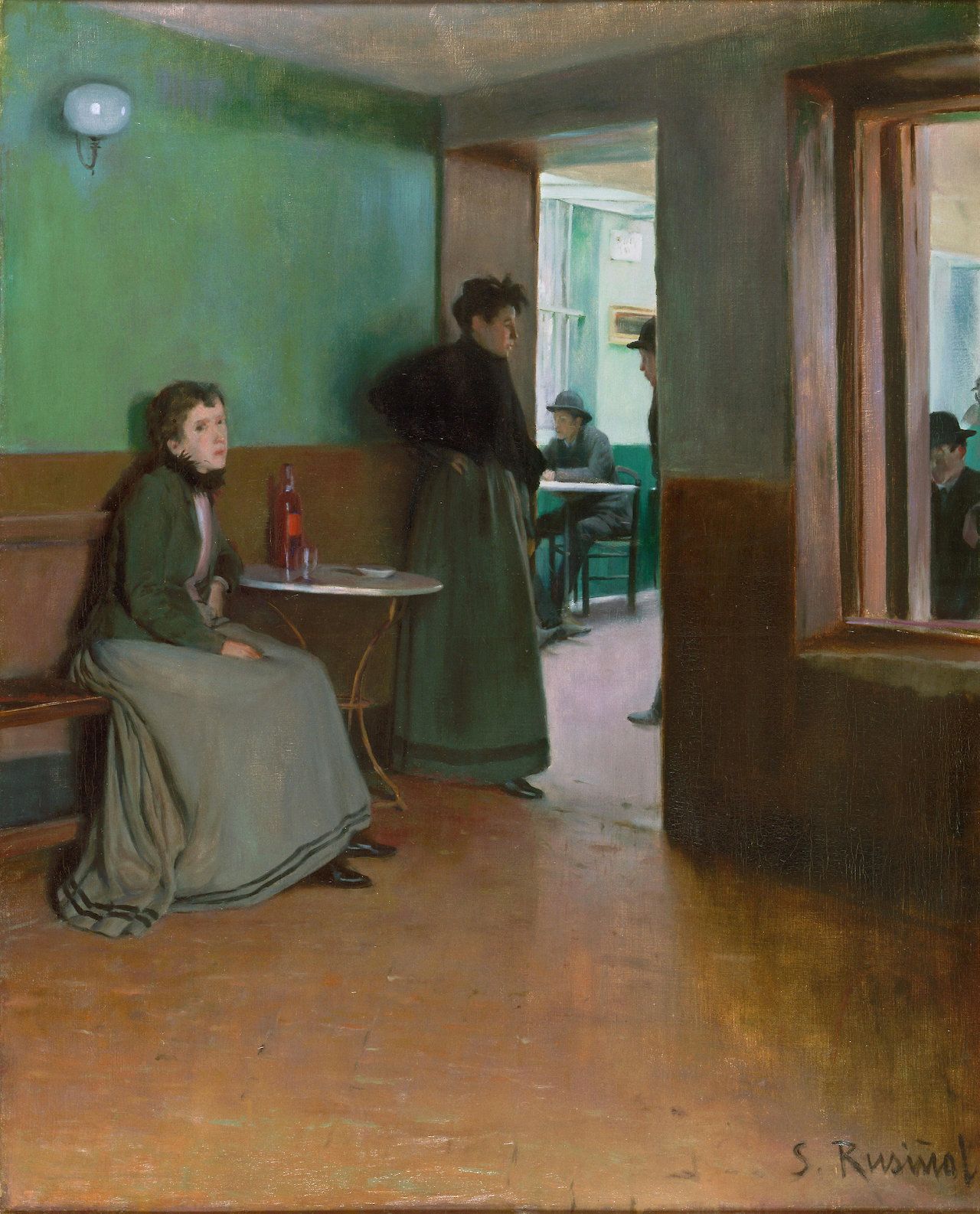
Interior of a Café
by Santiago Rusiñol, 1892
- Medium
- Oil on canvas
- Dimensions
- 39 1/2 × 32 in (100.3 × 81.3 cm). Framed: 51 1/2 × 44 1/4 × 3 in (130.8 × 112.4 × 7.6 cm)
- Credits
- John G. Johnson Collection, 1917
- Location
- Philadelphia Museum of Art
Saint Beatus of Liébana
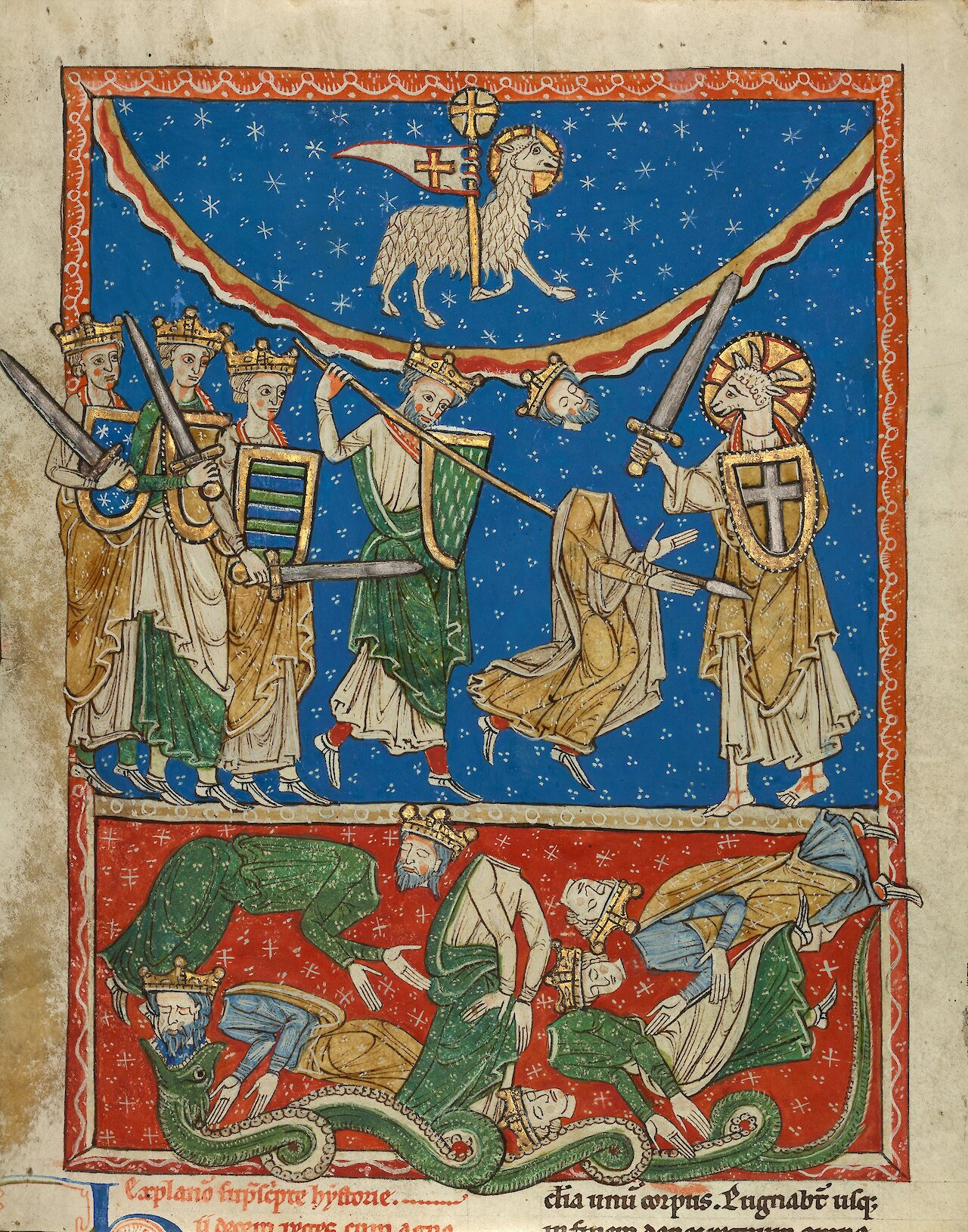
Leaf from Commentarius in Apocalypsim
by Saint Beatus of Liébana, circa 1220–1235
- Medium
- Tempera colors, gold leaf, and ink
- Dimensions
- Leaf: 29.4 × 23.5 cm (11 9/16 × 9 1/4 in)
- Location
- J. Paul Getty Museum
Sánchez Coello, Alonso
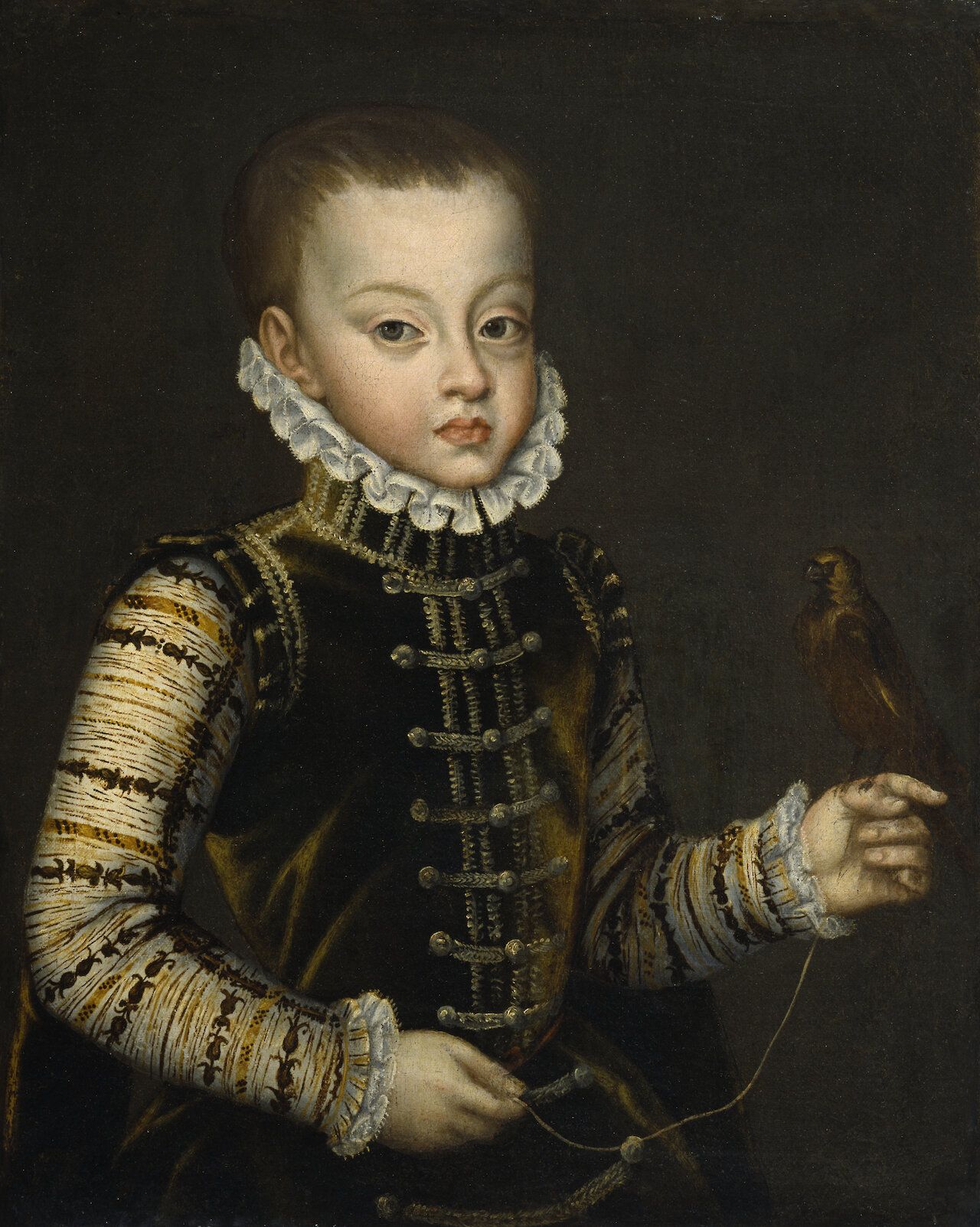
Portrait of Infante Ferdinand of Spain
by Alonso Sánchez Coello, circa 1574
- Medium
- Oil on canvas
- Dimensions
- 22 7/8 x 18 1/4 in (58 x 46.3 cm)
- Credits
- Acquired by Henry Walters with the Massarenti Collection, 1902
- Location
- Walters Art Museum
Sánchez Cotán, Juan
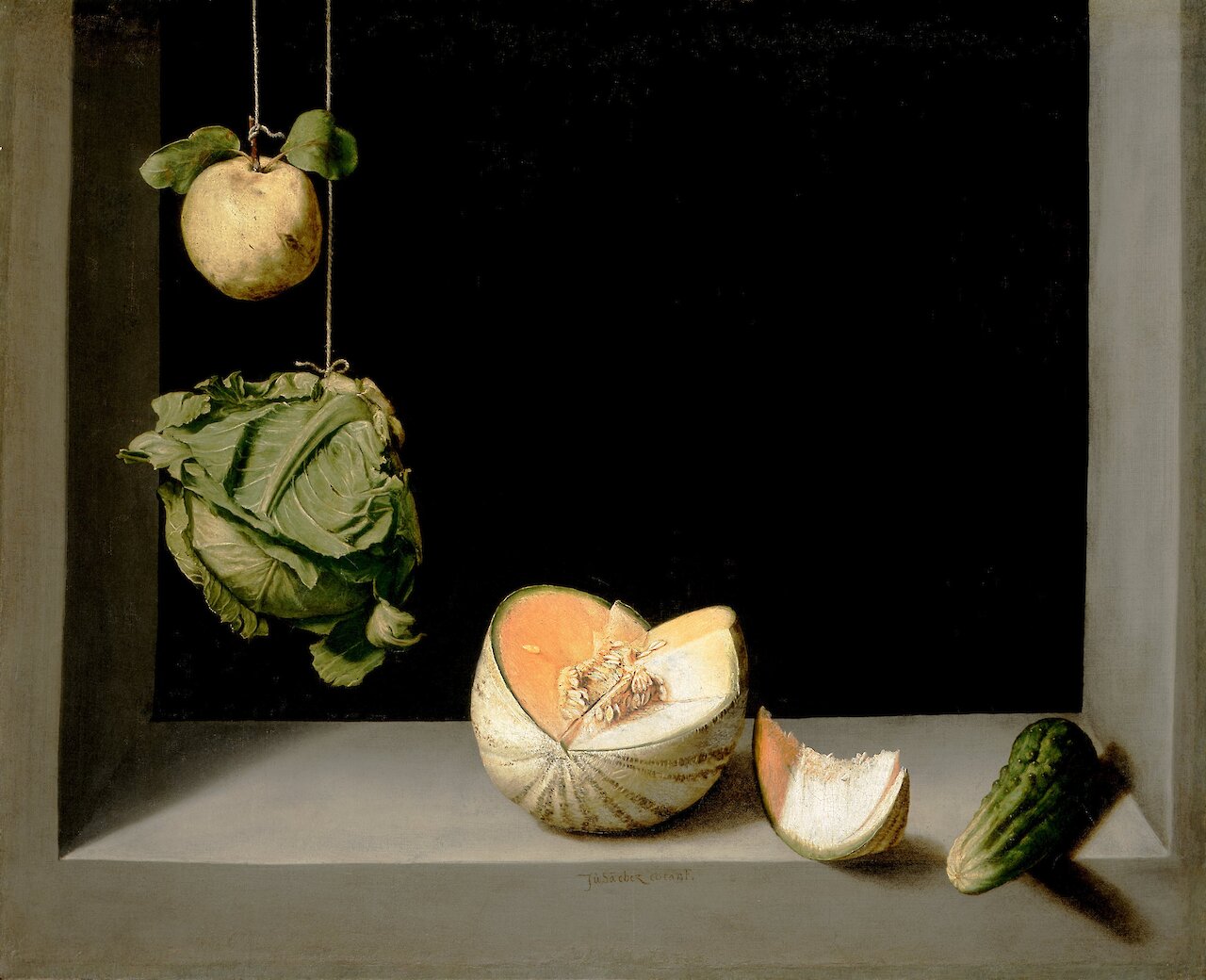
Still Life with Quince, Cabbage, Melon, and Cucumber
by Juan Sánchez Cotán, circa 1602
- Medium
- Oil
- Dimensions
- 27 1/8 in x 33 1/4 in (68.9 cm x 84.46 cm)
- Location
- San Diego Museum of Art
Sierra Payba, Jose
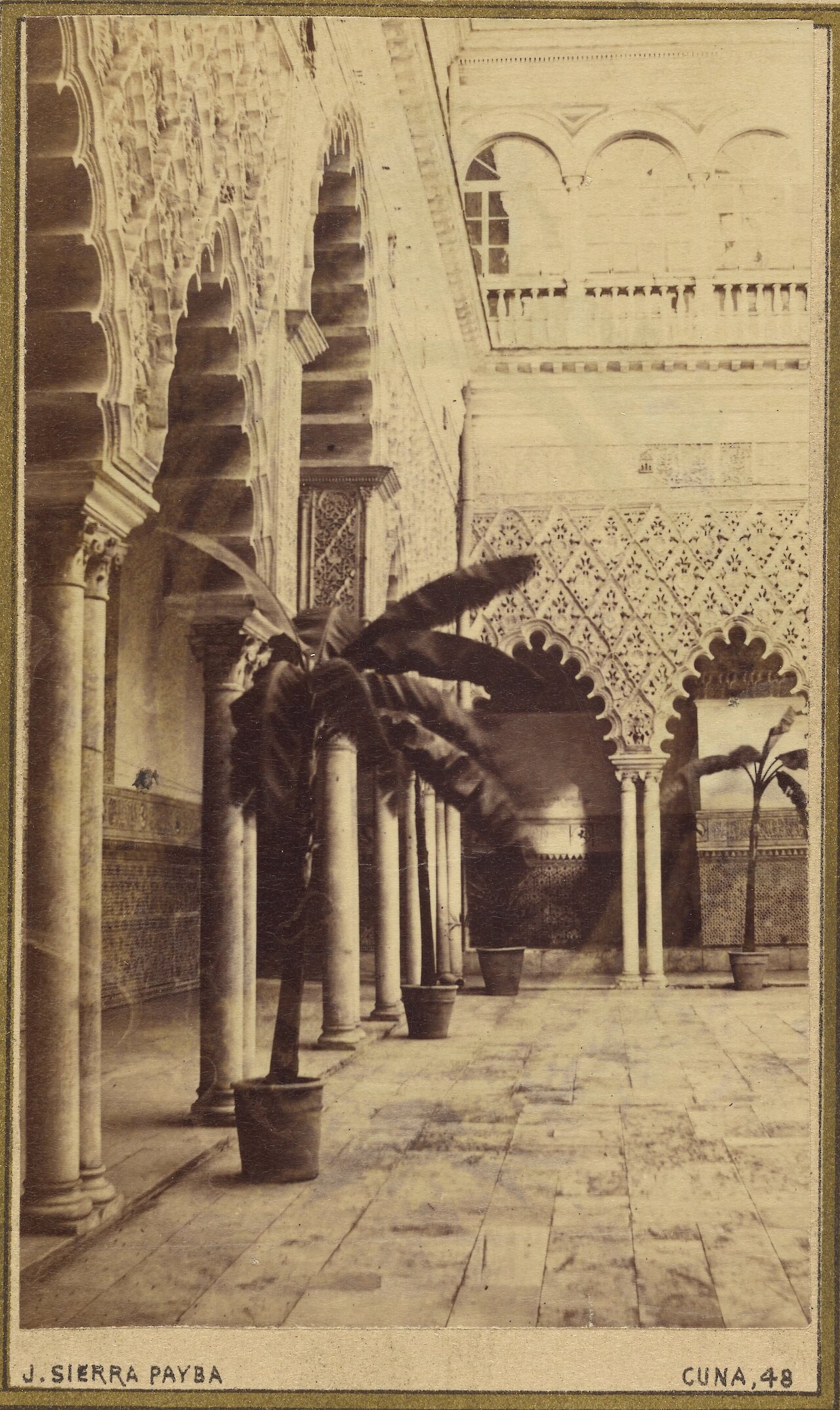
Principal court Alcazar. Seville
by Jose Sierra Payba, 1867
- Medium
- Albumen silver print
- Location
- J. Paul Getty Museum
Sorolla y Bastida, Joaquín
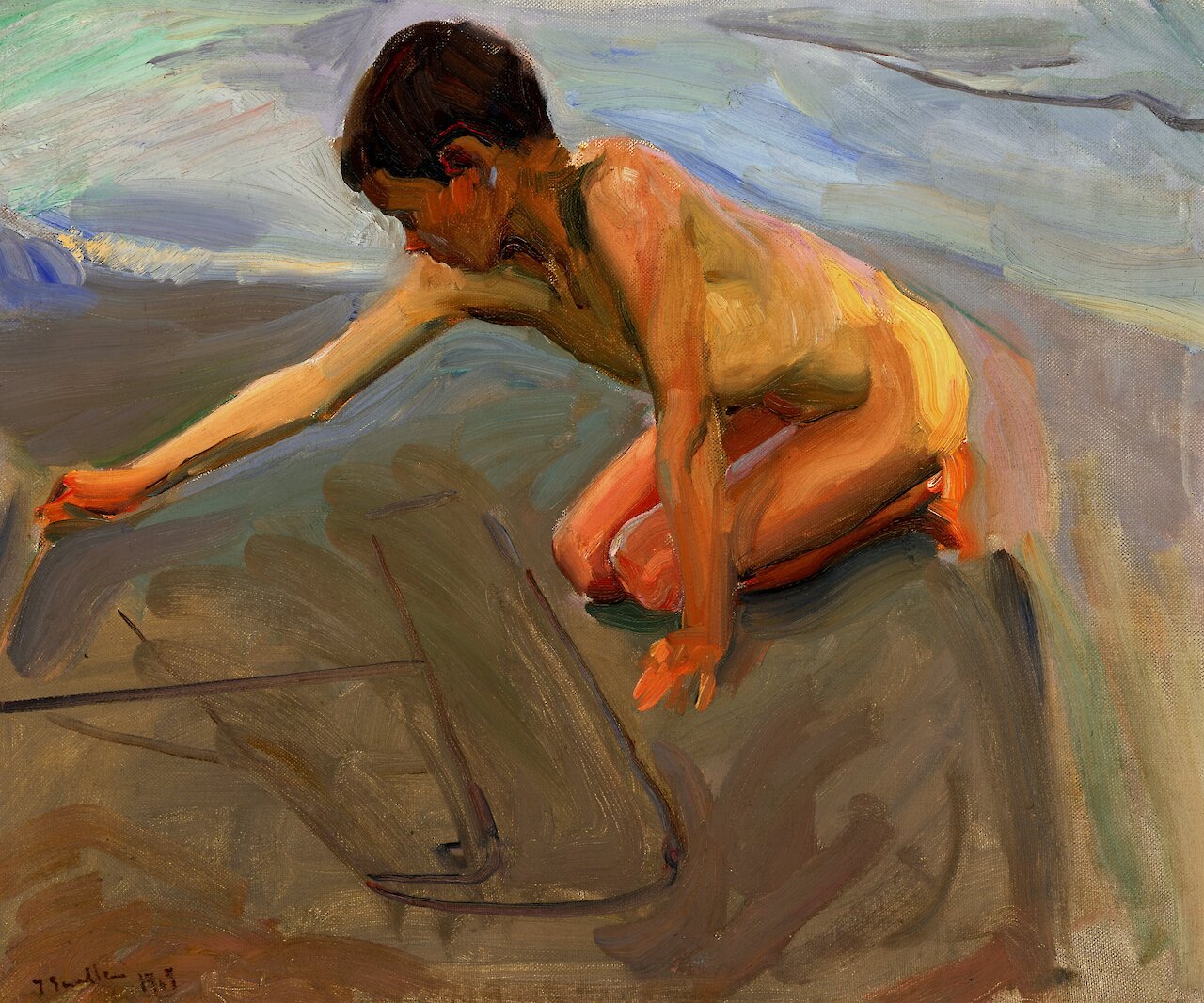
Drawing in the Sand
by Joaquín Sorolla y Bastida, circa 1911
- Medium
- Oil on canvas
- Dimensions
- 21 × 25 1/4 in (53.34 × 64.14 cm)
- Credits
- Milwaukee Art Museum, Gift of the Samuel O. Buckner Collection M1919.30. Photo by Larry Sanders
- Notes
Although sometimes associated with the Impressionist and Symbolists who painted at the same time, Sorolla remained independent of a specific art movement. At the same time, he created some of the most modern paintings of the early 20th century. A 1909 solo show in New York featured 356 of his paintings and introduced him to an American audience. Touted as “the Spanish painter of sunlight and color” by the New York Times, 169,000 visitors attended the show in about a month. He was soon given a commission for a series of murals celebrating traditional life in Spain for the Hispanic Society of America, which he painted between 1911 and 1919. Milwaukee was at the forefront of Sorolla’s popularity in America. “Drawing in the Sand” was a gift to the Milwaukee Art Institute in 1911 from its early president, Samuel O. Buckner (Catherine Sawinski, Assistant Curator of European Art)
- Location
- Milwaukee Art Museum
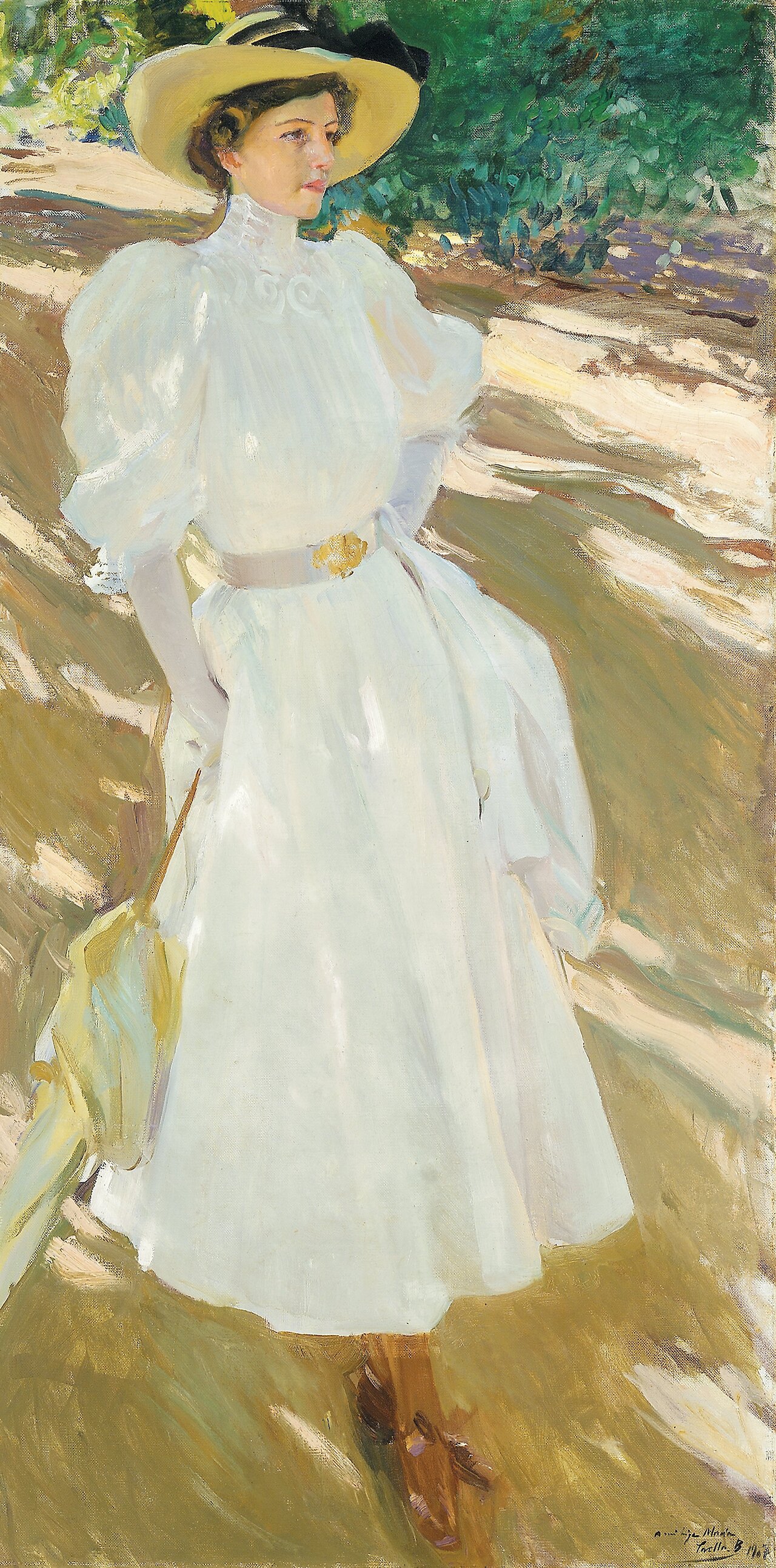
María at La Granja
by Joaquín Sorolla y Bastida, 1907
- Medium
- Oil
- Dimensions
- 67 1/8 x 33 1/2 in (1704.98 x 850.9 mm)
- Location
- San Diego Museum of Art
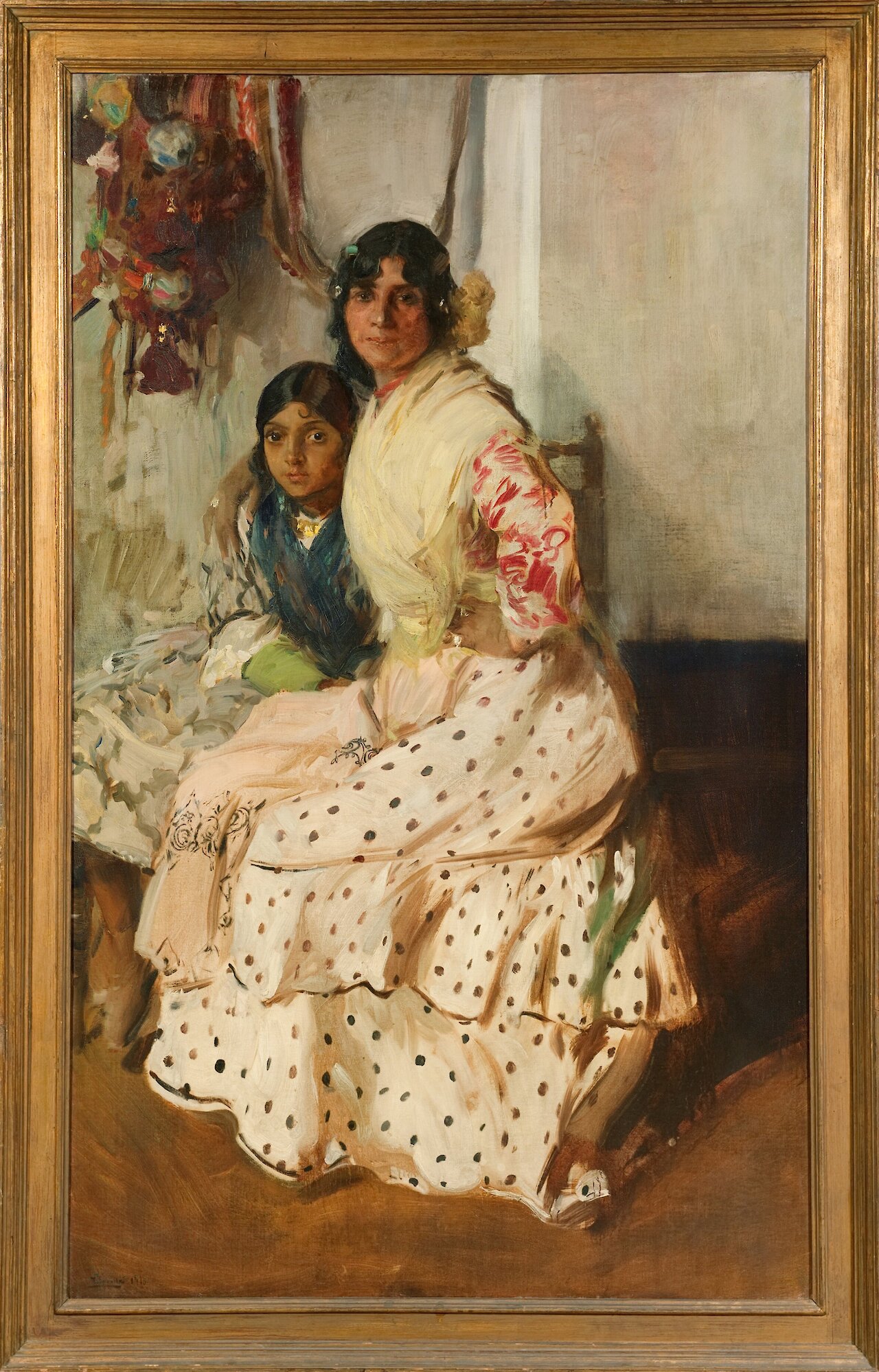
Pepilla and her Daughter
by Joaquín Sorolla y Bastida, 1910
- Medium
- Oil on canvas
- Dimensions
- Unframed: 181.6 × 110.5 cm (71 1/2 × 43 1/2 in); framed (Display): 200.7 × 129.5 × 10.2 × 8.3 cm (79 × 51 × 4 × 3 1/4 in)
- Notes
Handsome and proud, Pepilla sits with one arm around her daughter's shoulders and her other hand on her hip. Both mother and daughter gaze directly out at the viewer. Just as the mother's gesture tenderly protects yet presents her daughter, Joaquín Sorolla y Bastida expressed tenderness in his portraits of Spanish people, particularly women and children.
With his typical spontaneous, broad brushwork, Sorolla reveled in the effects of the warm Mediterranean light and air on the colors and patterns in the women's costumes. He preferred to paint even portraits outdoors, trying to achieve a spontaneous effect. "[N]o matter how much labor you may have expended on the canvas, the result should look as if it had all been done with ease and at a sitting," he said in 1909.
- Location
- J. Paul Getty Museum
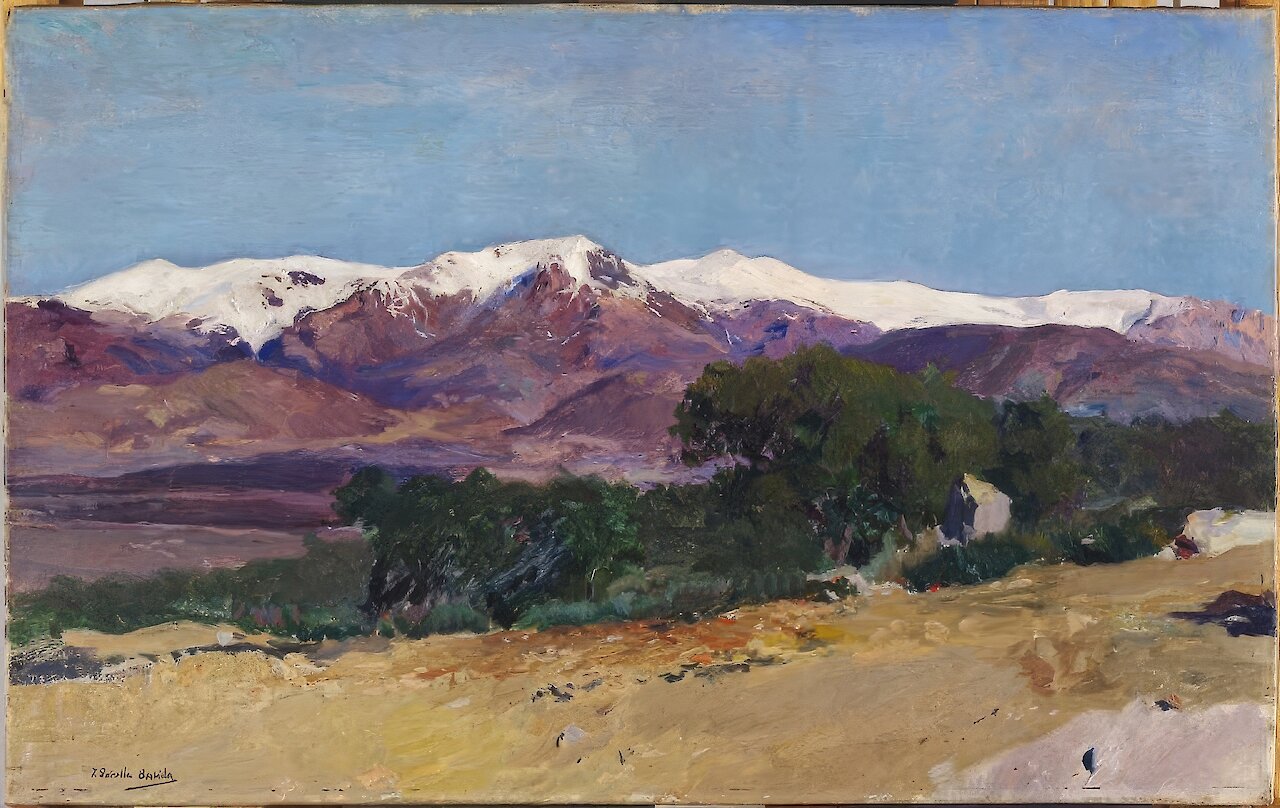
Seven-Peaks, Guadarrama
by Joaquín Sorolla y Bastida, 1906
- Medium
- Oil on canvas
- Dimensions
- 62.23 x 97.79 cm (24 1/2 x 38 1/2 in); framed: 81.28 x 117.79 x 8.26 cm (32 x 46 3/8 x 3 1/4 in)
- Credits
- Harvard Art Museums/Fogg Museum, Gift of Archer M. Huntington, Class of 1904
- Location
- Harvard Art Museums
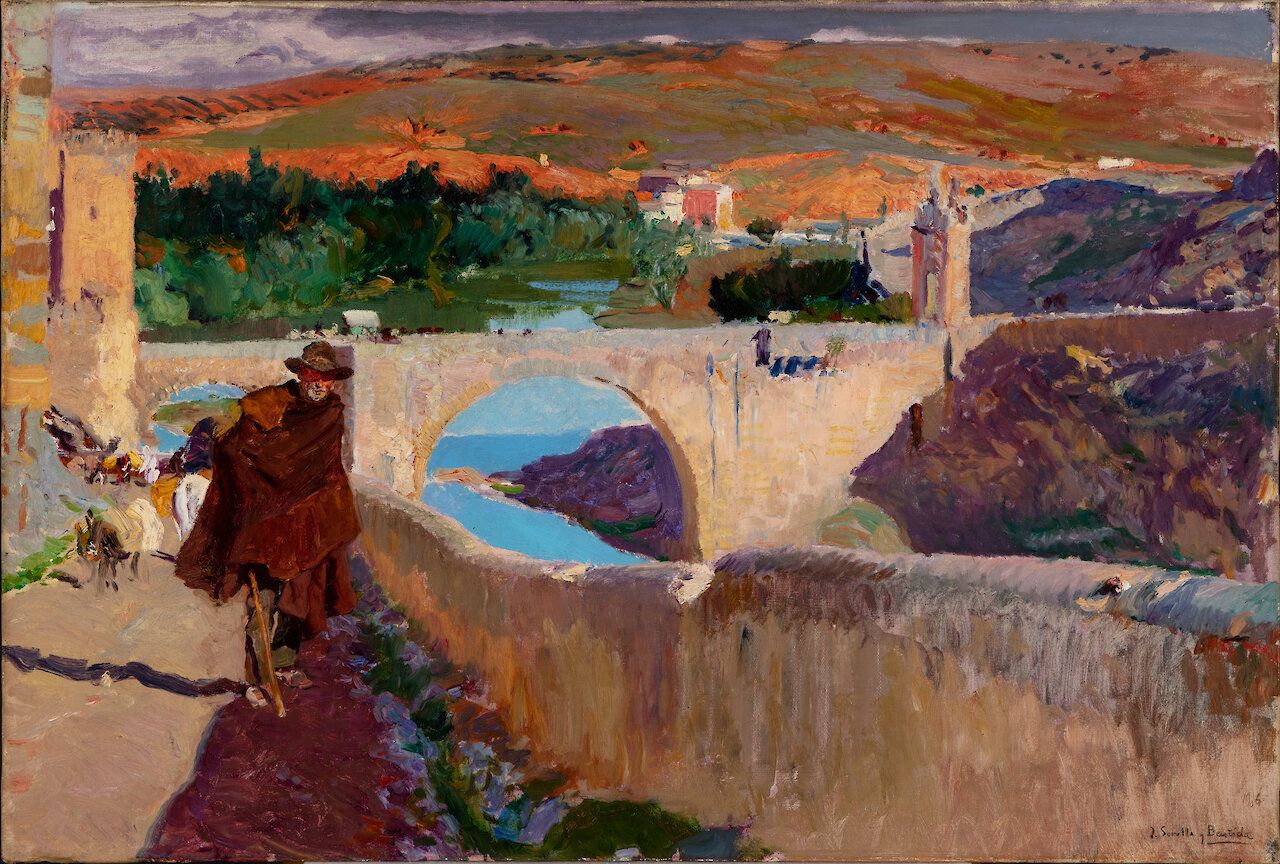
The Blind Man of Toledo
by Joaquín Sorolla y Bastida, 1906
- Medium
- Oil on canvas
- Dimensions
- 24 1/2 x 36 1/2 in (62.2 x 92.7 cm)
- Credits
- Meadows Museum, SMU, Dallas. Museum purchase, The Meadows Foundation Fund with private donations, MM.03.01. Photography by Kevin Todora.
- Location
- Meadows Museum
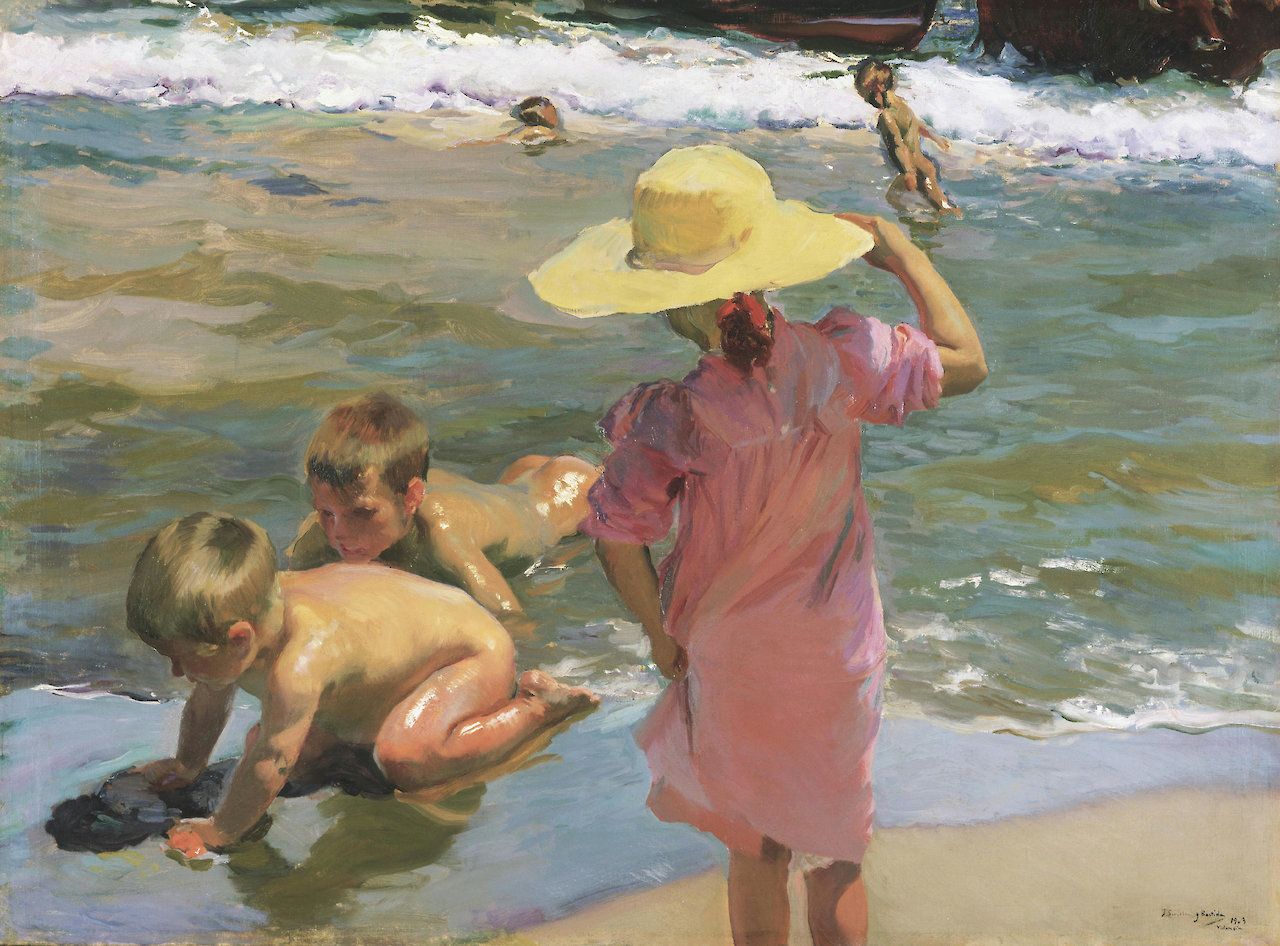
The Young Amphibians
by Joaquín Sorolla y Bastida, 1903
- Medium
- Oil on canvas
- Dimensions
- 37 7/8 × 51 3/8 in (96.2 × 130.5 cm)
- Credits
- Purchased with the W. P. Wilstach Fund, 1904
- Location
- Philadelphia Museum of Art
Suñol Muñoz-Ramos, Àlvar
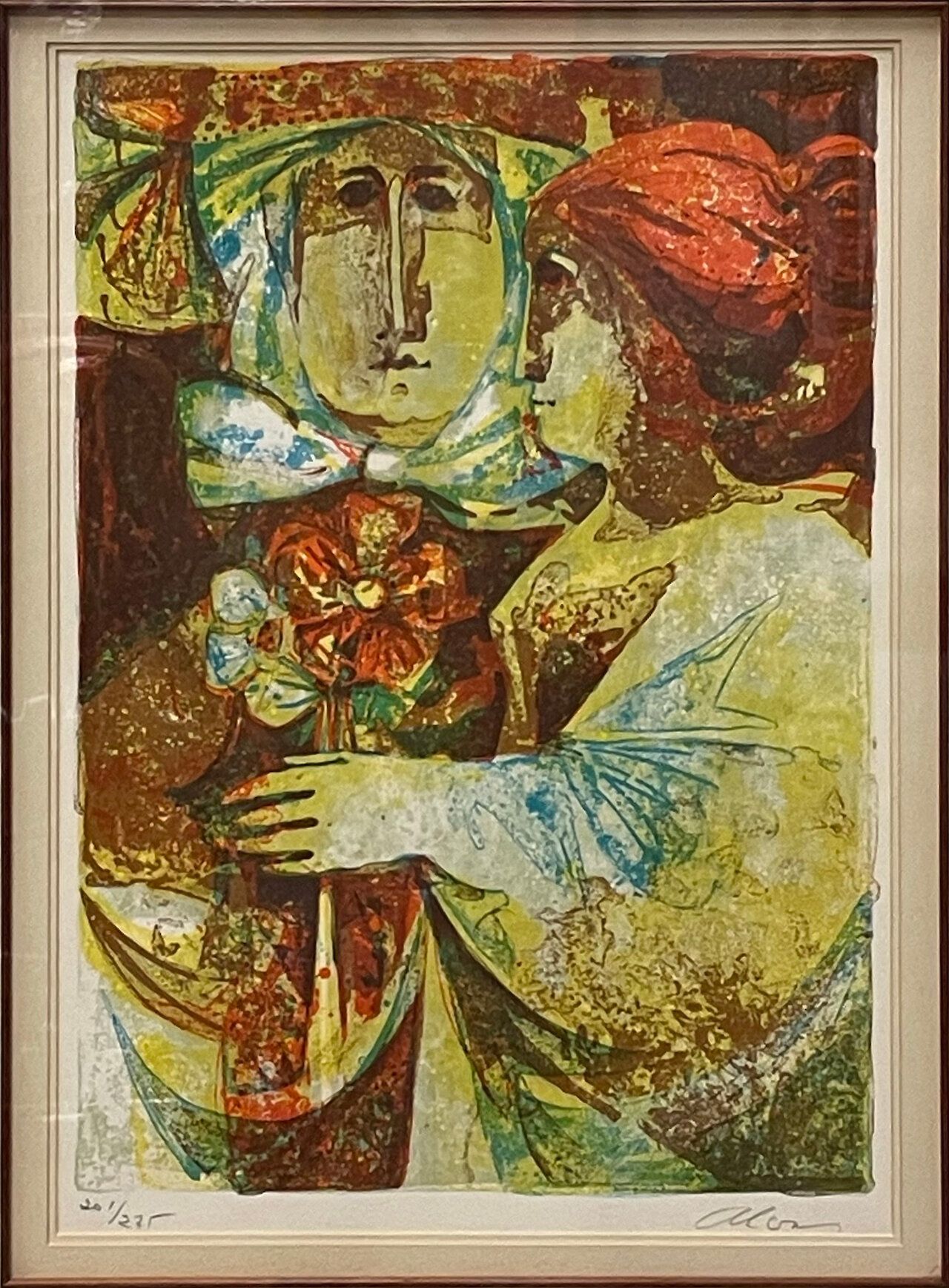
Untitled, n.d.
by Àlvar Suñol Muñoz-Ramos, 2017
- Medium
- Lithograph
- Dimensions
- 86.995 x 69.85 cm
- Credits
- Gifted by Dr. and Mrs. James W. Welch, Jr. Copyright of the Alexandria Museum of Art.
- Location
- Alexandria Museum of Art
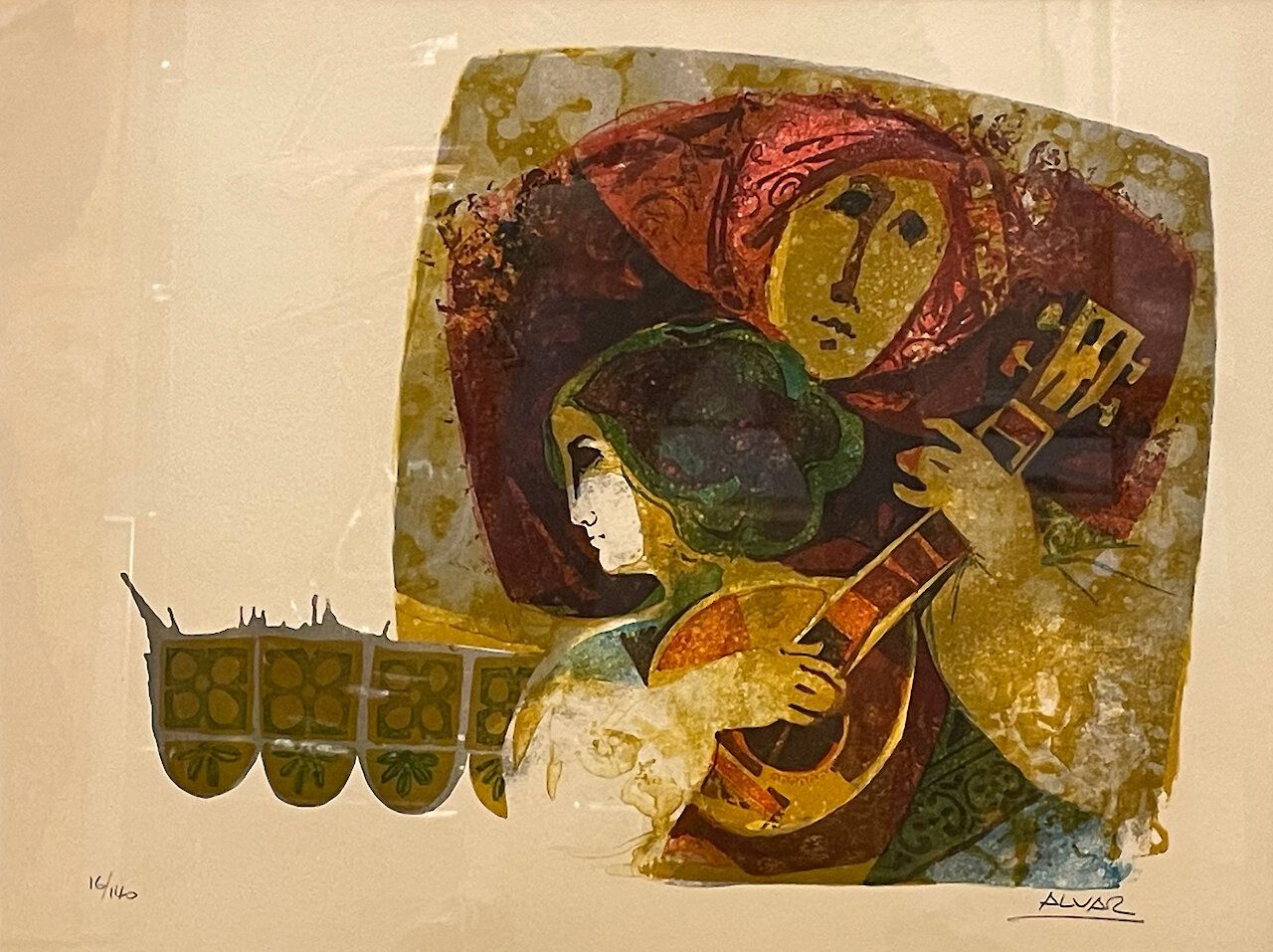
Untitled, n.d.
by Àlvar Suñol Muñoz-Ramos, 2019
- Medium
- Lithograph
- Dimensions
- 74.93 x 87.63 cm
- Credits
- Gifted by Dr. and Mrs. James W. Welch, Jr. Copyright of the Alexandria Museum of Art.
- Location
- Alexandria Museum of Art
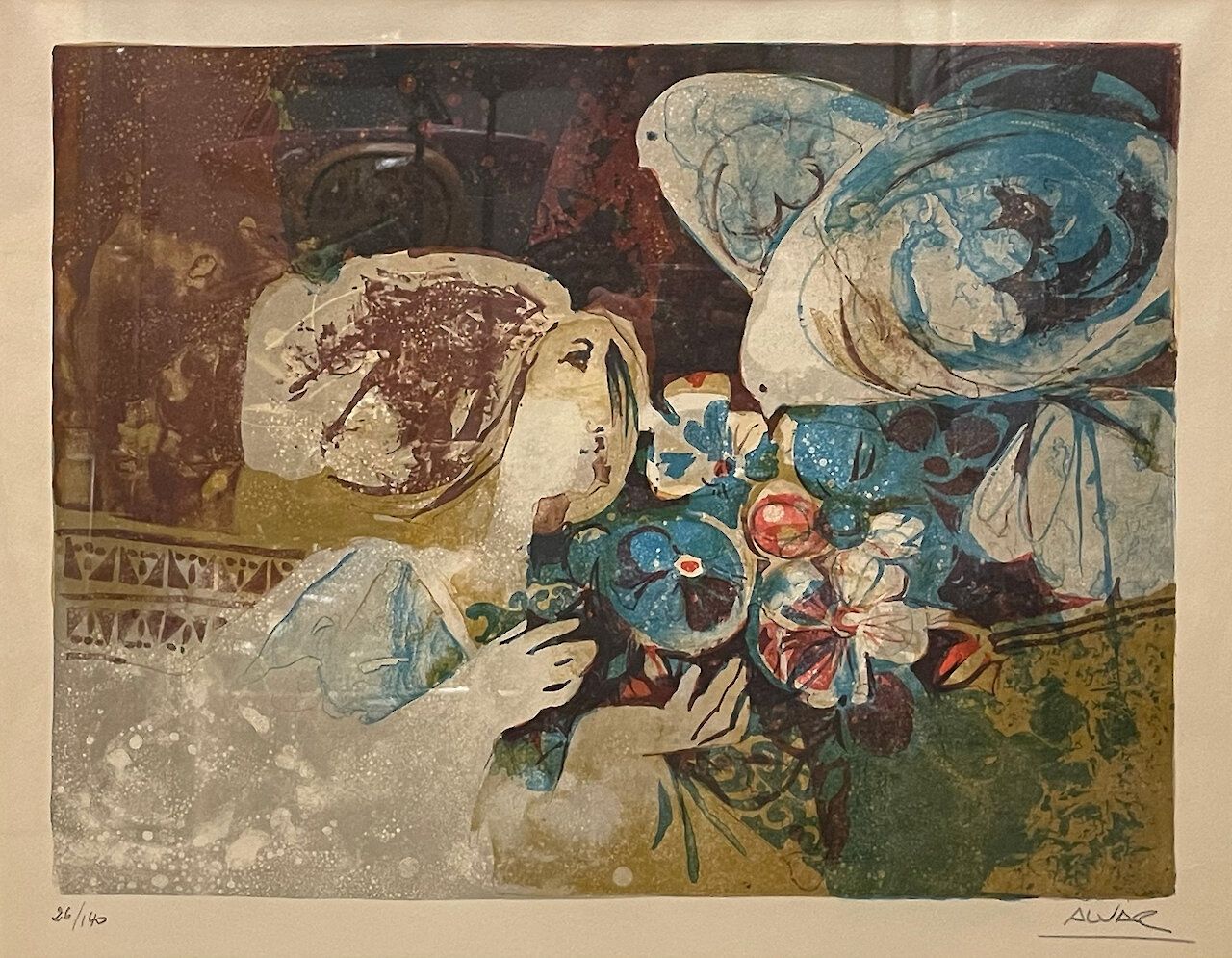
Untitled, n.d.
by Àlvar Suñol Muñoz-Ramos, 2019
- Medium
- Lithograph
- Dimensions
- 71.755 x 82.55 cm
- Credits
- Gifted by Dr. and Mrs. James W. Welch, Jr. Copyright of the Alexandria Museum of Art.
- Location
- Alexandria Museum of Art
Tàpies, Antoni
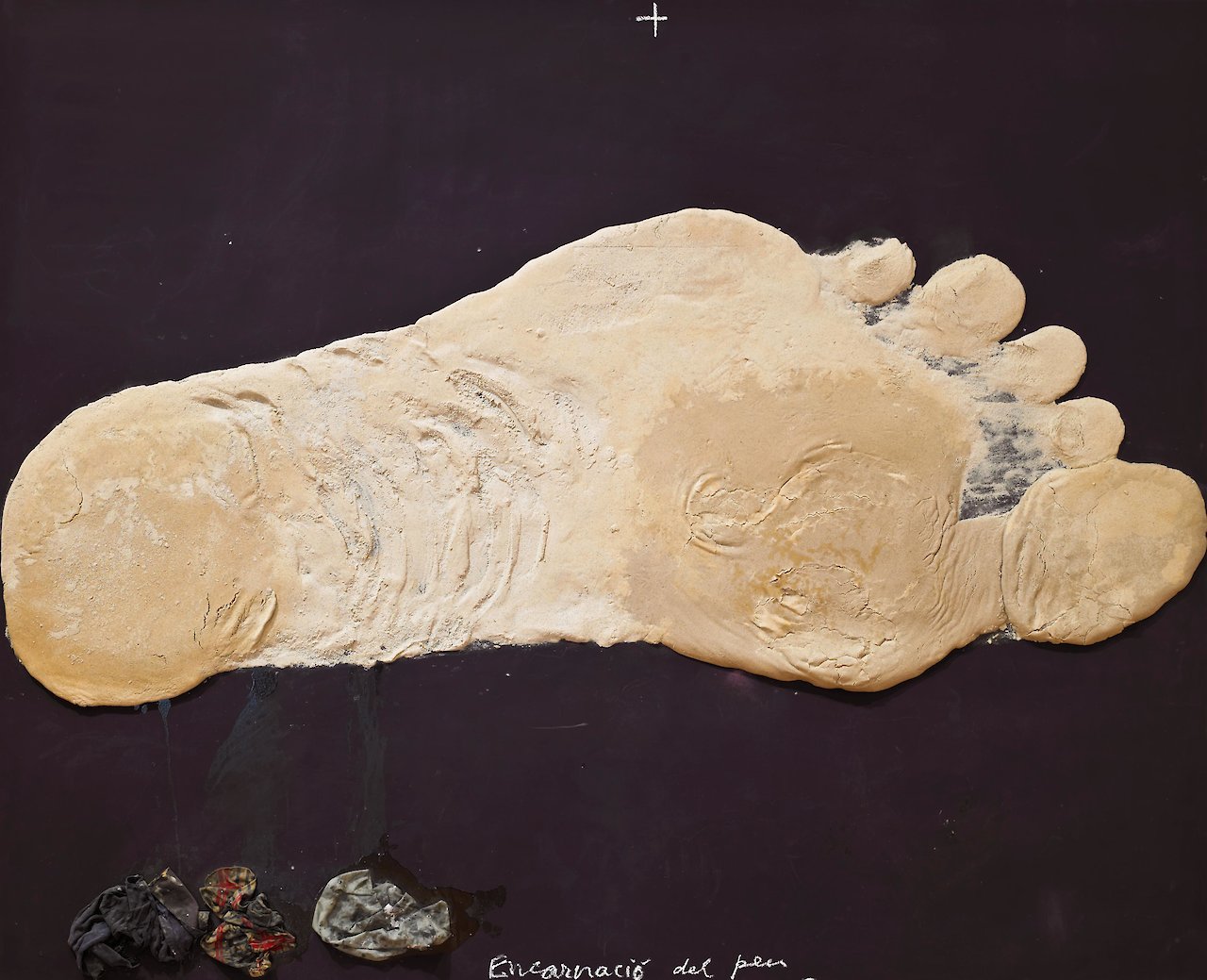
Encarnació del peu
by Antoni Tàpies, 1999
- Medium
- Mixed media and collage on wood
- Dimensions
- 7 ft. 2 1/2 in. x 8 ft. 10 1/4 in. (219.7 x 269.9 cm)
- Location
- Harn Museum of Art
Tovar, Alonso Miguel de
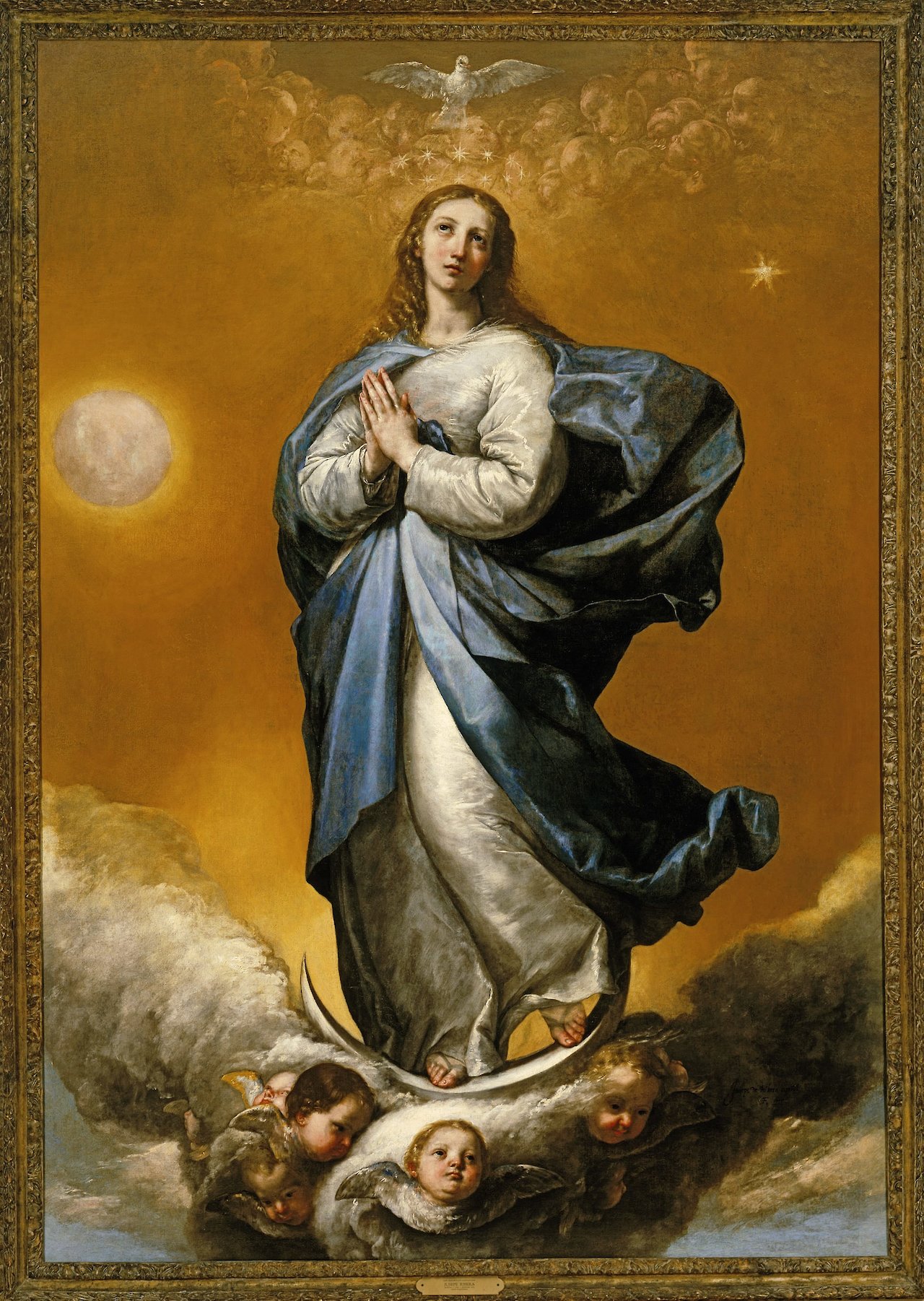
Immaculate Conception
by Alonso Miguel de Tovar, 1637
- Medium
- Oil on canvas
- Dimensions
- Framed: 105 7/8 x 75 1/2 in
- Location
- Columbia Museum of Art
Valdés Leal, Juan de
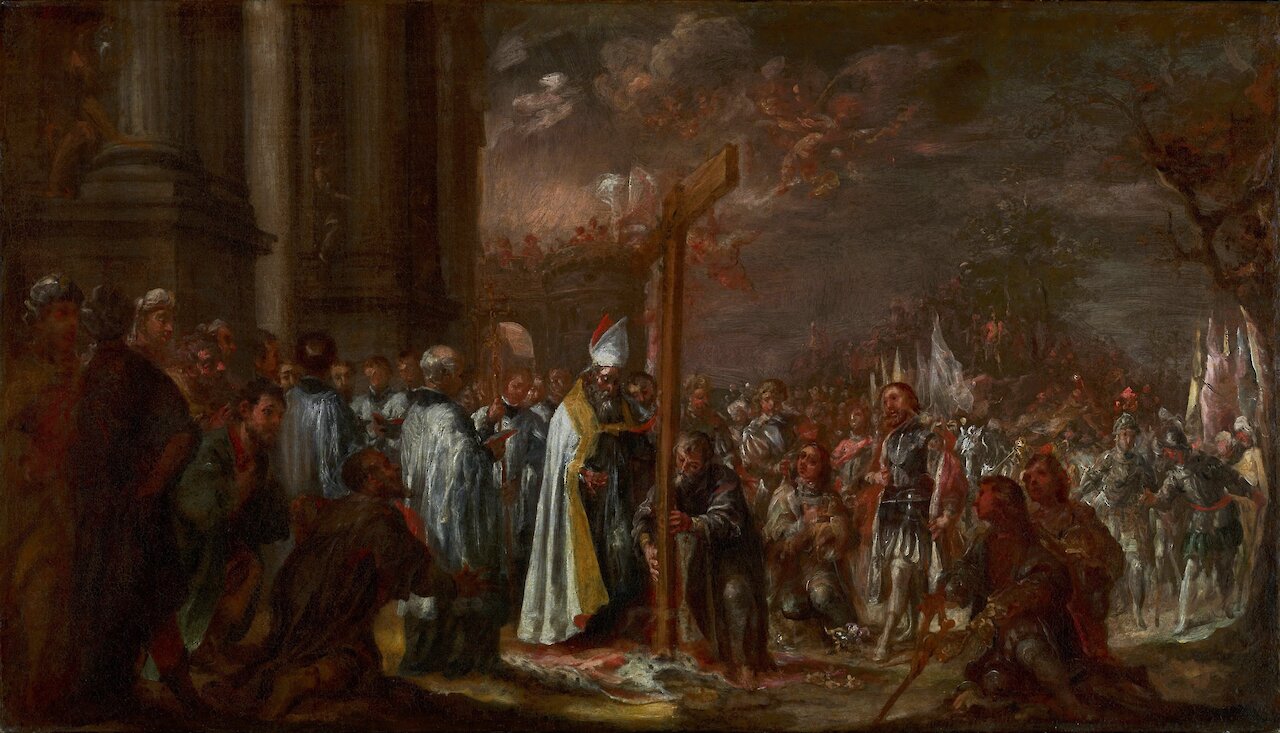
The Exaltation of the Cross
by Juan de Valdés Leal, circa 1680
- Medium
- Oil on canvas
- Dimensions
- Unframed: 62.9 × 107.6 cm (24 3/4 × 42 3/8 in); framed (approx.): 78.1 × 112.1 × 5.7 × 9.5 cm (30 3/4 × 44 1/8 × 2 1/4 × 3 3/4 in)
- Credits
- Anonymous gift in honor of Scott Schaefer
- Notes
Surrounded by a diverse array of onlookers, the Byzantine emperor Heraclius kneels and prepares to raise the holy cross. Barefoot and clad in drab robes, Heraclius has abandoned his fine clothing in order to pass through the gate of Jerusalem with humility. Standing beside Heraclius and clad in a bishop's mitre and white robe is the patriarch of Constantinople, Zachariah. Around this central pair, several spectators have dropped to their knees at the sight of the cross. In 628 A.D., having recovered the true cross from the Persians, Heraclius appeared at the gate of Jerusalem intending to enter in triumph. But as he and his followers approached the gate, stones fell from the walls, blocking his passage. An angel appeared and told him that in his opulent clothes, he could not enter through the same gate that Christ had humbly entered riding on a donkey. The message of this story is clear: the kingdom of heaven is open only to those who have forsaken the riches of the material world. The Exaltation of the Cross, in the form of a narrative series, appeared in several early Renaissance frescoes. But it is a subject rarely represented in painting. Juan de Valdés Leal frequently used painted sketches to work out his ideas for large-scale compositions. This oil sketch was created for his last major commission, a monumental fresco for the church of the Hospital de la Caridad in Seville, Spain. This preparatory sketch highlights Valdés Leal's agitated brushwork, thick impasto, vivid coloring, and dramatic sense of movement. Such painterly spontaneity perhaps reflects the spiritual fervor of this famously volatile painter.
- Location
- J. Paul Getty Museum
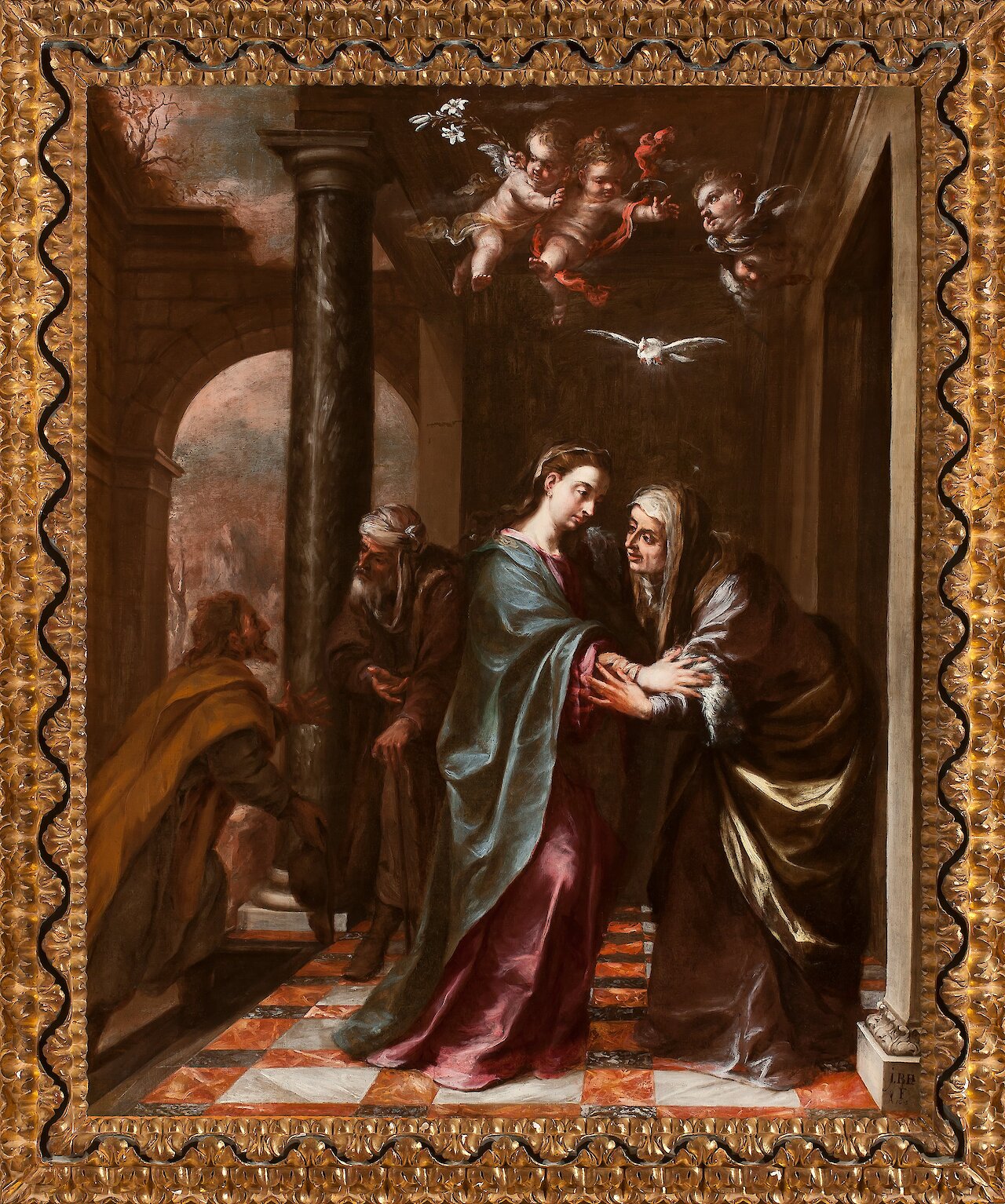
The Visitation
by Juan de Valdés Leal, 1673
- Medium
- Oil
- Dimensions
- 69 19/32 x 57 3/32 in (176.8 x 145 cm)
- Location
- San Diego Museum of Art
Vasquez, Antonio
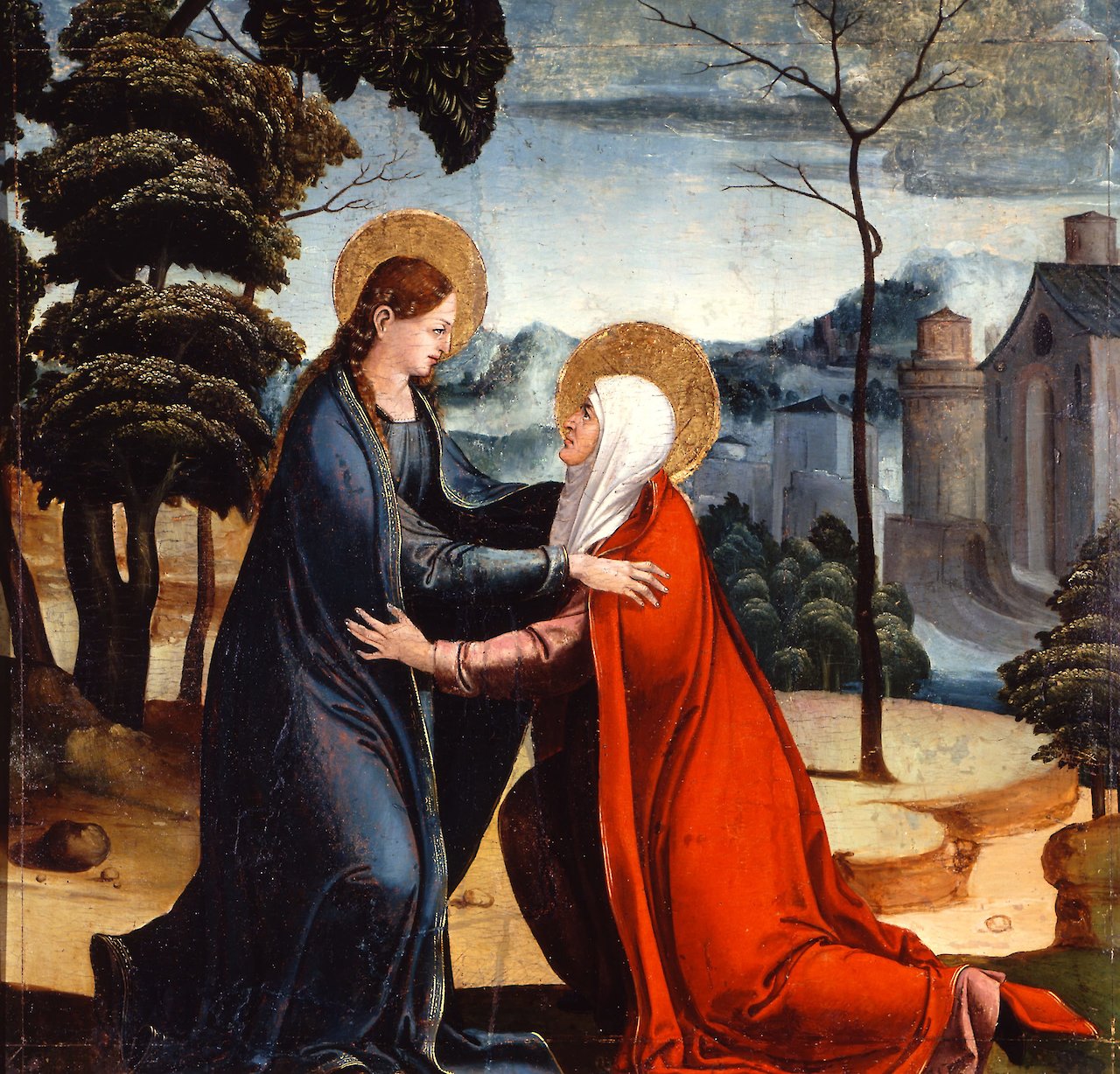
The Visitation
by Antonio Vasquez, 1525
- Medium
- Tempera, gold leaf and oil on wood panel
- Dimensions
- Framed: 35 x 35 1/2 in
- Location
- Columbia Museum of Art
Velázquez, Diego
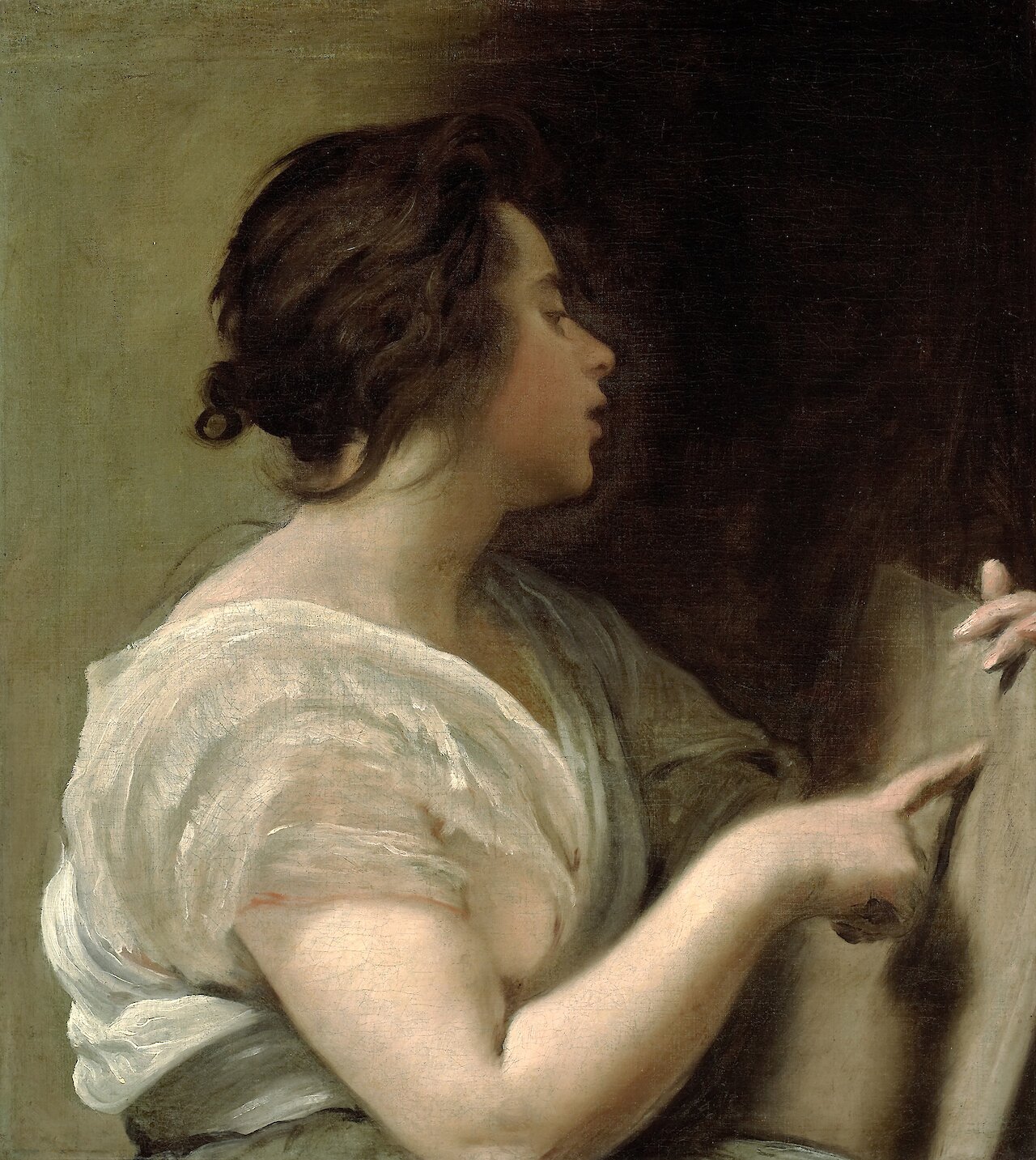
Female Figure (Sibyl with Tabula Rasa)
by Diego Velázquez, 1648
- Medium
- Oil on canvas
- Dimensions
- 25 1/2 x 23 in (64.8 x 58.4 cm)
- Credits
- Meadows Museum, SMU, Dallas. Algur H. Meadows Collection, MM.74.01. Photography by Michael Bodycomb.
- Location
- Meadows Museum
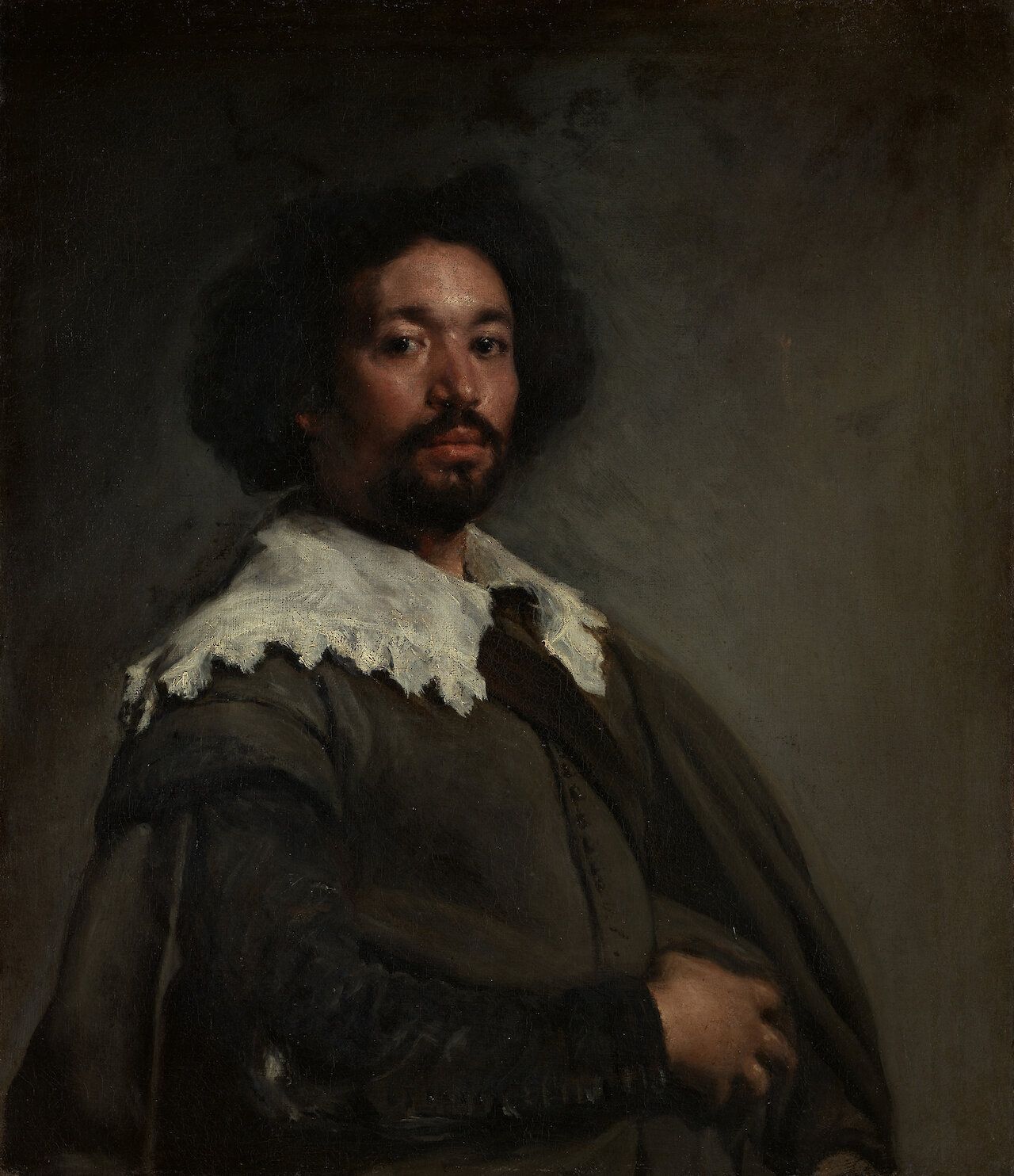
Juan de Pareja (ca. 1608–1670)
by Diego Velázquez, 1650
- Medium
- Oil on canvas
- Dimensions
- 32 x 27 1/2 in (81.3 x 69.9 cm)
- Credits
- Purchase, Fletcher and Rogers Funds, and Bequest of Miss Adelaide Milton de Groot (1876-1967), by exchange, supplemented by gifts from friends of the Museum, 1971.
- Location
- The Metropolitan Museum of Art (The Met)
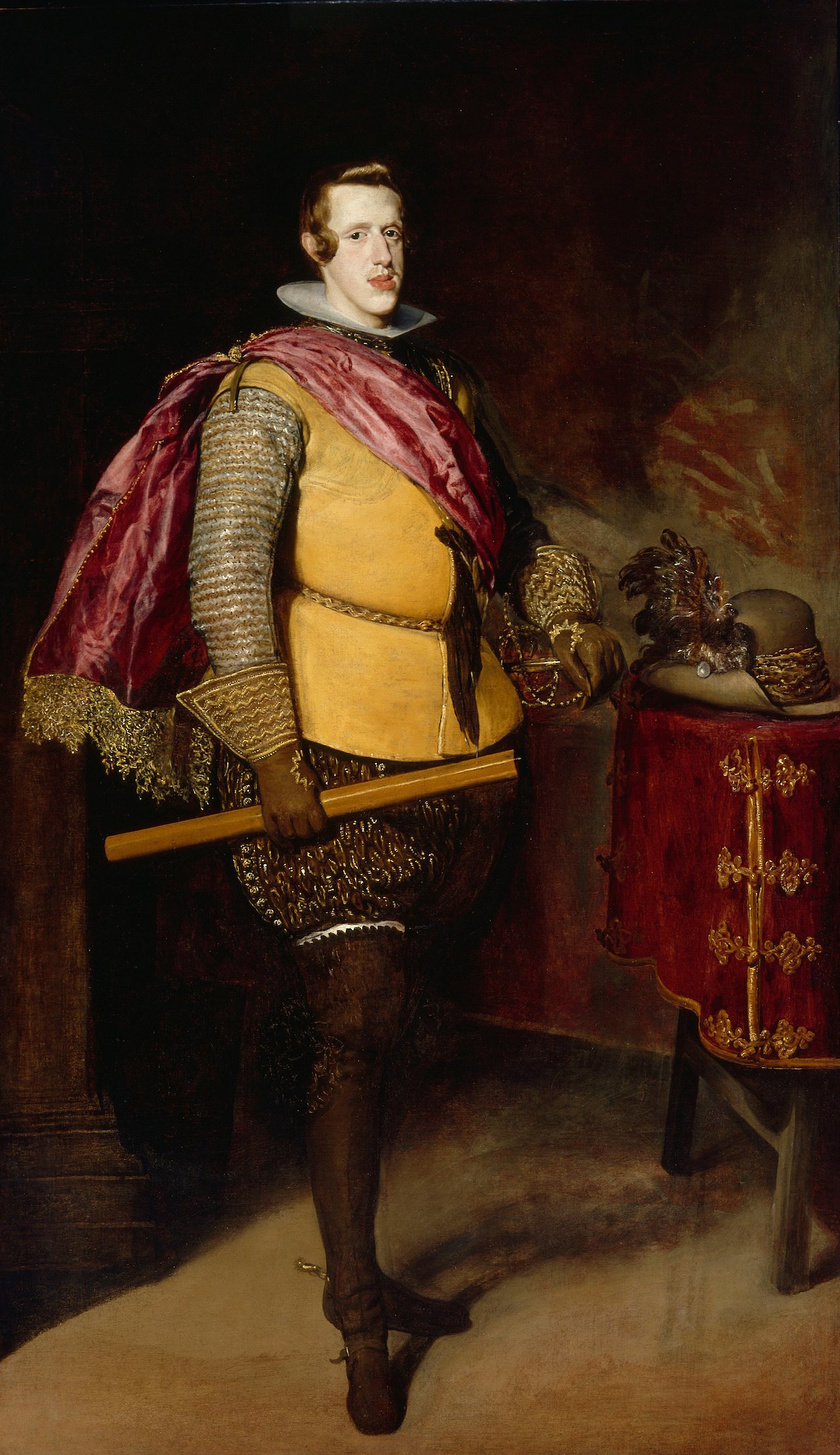
Philip IV, King of Spain
by Diego Velázquez, circa 1628–1631
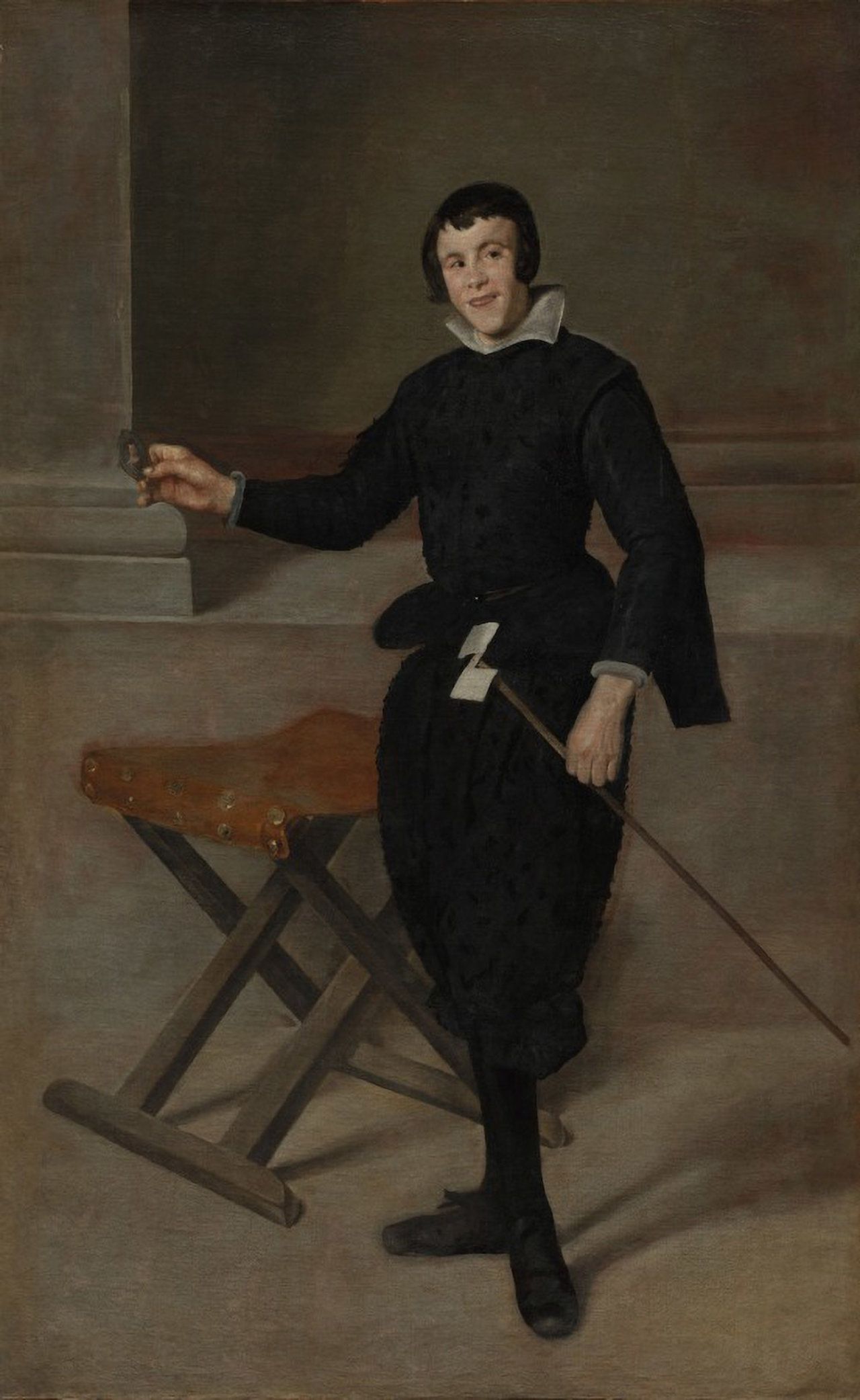
Portrait of the Jester Calabazas
by Diego Velázquez, circa 1631–1632
- Medium
- Oil on canvas
- Dimensions
- Framed: 199.3 x 133.1 x 12.7 cm (78 7/16 x 52 3/8 x 5 in.); Unframed: 175 x 106 cm (68 7/8 x 41 3/4 in.)
- Location
- Cleveland Museum of Art
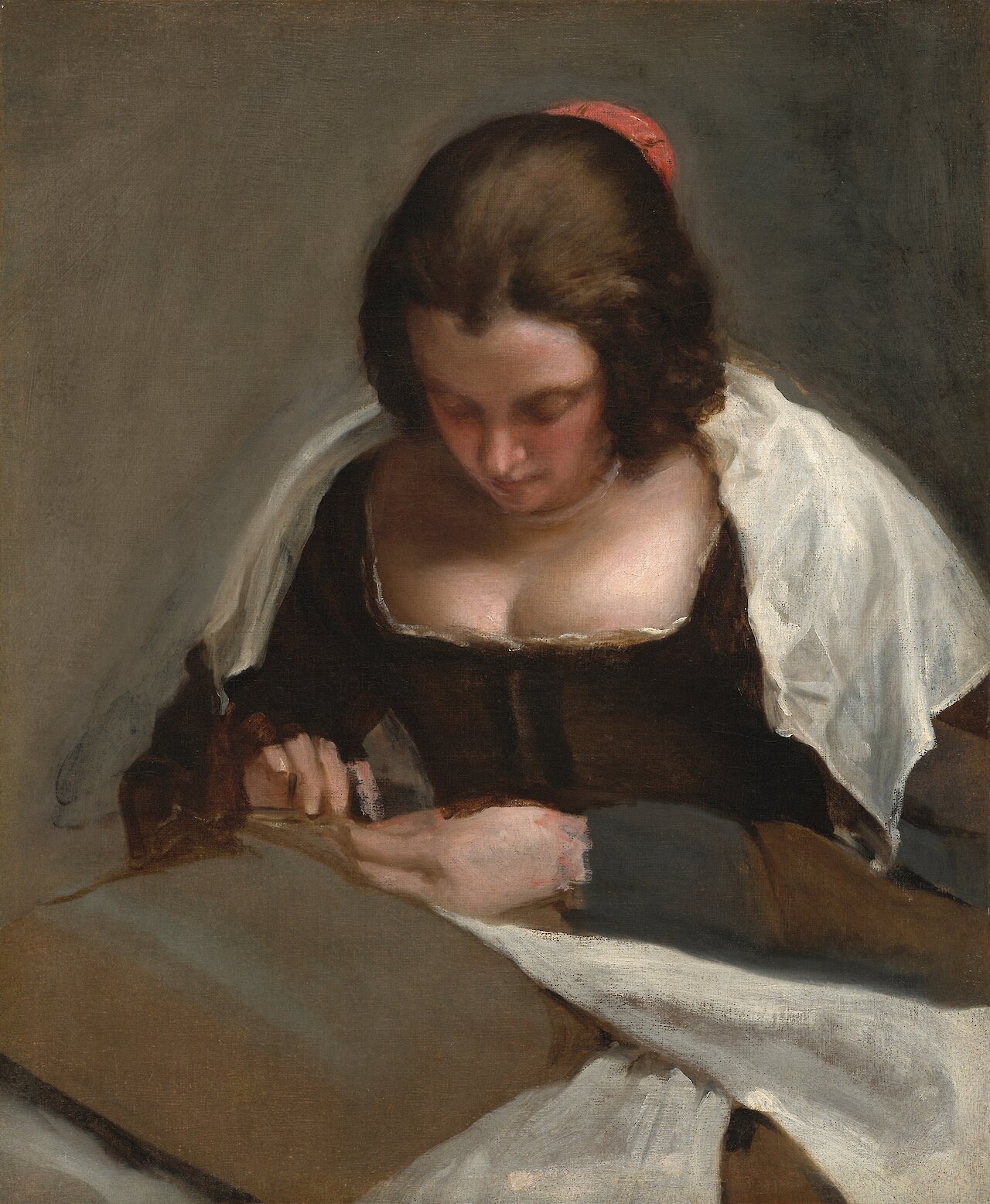
The Needlewoman
by Diego Velázquez, circa 1640–1650
- Medium
- Oil on canvas
- Dimensions
- 74 x 60 cm (29 1/8 x 23 5/8 in)
- Credits
- Andrew W. Mellon Collection.
- Location
- National Gallery of Art
Vicente, Esteban
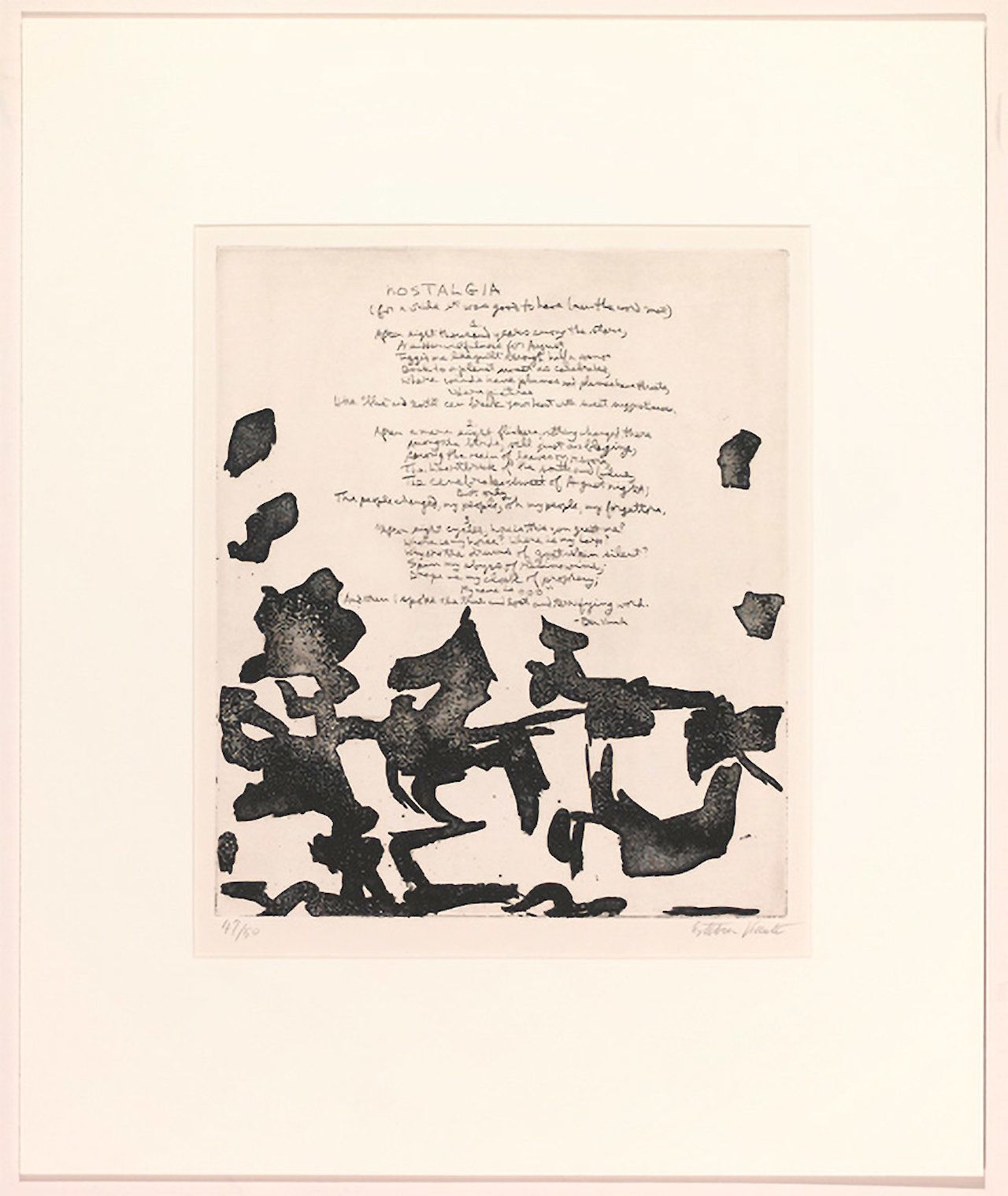
Nostalgia, from 21 Etchings and Poems Portfolio
by Esteban Vicente, 1951
- Medium
- Etching and lift ground aquatint with spit bite on Rives paper, 47/50
- Dimensions
- Image: 13 7/8 x 11 7/8 in (35.2425 x 30.1625 cm); Sheet: 19 7/8 x 16 7/8 in (50.4825 x 42.8625 cm)
- Location
- Allentown Art Museum
Vigarny, Felipe
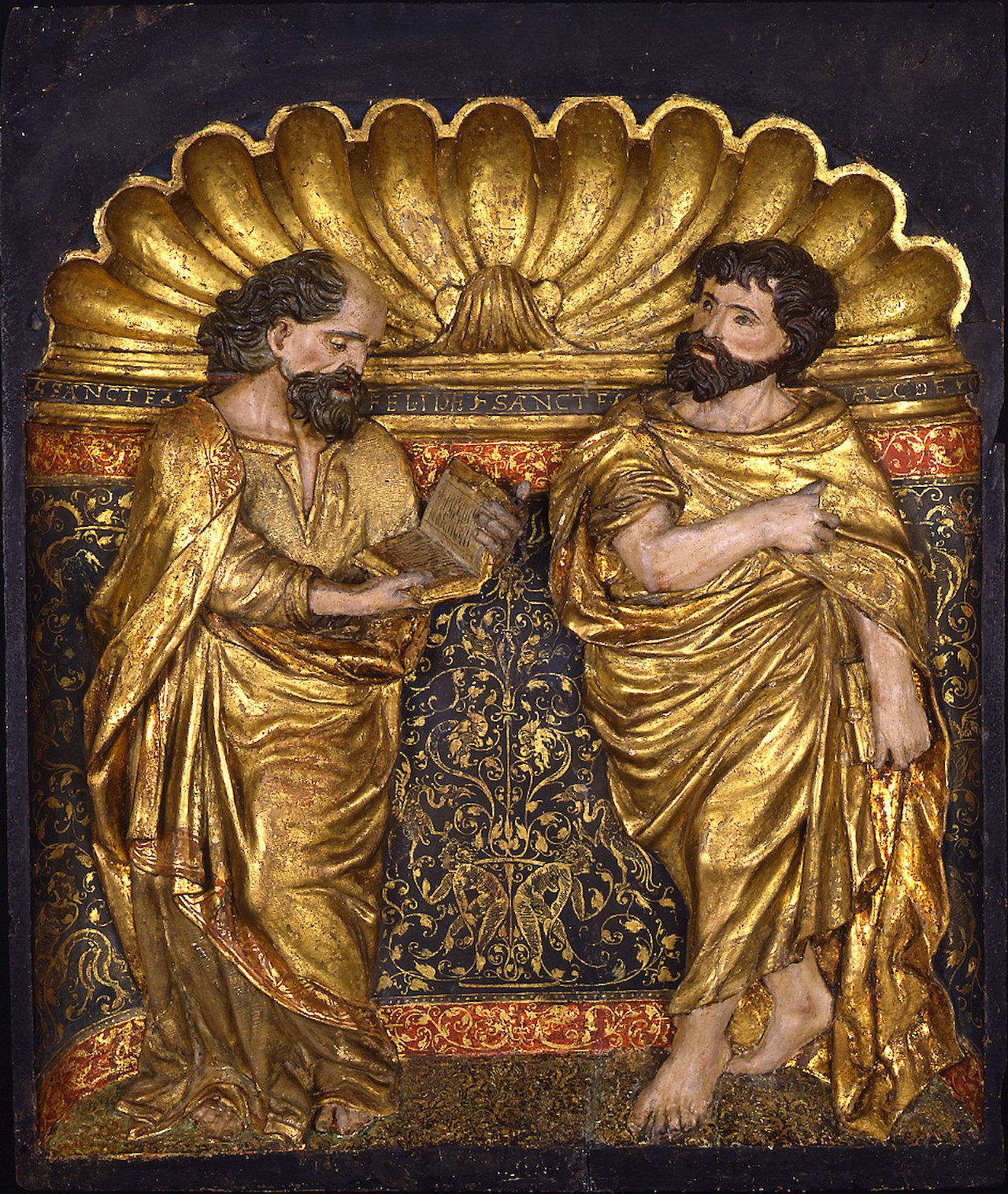
Apostles Philip and James, a section from the Burgos Retablos
by Felipe Vigarny, circa 1515
- Medium
- Carved relief, polychromed and gilded poplar wood
- Dimensions
- 31 x 27 x 3 in.
- Credits
- Gift of Mrs. George C. Keiser
- Location
- Rollins Museum of Art
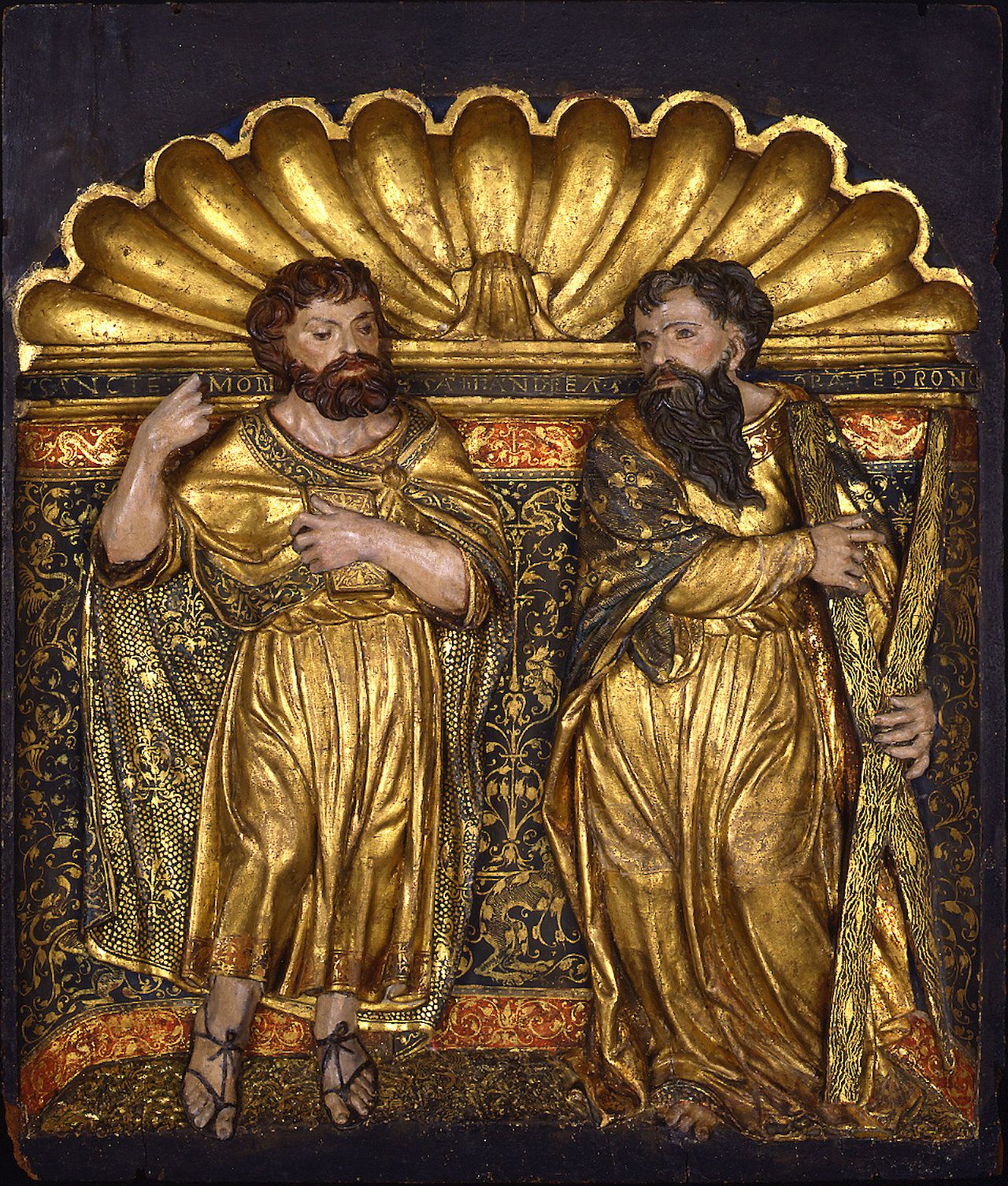
Apostles Simon-Peter and Andrew, a section from the Burgos Retablos
by Felipe Vigarny, circa 1515
- Medium
- Carved relief, polychromed and gilded poplar wood
- Dimensions
- 31 1/8 x 26 3/4 x 2 3/4 in
- Credits
- Gift of Mrs. George C. Keiser
- Location
- Rollins Museum of Art
Villabrille y Ron, Juan Alonso
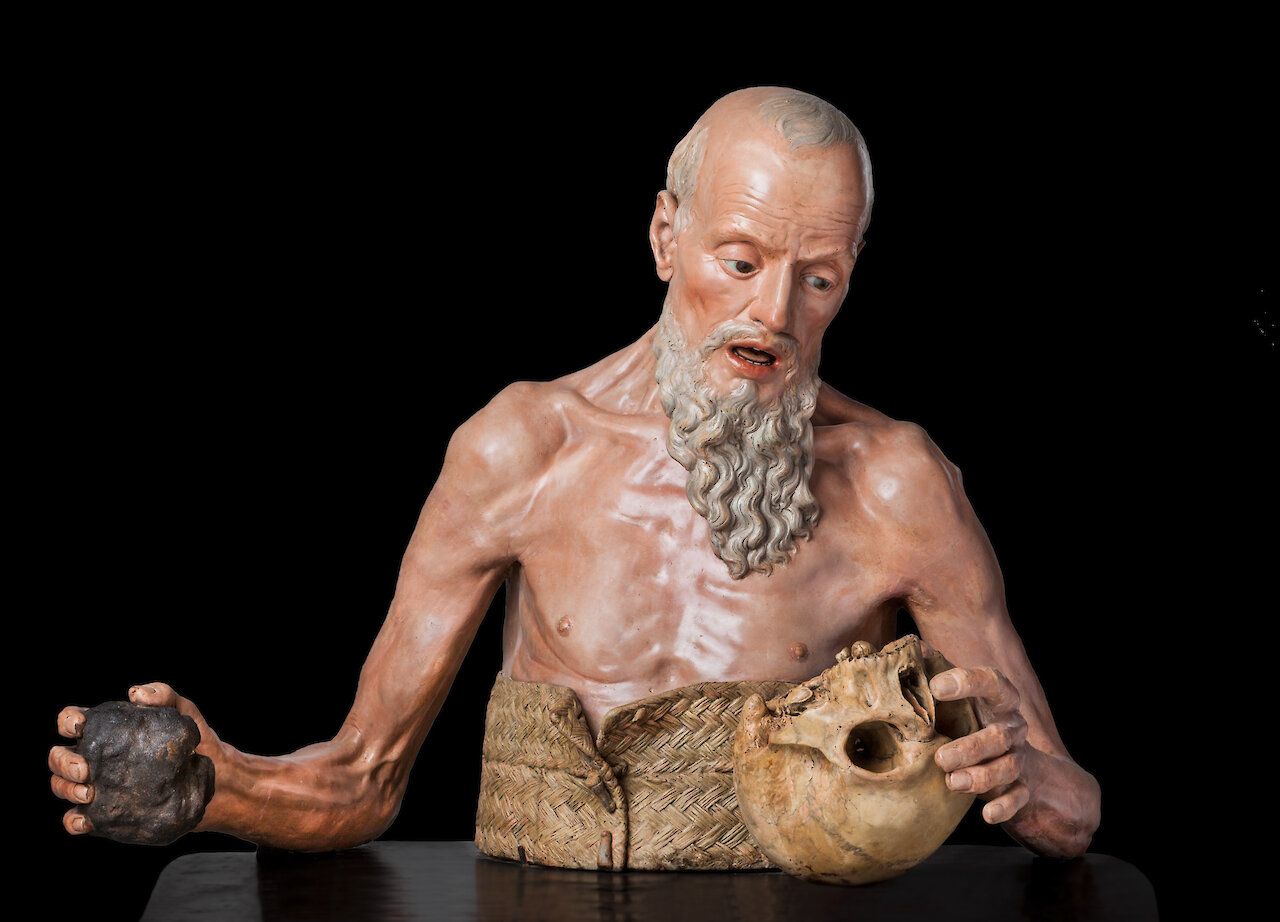
Saint Paul the Hermit
by Juan Alonso Villabrille y Ron, circa 1715
- Medium
- Polychromed terracotta
- Dimensions
- 24 x 30 x 18 1/2 in (61 x 76.2 x 47 cm)
- Credits
- Meadows Museum, SMU, Dallas. Museum purchase thanks to a gift from Jo Ann Geurin Thetford in Honor of Dr. Luis Martín, MM.2013.01. Photography by Dimitris Skliris.
- Location
- Meadows Museum
Ximénez Donoso, José
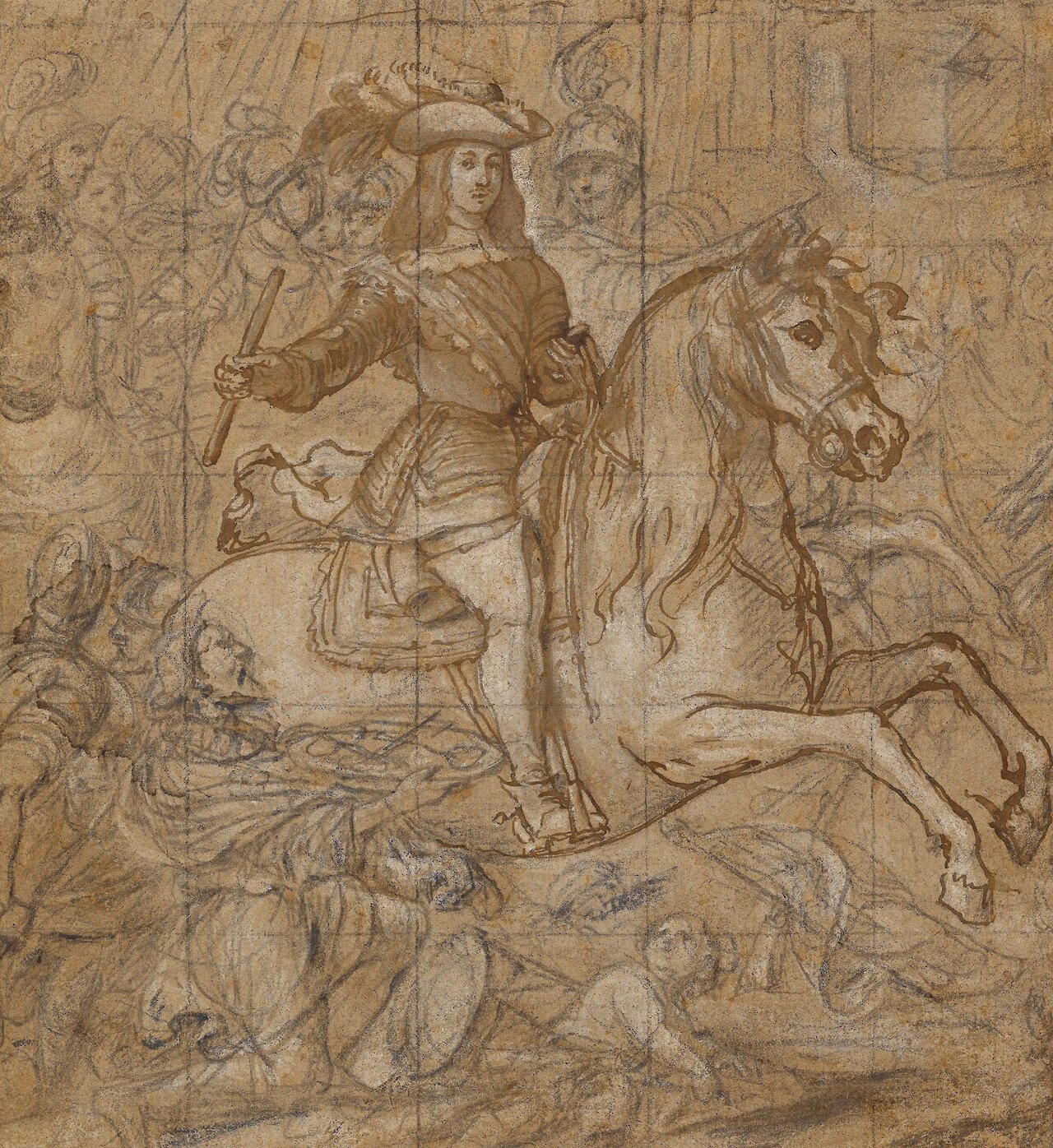
Equestrian Portrait of Don Juan José of Austria
by José Ximénez Donoso, circa 1660–1680
- Medium
- Brown ink and brown wash over black chalk, heightened with white gouache, squared in black chalk (recto); black chalk (verso)
- Dimensions
- 23.2 × 21.3 cm (9 1/8 × 8 3/8 in)
- Notes
A highly successful and ruthless general, Don Juan José of Austria suppressed an anti-Spanish uprising in Naples when he was only eighteen years old. This scene shows his triumphal entry following the suppression of the revolt. A young fisherman had led a protest against a new tax on fruit imposed by the aristocracy; the protest later turned into an insurrection aiming at slaughtering the nobility. As the general leads his cavalry into the city, trampling a child underfoot, he receives the homage of the population in the person of the bearded man kneeling to the left, who offers a platter containing three utensils, perhaps representing the keys of the city.
José Ximénez Donoso copied the equestrian figure from a well-known etching by Jusepe de Ribera but added soldiers and spectators to the background. The artist drew the whole scene in black chalk but reinforced the forms of Don José and his horse, copied from the print, in pen and brown ink. The drawing is squared for transfer, implying that the composition was intended for a painting or perhaps a print.
- Location
- J. Paul Getty Museum
Yáñez de la Almedina, Fernando
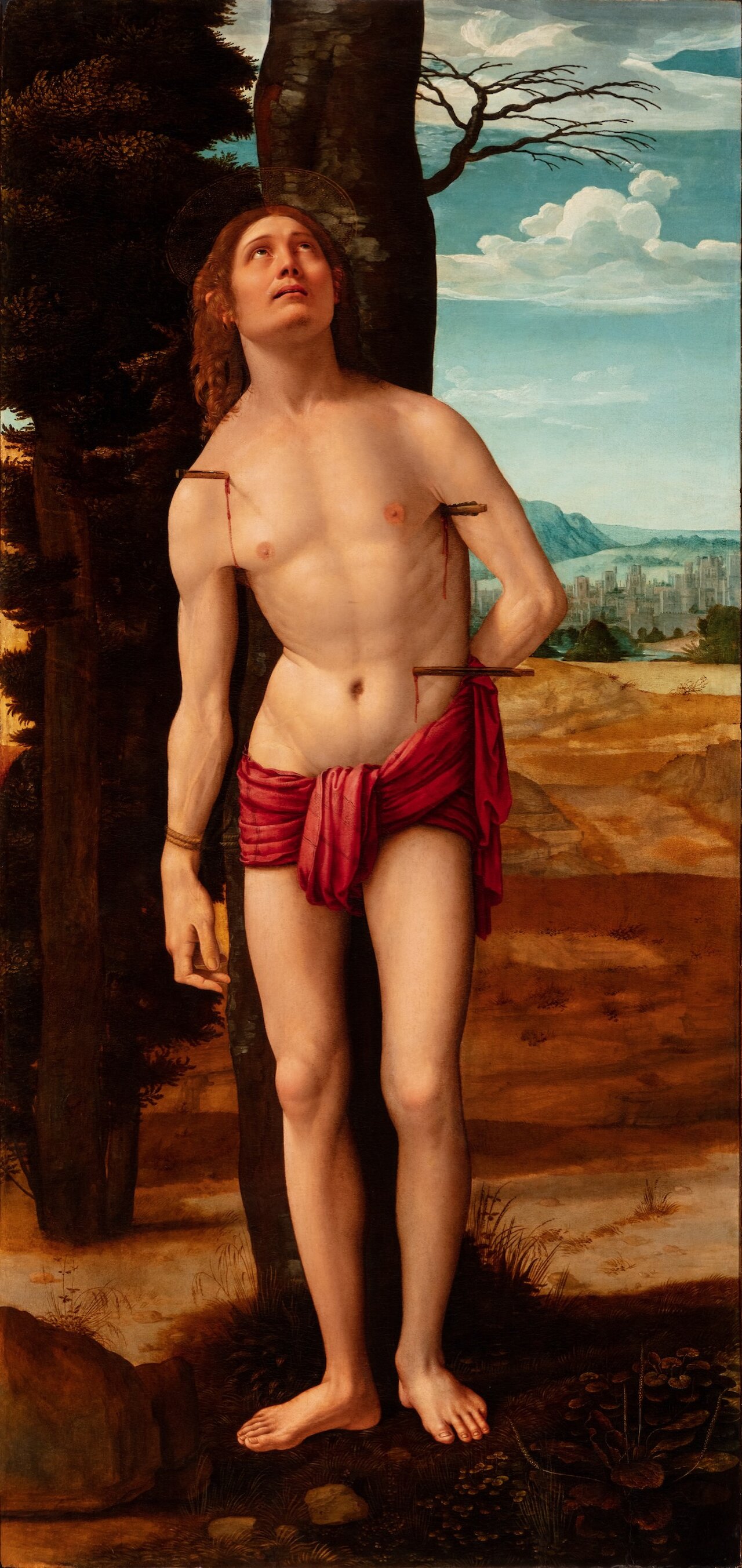
Saint Sebastian
by Fernando Yáñez de la Almedina, circa 1506
- Medium
- Oil on panel
- Dimensions
- 69 3/8 x 32 7/8 in (176.2 x 83.5 cm)
- Credits
- Meadows Museum, SMU, Dallas. Algur H. Meadows Collection, MM.76.02. Photography by Kevin Todora.
- Location
- Meadows Museum
Zamacois y Zabala, Eduardo
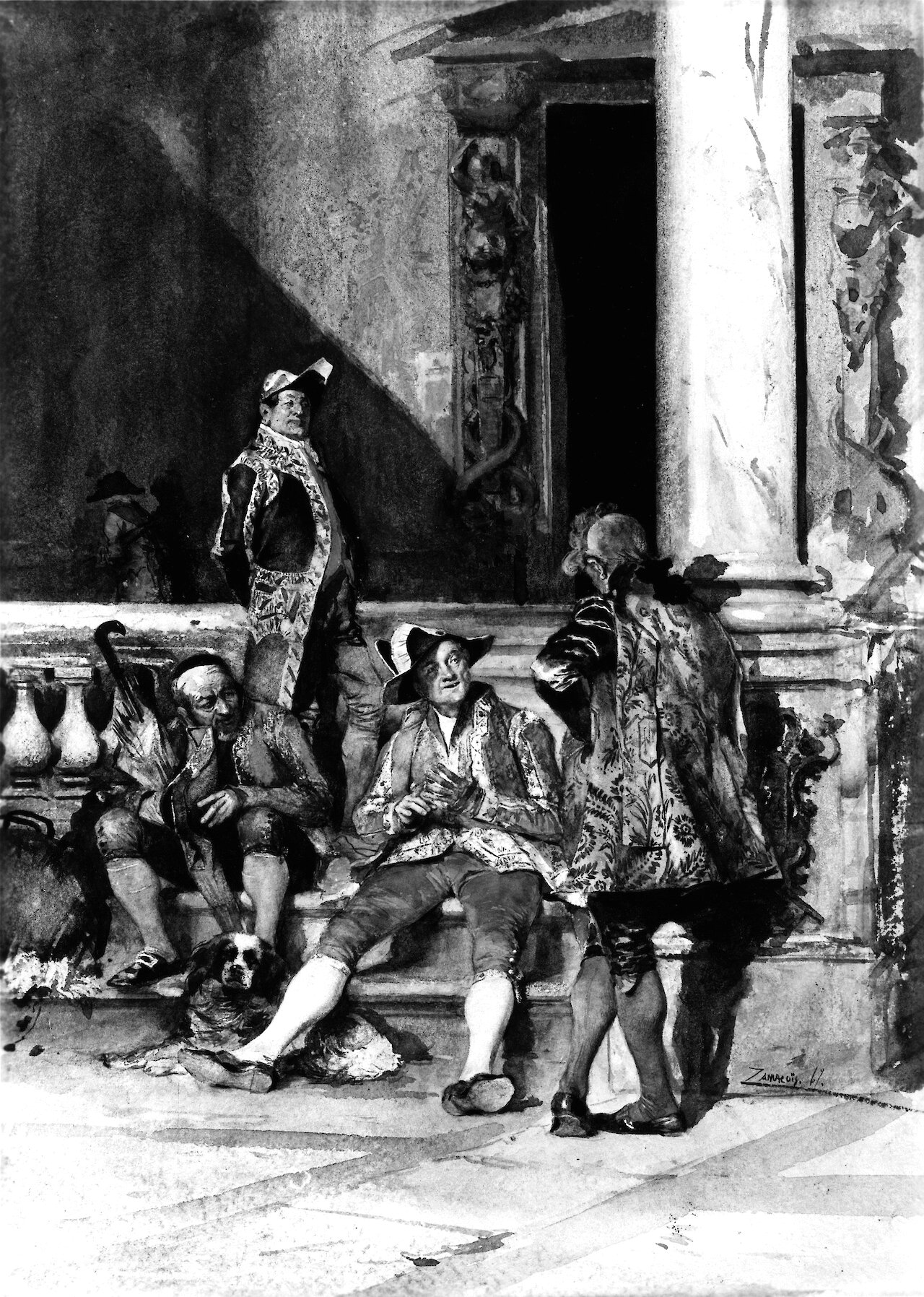
Waiting At The Church Porch
by Eduardo Zamacois y Zabala, 1867
- Medium
- Watercolor on paper
- Credits
- Acquired by William T. or Henry Walters
- Location
- Walters Art Museum